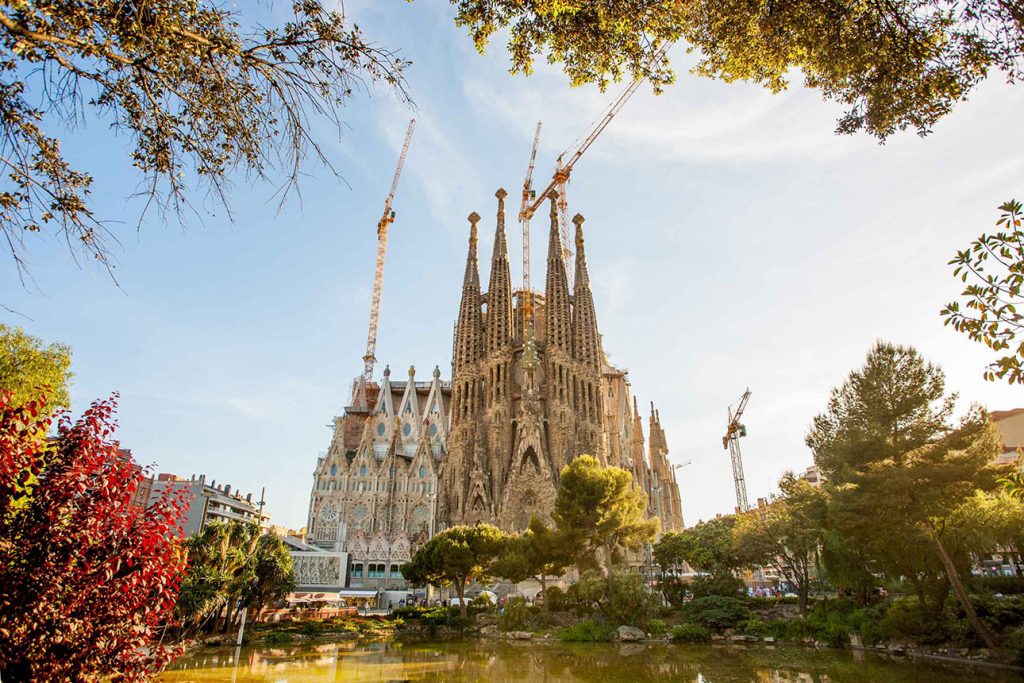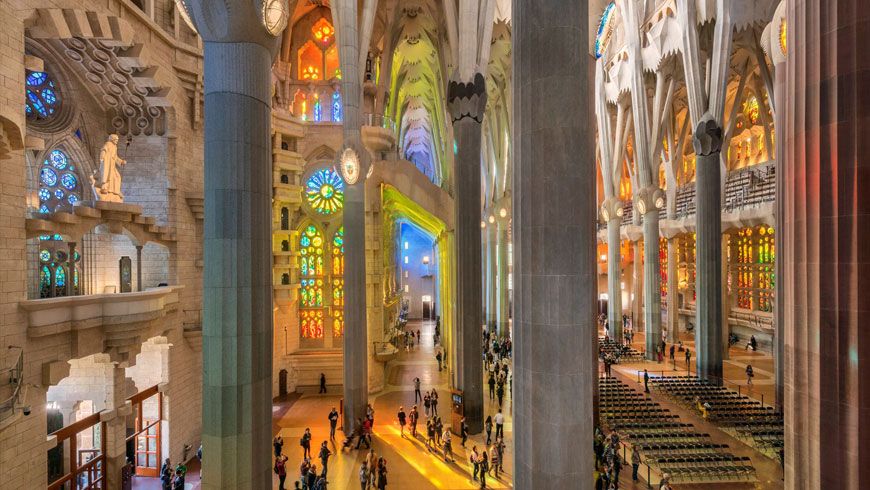Sagrada Familia Opening Hours 2023
As one of the most popular attractions in Spain, Barcelona’s Sagrada Familia is the world’s biggest unfinished Roman Catholic Church and a masterpiece of the genius Antoni Gaudi. It is now expected to be completed in 2026, making it the tallest basilica in the world. A visit to this architectural wonder is a definite must when you are in Barcelona. Read more to find out the opening hours of Sagrada Familia.
Sagrada Familia Opening Hours
What are the general opening hours of Sagrada Familia?
- November – February: Monday to Saturday – 9:00 am to 6:00 pm; Sunday – 10:30 am to 6:00 pm
- March – October: Monday to Saturday – 9:00 am to 7:00 pm; Sunday – 10:30 am to 7:00 pm
- April – September: Monday to Saturday – 9:00 am to 8:00 pm; Sunday – 10:30 am to 8:00 pm.
What are the special opening hours of Sagrada Familia?
9:00 am to 2:00 pm – 25 and 26 December, 1 and 6 January
Sagrada Familia Mass Timings
International Mass
International masses are held every Sunday at Sagrada Familia. These are conducted by the Archdiocese of Barcelona in multiple languages.
Date – Every Sunday
Time – 9:00 am
Note – Anyone can attend the mass and there is no charging fee. However, the seating capacity is limited so arrive early enough to save a spot.
Extraordinary Masses
Sagrada Familia especially hosts extraordinary masses throughout the year. Attending these events can be through invitation only. The date and timings of the masses can be checked on the calendar of masses. Some of the extraordinary masses are broadcasted live. You can find this information on the calendar of masses as well.
Attend Masses at Sagrada Familia
Best Time to Visit Sagrada Familia
Weekday vs Weekend
Best Time to Visit During The Day
Best Time of The Year
Mondays are the best day of the week to visit Sagrada Familia. Many other attractions in Barcelona are closed on Mondays and tourists assume that Sagrada Familia is closed too.
Plan Your Visit to Sagrada Familia
9:00 am to 11:00 am – April to September is the peak tourist season at Sagrada Familia. The best time to visit and avoid crowds is at 9:00 am in the morning when Sagrada Familia opens. It is also the best time to go up Sagrada Familia’s towers since the crowd is relatively lesser between 9:00 am and 11:00 am in the morning than the rest of the day.
5:00 pm to 6:00 pm – Evenings are the best time to see Sagrada Familia’s interiors. The sunset makes it the perfect time to click great pictures of the interiors. Lights shine through the glasses during the golden hour making the basilica look like paradise.
April to September is the prime tourist season with pleasant weather. However, it can get very crowded this time of the year. So you can also plan your visit during the off-season since Sagrada Familia is open throughout the year.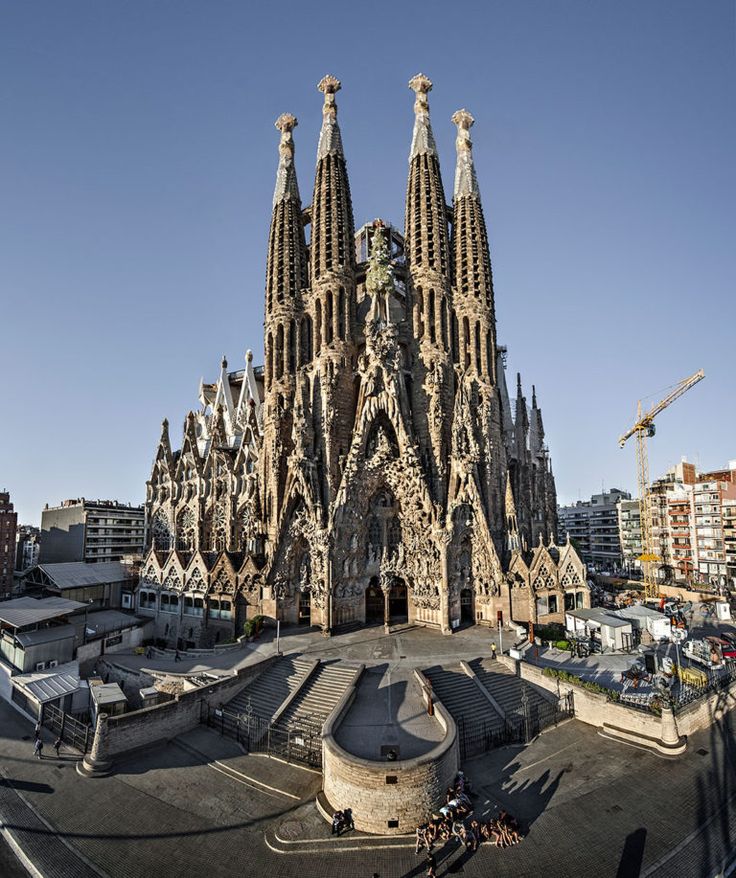
How Long Do you Need to Tour Sagrada Familia?
It takes roughly 2 hours to explore Sagrada Familia thoroughly.
You can stay for however long you want with one entrance ticket. So take in every moment of your visit to Sagrada Familia and do not miss the crypt and the Gaudi museum in the basement.
Sagrada Familia has been under construction for over 140 years. It is an architectural masterpiece consisting of 3 huge and skillfully carved facades on the outside and heavenly interiors including stained glass windows, an apse, a crypt as well as an underground museum dedicated to Gaudi himself. So make sure to spend ample time exploring this monumental structure.
Book Sagrada Familia Tickets and Tours
Priority Access to Sagrada Familia + Escorted Entrance
Instant Confirmation
Mobile Ticket
Flexible Duration
More details +
Fast Track Guided Tour of Sagrada Familia
Instant Confirmation
Mobile Ticket
1 hr.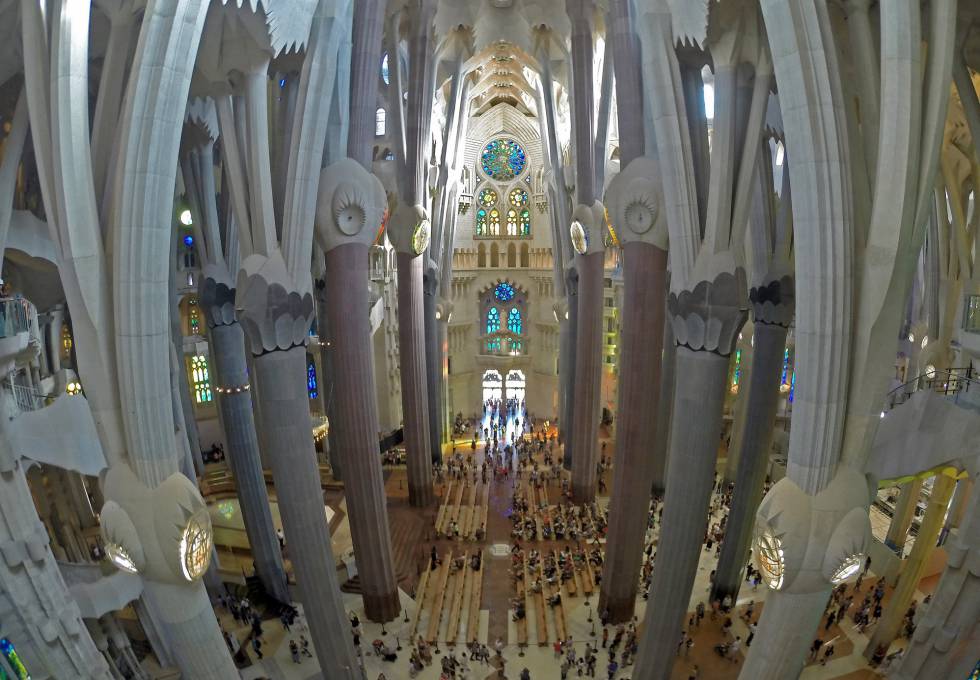
Guided Tour
More details +
Combo (Save 5%): Park Güell + Sagrada Familia Skip-the-Line Tickets
Instant Confirmation
Mobile Ticket
Flexible Duration
Guided Tour
More details +
€44.65
Fast Track Guided Tour to Sagrada Familia with Towers Access
Free Cancellation
Instant Confirmation
Mobile Ticket
1 hr. 30 min. – 2 hr.
Guided Tour
More details +
Best of Barcelona: Guided Tour of Park Güell and Sagrada Familia
Free Cancellation
Instant Confirmation
Mobile Ticket
3 hr.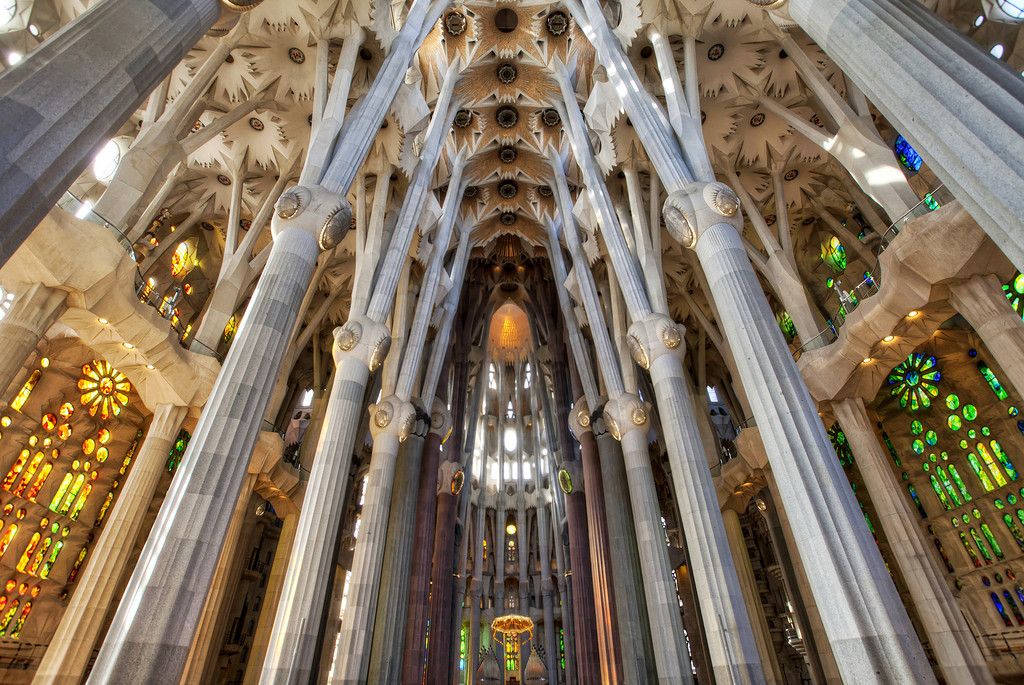
Guided Tour
More details +
Day Tour of Sagrada Familia, Casa Vicens & Casa Mila with Fast-Track Entry
Free Cancellation
Instant Confirmation
Mobile Ticket
Audio Guide
More details +
€123.86
Best of Gaudí: Park Güell & Sagrada Familia Guided Tour
Free Cancellation
Instant Confirmation
Mobile Ticket
4 hr. 30 min.
Guided Tour
More details +
Frequently Asked Questions About Sagrada Familia Opening Hours
Q. What are Sagrada Familia opening hours?
A. Sagrada Familia’s opening hours are 9:00 am to 8:00 pm from Mondays through Saturdays and from 10:30 am to 8:00 pm on Sundays (April to September).
Q. When are masses conducted at Sagrada Familia?
A. Masses are held in Sagrada Familia every week, on Sunday at 9:00 am. International masses are conducted in various languages. It is free for everyone, however, the seating capacity is limited. There are Extraordinary masses conducted too. You can check the calendar of masses for the date and time.
Q. What is the best time to visit Sagrada Familia?
A. Mornings from 9:00 am to 11:00 am are relatively free then the rest of the day. Monday is the best day of the week to visit Sagrada Familia. You can also visit during the sunset (5:00 pm to 6:00 pm) for beautiful pictures of the interiors.
Q. Should I buy Sagrada Familia Tickets in advance?
A. Sagrada Familia gets very crowded in the afternoon and waiting lines can get very long. Hence, it is recommended to book your Sagrada Familia tickets in advance to have a convenient experience.
Q. When is Sagrada Familia closed?
A. Sagrada Familia is open every day of the year.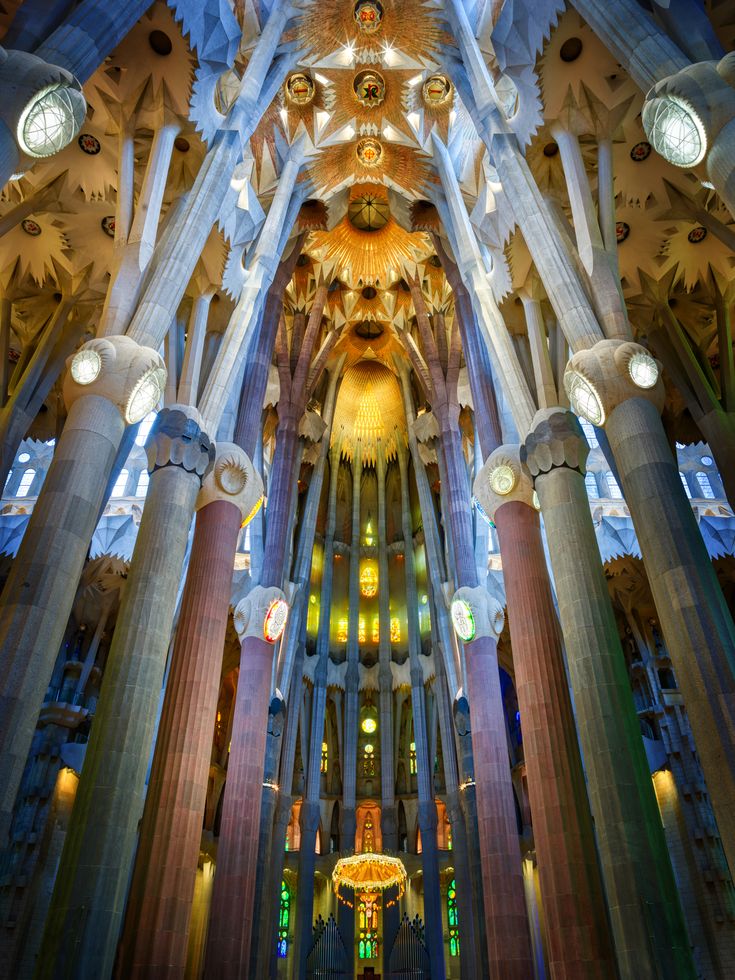
Q. Is Sagrada Familia free on Sundays?
A. Sagrada Familia is relatively free from 9:00 am to 11:00 am every morning including Sundays.
Q. How much time do you need to explore Sagrada Familia?
A. It takes approximately 2 hours to completely explore Sagrada Familia.
Q. Where is the entrance to Sagrada Familia?
A. Carrer de la Marina, 253. Visitors have to directly go to the Nativity Facade of the basilica.
More Reads
Sagrada Familia Interiors
Gaudi’s Barcelona
Sagrada Familia Christmas
Best time to visit Sagrada Familia
4.7
(121)
Sagrada Familia in Barcelona gets more than 5 million tourists annually.
During the summer months, up to 30,000 visitors enter the gates of Antoni Gaudi’s masterpiece daily.
This massive crowd is one of the main reasons why holidayers in Barcelona want to know the best time to visit Sagrada Familia.
This article shares everything you must know before planning your visit to Sagrada Familia and buy Sagrada Familia tickets.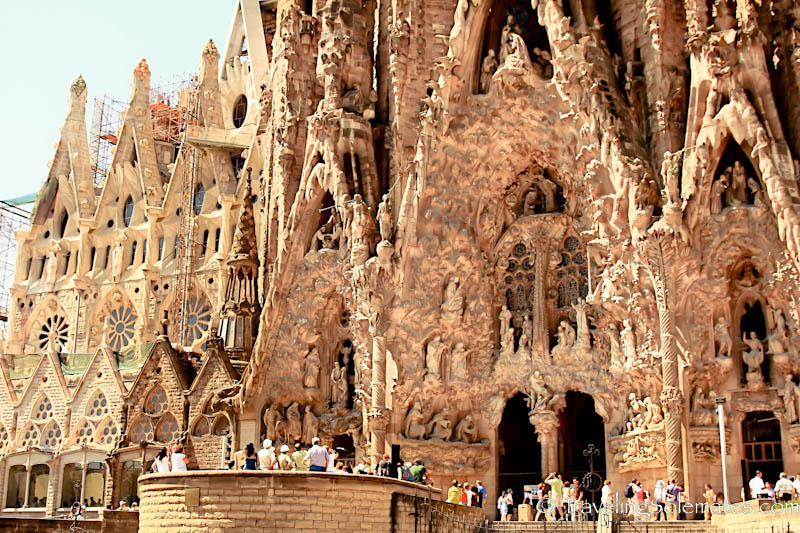
Table of contents
- Best time to avoid the crowd
- Best time to see Sagrada Familia interiors
- Best time to go up Sagrada Familia Towers
- Sagrada Familia Towers in afternoon
- Monday – best day of the week
- Worst time to visit Sagrada Familia
- Best time for taking photographs
Best time to avoid the crowd
The biggest crowds throng this place during the
high season from April to September.
If you want to avoid the crowd, the best time to
visit Sagrada Familia is as soon as they open at 9 am.
The period from 9 am to 11 am is relatively less crowded.
During these peak months, the longest waiting lines are seen between 11 am to 1 pm.
After lunchtime, the crowd thins down, and the
queues shorten.
However, it becomes challenging to stand in the line because of the hot sun.
If you can’t brave the Spanish sun, try being in
the ticketing queue at 5 pm.
However, there is a high possibility of the day’s tickets being sold off by 5 pm, so we always recommend online tickets for Sagrada Familia.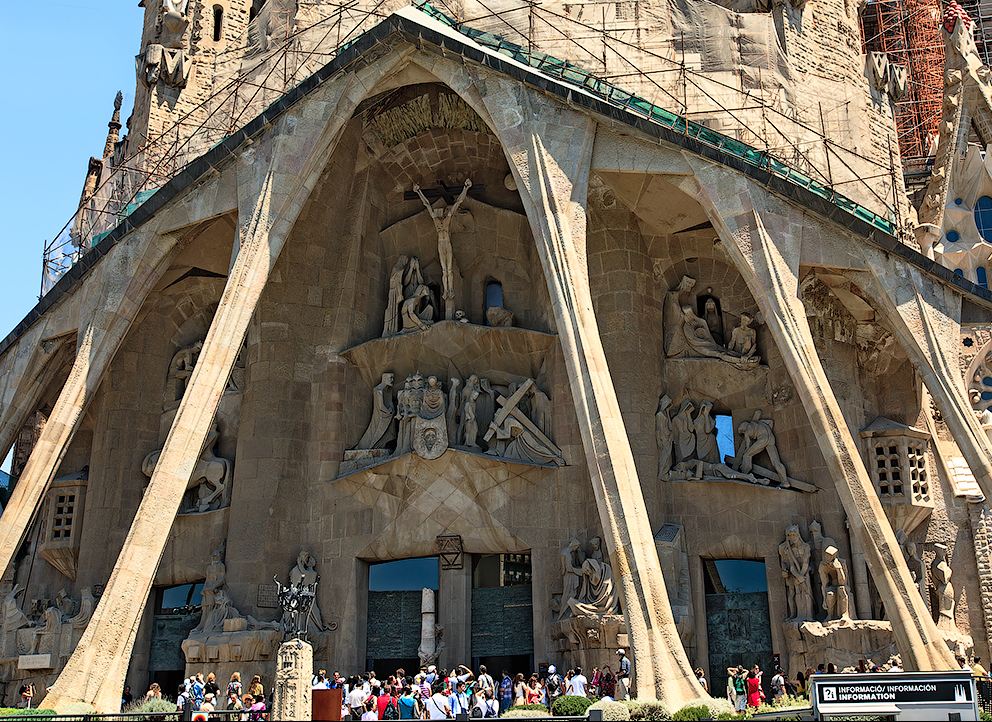
Best time to see Sagrada Familia interiors
The best time to see Sagrada Familia cathedral’s interiors is between 5 pm to 6 pm – when the sun is setting.
The evening light shines through the intricately stained glass, making it seem like a dream.
Image: Sagrada Familia on TwitterImage: Girl With Red Hat
Many tourists plan their visit to coincide with the
Golden Hour.
Once you have experienced the interiors, you can attend the Mass at La Sagrada Familia.
The crypt opens for Mass at 6 pm.
| Ticket/tour | Cost |
|---|---|
| Sagrada Familia fast track tickets | €34 |
| Sagrada Familia with Tower access | €47 |
| Guided tour of Sagrada Familia | €50 |
| Sagrada Familia guided tour + Tower access | €61 |
| Guided tour of Sagrada Familia & Park Guell | €82 |
| Guided tour of Sagrada & Montserrat | €99 |
| Guided Tour of Sagrada Familia in French | €48 |
| Guided Tour of Sagrada Familia in Italian | €48 |
| Guided Tour of Sagrada Familia in German | €48 |
| Guided Tour of Sagrada Familia in Spanish | €48 |
Best time to go up Sagrada Familia Towers
If you plan to go up one of the Sagrada Familia towers, you need a Tower ticket.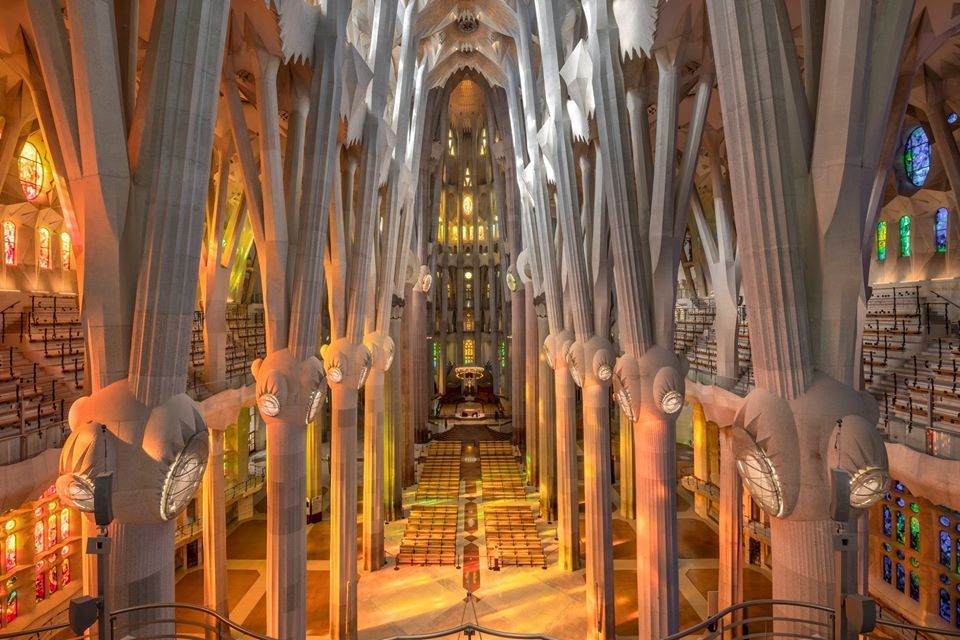
The best time to go up a Sagrada Familia Tower is
between 9 am to 11 am.
Before the crowd starts trickling in, you must reach the venue, spend 15 minutes collecting your audio guide, and then go up the Tower.
If you reach the elevator to go up the Nativity or Passion tower before 11 am, you will find a short queue.
Once you have gone up the elevator and seen the
fantastic views from one of the towers, you must climb down 400 odd stairs.
Before 11 am, Sagrada Familia is not as crowded, and you won’t take much time walking down the stairs.
With the light streaming in at an angle, 10.30 am to 11.30 am is one of the best times to see the stained-glass windows.
Visual Story: 12 must-know tips before visiting Sagrada Familia
Sagrada Familia Towers in afternoon
If you missed the time slot mentioned above, reach the attraction by 3 pm.
Once again, start by going up the towers and enjoying the sunlit views of the city.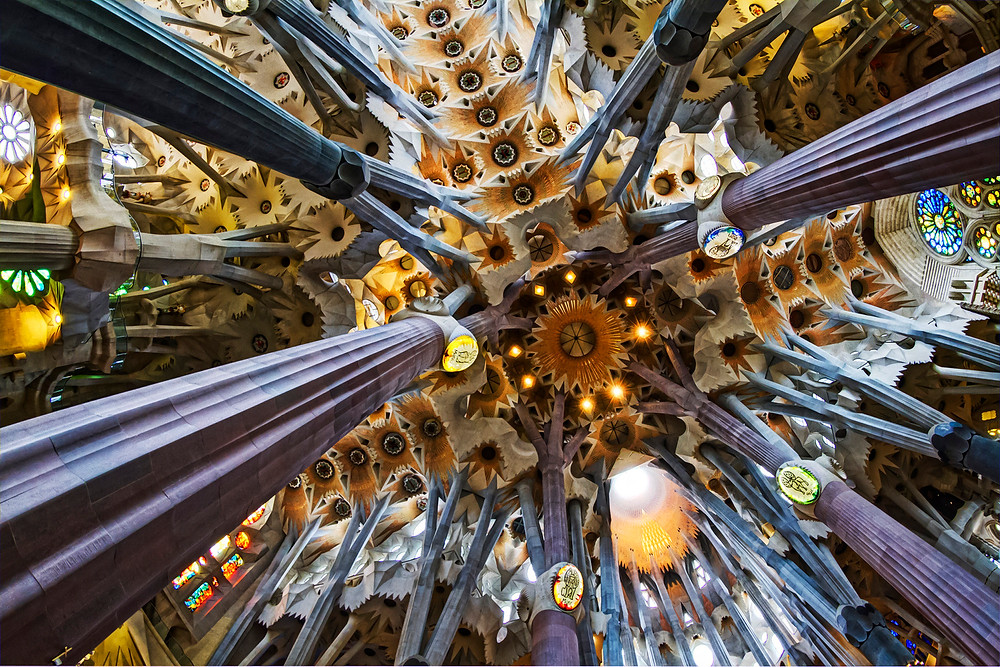
During this time, there is a slightly longer queue for the elevators.
Even the climb down the stairs is a little slow because the crowd walking ahead of you decides your speed.
Recommended Reading: Are Sagrada Familia Towers worth it?
Monday – best day of the week
Most Barcelona attractions (and some restaurants too) are closed on Mondays.
However, Sagrada Familia remains open on the first day of the week.
Tourists think the massive Barcelona Cathedral will also be closed on Mondays and plan something else.
As a result, Mondays are relatively less crowded and ideal for visiting with family, kids, and seniors.
If you book your Sagrada Familia tickets in advance, you can avoid the queues (short or long!) and enter the Basilica right away.
Worst time to visit Sagrada Familia
Irrespective of the season, 12 pm to 3 pm is the
most crowded time at Sagrada Familia.
Large groups from schools, cruise liners, and bus tours start arriving around noon.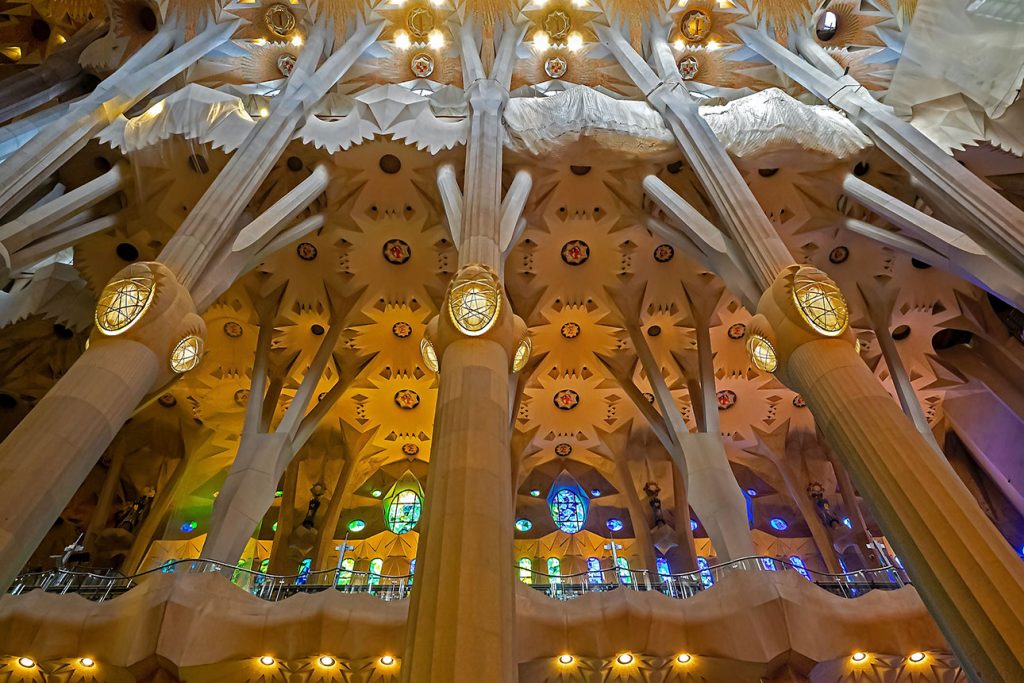
If your stay in Barcelona is long enough, we suggest avoiding the 12 pm to 3 pm slot.
The queue at the ticketing counters is long, which translates to long lines for the elevators (when you go up the Towers).
Interesting Read: Sagrada Familia facts
Best time for taking photographs
Sagrada Familia is so beautiful that you can take photographs whenever you want.
However, some times are better than the rest.
Image: Nick Fewings
Two slots are great for taking photos at Sagrada Familia.
First, from 10.30 to 11.30 am when the sunlight enters the Basilica at an angle.
Second, from 5 pm to 6 pm when the subdued rays of the sunlight stream in sheepishly. Many tourists consider the evening time better.
If you are a seasoned photographer, any time is good for photoshoots of the Basilica from outside.
If you plan to go up the Nativity facade towers and take many photos, we recommend the morning slot.
Morning is better because the sun is behind you and helps take good pics.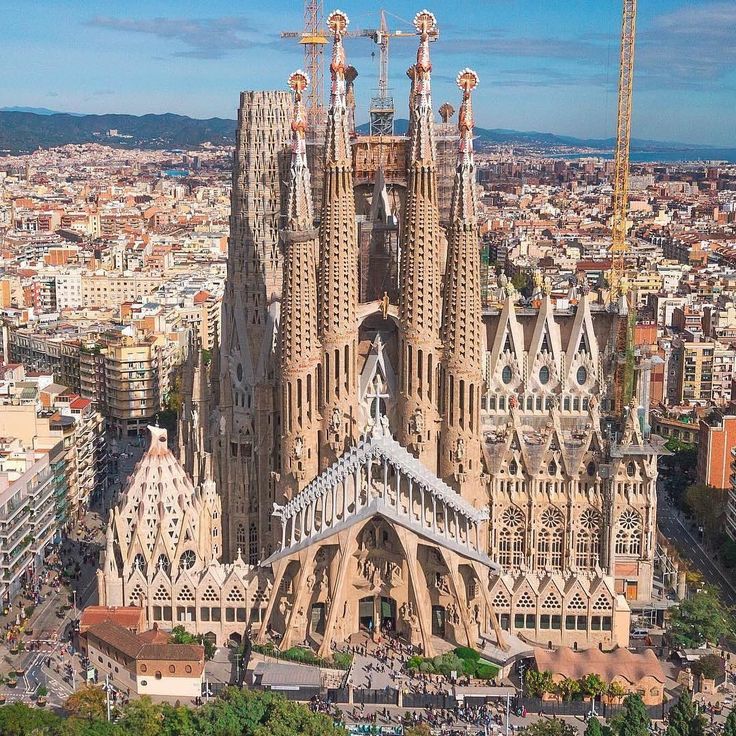
Post noon, the sun is in front of you, making it impossible to snap good photos.
There is no specific good time to take good photos of Passion facade.
Sources
# Barcelona.com
# Tripadvisor.com
# Traveldudes.com
# Barcelona-tourist-guide.com
The travel specialists at TheBetterVacation.com use only high-quality sources while researching & writing their articles. We make every attempt to keep our content current, reliable and trustworthy.
# Sagrada Familia
# Park Guell
# Casa Batllo
# Casa Mila
# Barcelona Zoo
# Camp Nou tour
# Barcelona Aquarium
# Montserrat Monastery
# Barcelona Cable Car
# Joan Miro Foundation
# Dali Museum, Figueres
# Moco Museum
# Gaudi House Museum
How useful was this post?
Click on a star to rate it!
for kids, couples and photos – tiqets.com
The Sagrada Familia towers over Barcelona and its elaborate architecture is a must-see during any holiday in the Catalan capital.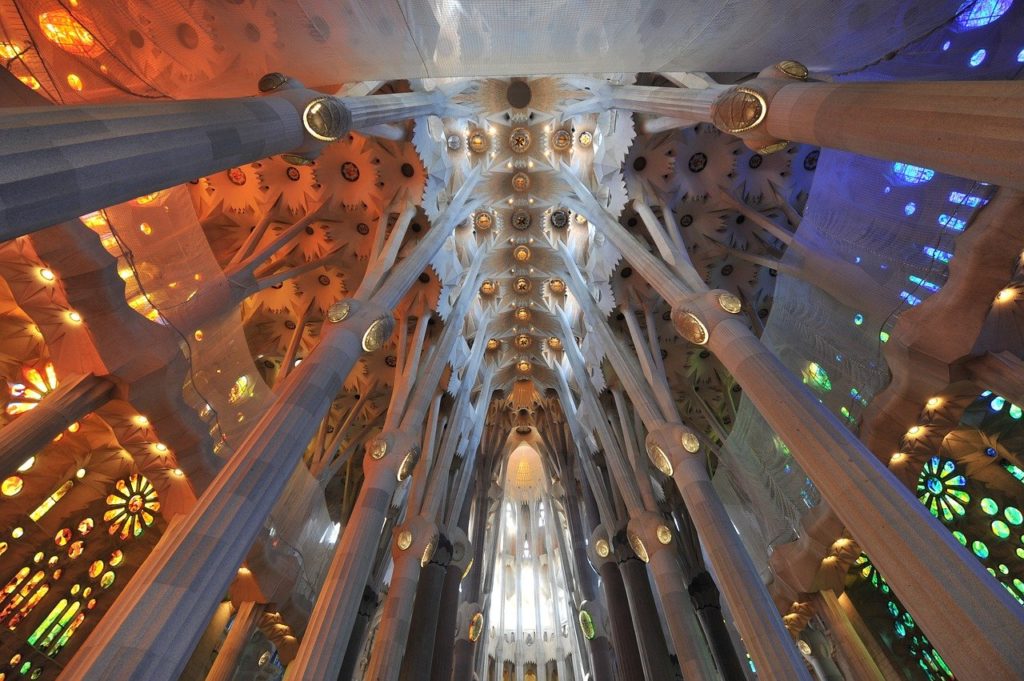
Instagram photo of @basilicasagradafamilia
Best time to visit the Sagrada Familia for kids and families
Young children can easily get confused in crowded places and their patience for sightseeing is, shall we say, unreliable. For a smooth visit with the least queues, book a fast track entry that also gives you an audio guide.
To avoid crowds, the best time to visit the Sagrada Familia for families and children is early morning on a weekday. You don’t have to be there when the cathedral opens, but arrive by 11:00 am for a more relaxed visit.
Families should avoid visiting Barcelona during the summer when it is at its hottest and busiest. Try visiting Barcelona in spring and autumn when the city is sunny, warm and cool in the evenings.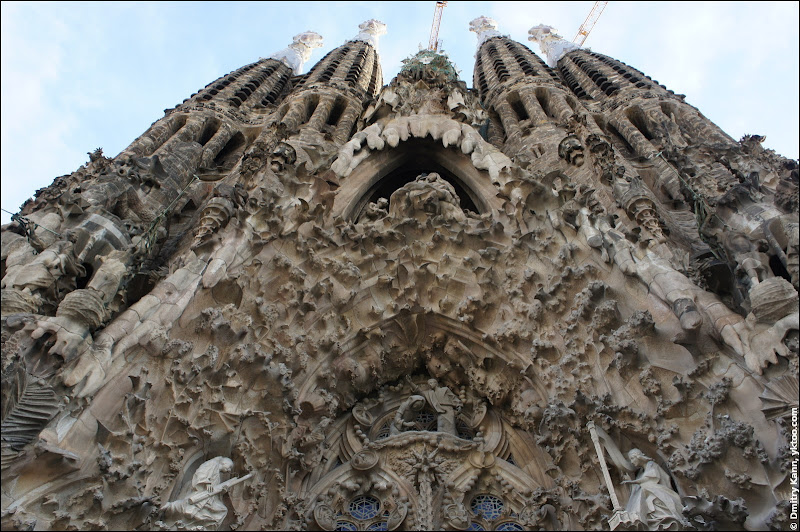
Photo by Ken Chung on Unsplash
The best time to visit the Sagrada Familia for couples
The Sagrada Familia is a very romantic building in a city full of life, love and passion. Barcelona is the perfect place for a first weekend with a new love or to rekindle a flame with an old love. But when is the best time to visit the Sagrada Familia for couples?
There may not be a bad time for sightseeing when you’re wrapped in romance. In the end, you will hardly notice anyone. But there is nothing more charming than Sagrada Familia at sunset. Light dances through the stained-glass windows, giving the interior a fairy tale feel. The curved organic shapes and intricate details of Gaudí’s masterpieces are most captivating in the late afternoon.
Visit after 15:00 when the tour buses leave and there are fewer people. It has a laid-back and sultry atmosphere, and the Barcelona nightlife beckons.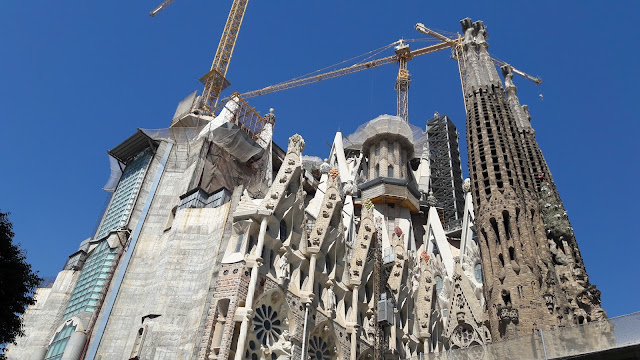
When is the best time of year for couples to visit the Sagrada Familia? Whenever romance is on the agenda.
Photo by Emmanuel Akua on Unsplash
The best time to visit the Sagrada Familia for all the best photos
Recording your memories on film or at least digitally is a vital part of many travel experiences. Especially if you’re active on Instagram and want to keep your friends, family, and followers up to date.
The good news is that the Sagrada Familia offers many great photo opportunities. The bad news is that the Sagrada Familia offers plenty of great photo opportunities – there are so many it can be a little confusing to choose from. So how do you make the most of this iconic monument?
The best time to visit Sagrada Familia for photography is late evening and early evening during golden hour. Light comes through the stained glass windows and the basilica glows.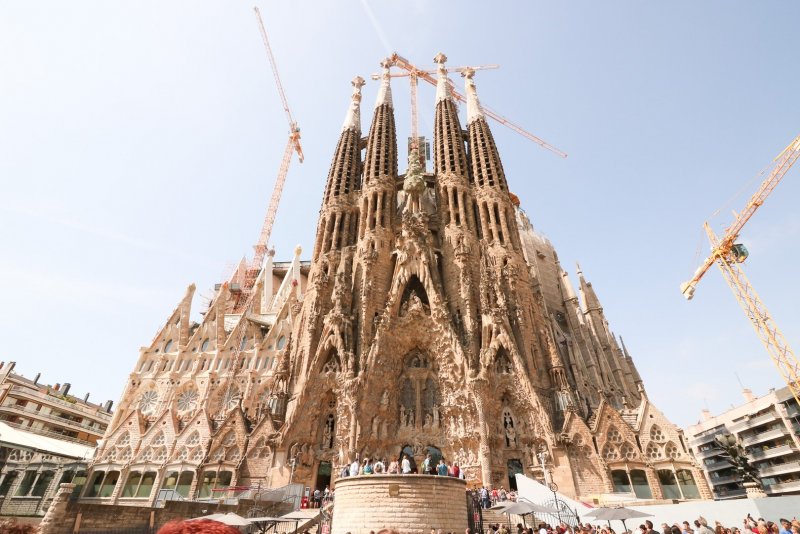
It’s impossible to photograph the entire building from the outside, so focus on the details. Play with perspective and don’t be afraid to include people for scale. And of course, take a selfie in the spotlight with the sun behind you.
For some companion photos, combine your visit to Sagrada Familia with a visit to Parc Güell. Here Gaudi combined nature and architecture in a riot of paths, columns, towers and mosaics. Twelve hectares of photogenic wonder are waiting for you; just remember to book in advance because the number is limited.
Photo by Martin Vonk on Unsplash
The best time to visit the Sagrada Familia for returning holidaymakers
Barcelona has everything you need for a great holiday. You’ll find delicious food, amazing sights, great art and architecture – and even beaches. No wonder so many travelers come here more than once.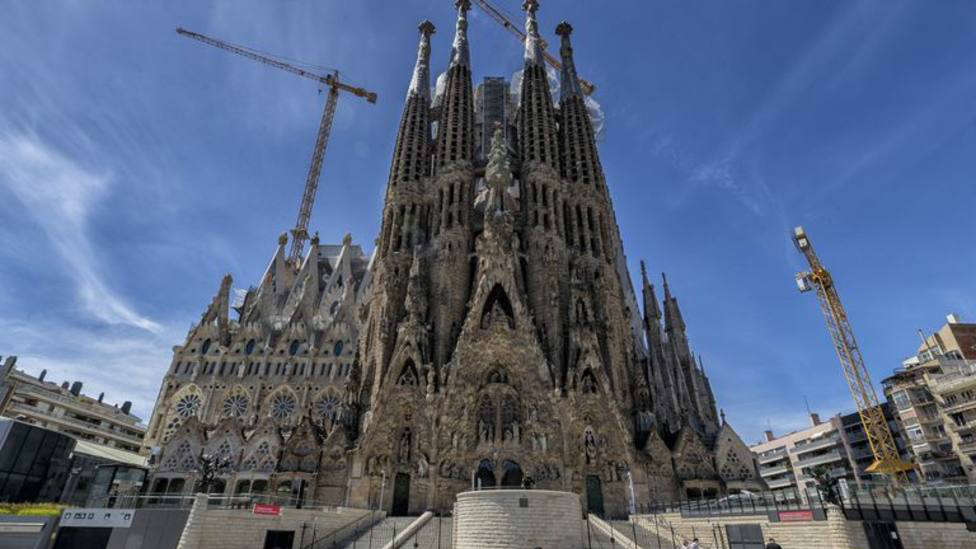
The answer is, of course, yes. The construction of this majestic cathedral began in 1882 and continues to this day. Unlike most other attractions, the Sagrada Familia is constantly changing. It won’t be the same when you visit again, and its details reward careful observation and fresh eyes.
Try to see the Sagrada Familia at different times of the year to see this magnificent building in different lighting conditions. You will get more information by joining a small group tour of the Sagrada Familia area. You’ll see Sant Pau, the world’s largest Art Deco complex, and have quick access to Gaudí’s masterpiece upon arrival.
Planning a trip? Here’s everything you need to know about Sagrada Familia !
Tags: Barcelona
6 mistakes of visiting the Sagrada Familia in Barcelona The beauty of the temple is amazing, not to visit it is a terrible omission. Naturally, every day there are thousands of people who want to get inside! I myself have been to Barcelona many times and even lived there for some time, but I didn’t get to the Sagrada Familia on my first visit: I was always horrified by the number of people in the queue and decided to just admire Gaudí’s creation from the outside.
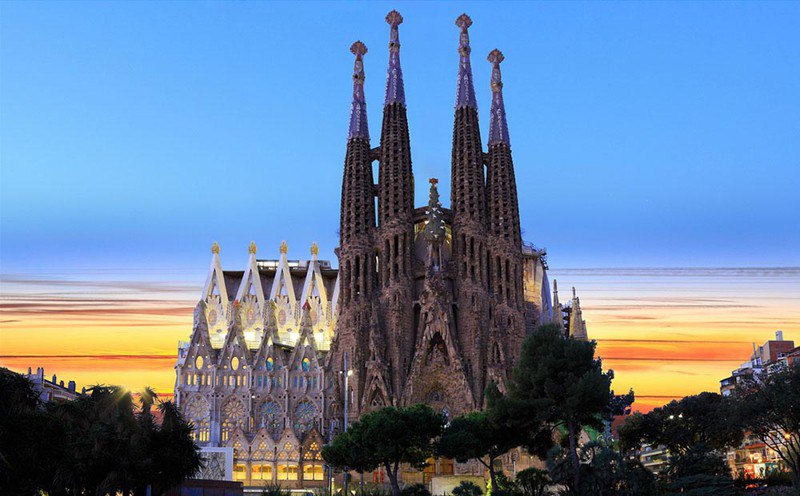
I’ve noticed that many tourists make 6 mistakes that can ruin their visit. To protect my readers from these mistakes, I have collected them in this article – let the Sagrada Familia leave only pleasant memories in your memory!
Well, at the end of the article, a useful bonus – how to visit the Sagrada Familia without queues!
So, what not to do…
READ ALSO: how to avoid queues at the most popular places in Barcelona
Contents
- 1. We’ll figure it out on the spot
- 2. My own guide
- 3. In the wrong place at the wrong time
- 4. Galloping through Europe
- 5. Stop… Where’s my camera?!
- 6. From the beach to the temple
- BONUS 1. How to get to the Sagrada Familia temple quickly and without nerves?
- BONUS 2. How to see the Sagrada Familia for free!
- Useful information about the Sagrada Familia
- Finally
1. Let’s figure it out on the spot
I repeat: the Sagrada Familia is the most visited place not only in the city, but also one of the most visited in all of Europe! Every day, thousands of tourists line up in a huge queue, wanting to see this masterpiece of architecture from the inside.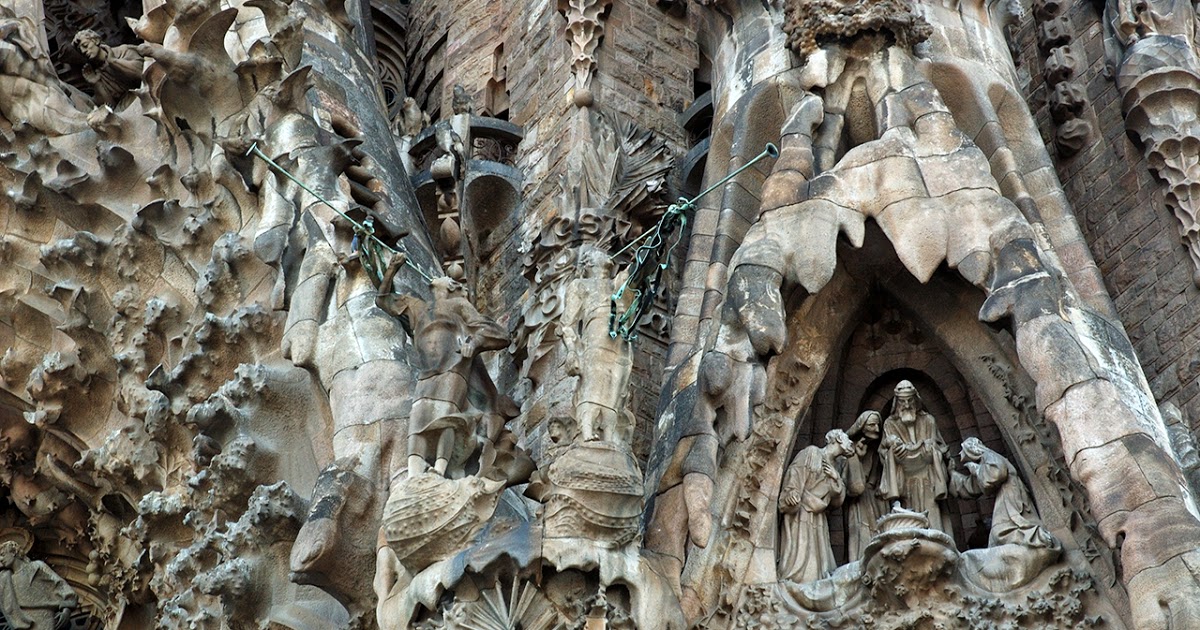
Did you break into a cold sweat at the word “queue”? Peace, only peace! Tickets can be pre-booked online!
I am often asked: “How far in advance should I book tickets for the Sagrada Familia?” Tickets can be purchased 2 months in advance on the website. During the season, it is better to book at least 5-7 days in advance if the day and time of the visit are important to you.
FROM EXPERIENCE : Best view inside at sunset!
IMPORTANT: The Barcelona Pass DOES NOT INCLUDED a fast pass, as many people mistakenly think. With it, you can visit some attractions for free, but you will have to stand in line like a mere mortal.
2. Your own guide
Sagrada Familia keeps many secrets and mysteries, every smallest detail means something, and nature itself served as inspiration for many elements of architecture. The guided tour is worth it!
There is a budget option, but with an English-speaking guide. Excursions in Russian are often held only outside the temple and are more expensive, since you will have to pay extra to enter the temple itself.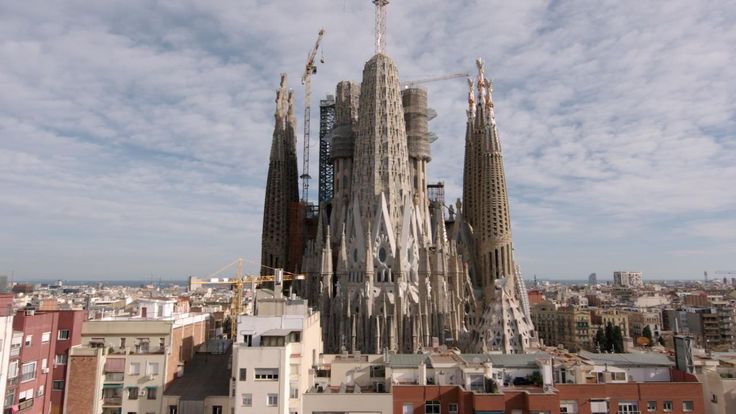
Another great option is to take a tour with the towers.
If the budget does not allow, I recommend taking an audio guide. You will not regret, the information is very useful and interesting!
LIFE HACK: Bring your headphones and you can split the audio guide for two!
IMPORTANT: It is better to come to the tour 15 minutes in advance. The temple is full of tourists, it may not be so easy to find a guide, and money for tickets will not be returned if you are late.
Buy a guided tour
3. In the wrong place at the wrong time
The temple is breathtaking at any time of the day, but to deprive yourself of the sight of a scattering of beautiful golden rays reflected in countless windows is a big omission.
This is the main highlight of the temple. It was not by chance that Antonio Gaudi designed the Sagrada Familia in such a way that during the “golden hour” the sun was directly reflected in the stained glass windows.
The view is simply fabulous, believe me!
4. Gallop across Europe
A common mistake of those who want to be in time here and there!
In order not to run around the temple, sticking out your tongue, it is better to set aside at least an hour and a half for a calm, measured visit. If you plan to enjoy the view from the towers – feel free to book another half an hour. Entrance to the towers is not included in the standard ticket, it is paid separately – we book in advance here.
Should I visit the towers in the Sagrada Familia?
If the time to visit the Sagrada Familia is not too tight, I advise you to definitely choose a ticket with towers – in my opinion, they are worth it! From the towers, you can see those parts of the temple that are not visible from the ground, and you can see how work is constantly being carried out to preserve and restore this architectural masterpiece.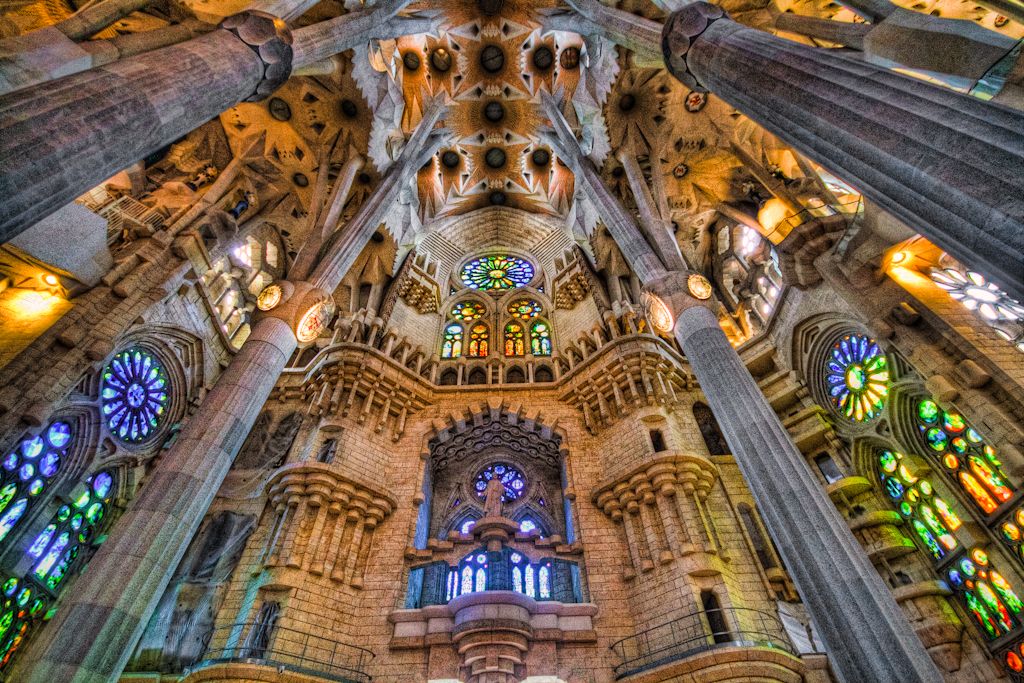
FROM EXPERIENCE: If you’re afraid of heights, it can get uncomfortable at the top – especially if you climb up the Nativity Facade and walk across the little bridge to enjoy the view and get a closer look at the details. The height of the temple is 172 meters, no wonder you get scared! I also recommend that claustrophobics think twice – there is no elevator, you will have to go down narrow spiral staircases.
Towers of the Nativity or Towers of the Passion?
The Sagrada Familia has two façades with towers that can be climbed: Towers of the Nativity and Towers of the Passion . The Nativity Towers are the oldest, Gaudí himself worked on them. The Passion Towers are newer, based on his sketches. The facades are completely different, but the view is incredible – no matter which towers you choose!
HACK: The Towers of the Nativity boasts a view of the mountains of Barcelona, while the Towers of Passion will have a view of the ocean.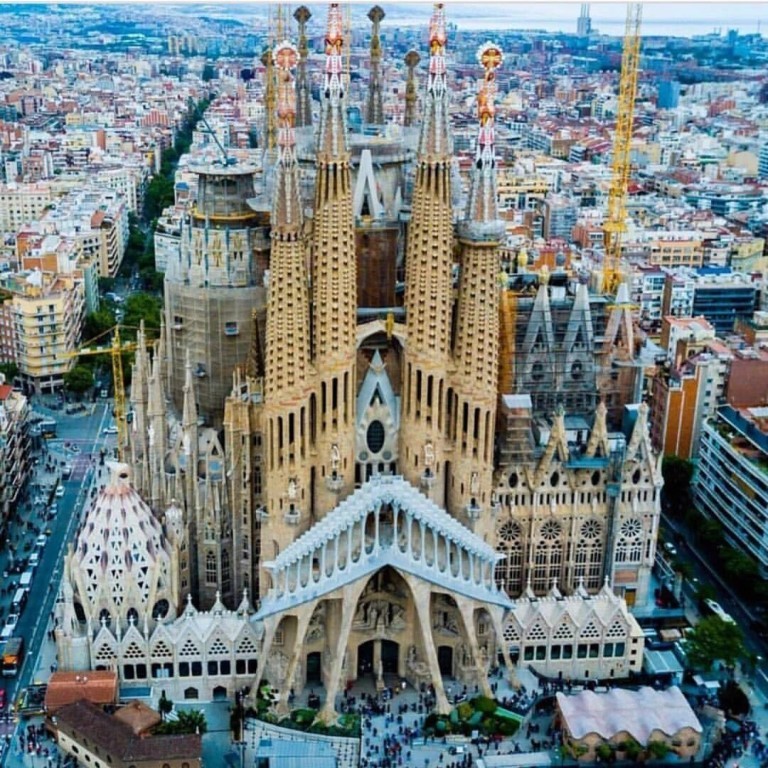
Buy a tour with a visit to the towers of the Sagrada Familia
5.
Wait… Where’s my camera?!
How can you forget your camera when you go to the main place in Barcelona?
Don’t forget to bring your camera and charge your phone. Will it be sad to leave this magical place empty-handed – no photos with views, no selfies? 😉
Believe me, there are countless photo opportunities, you won’t even have time to remove your finger from the camera button. Especially if you go in the evening, when the light magically transforms the appearance of the temple. Successful shots are not to be missed!
6. From the beach to the temple
And last but not least: the rules here, of course, are simpler than in the Vatican, but this is still a functioning temple and you need to dress appropriately. Show respect for the sacred place – it is better to save the neckline and mini-skirts for later.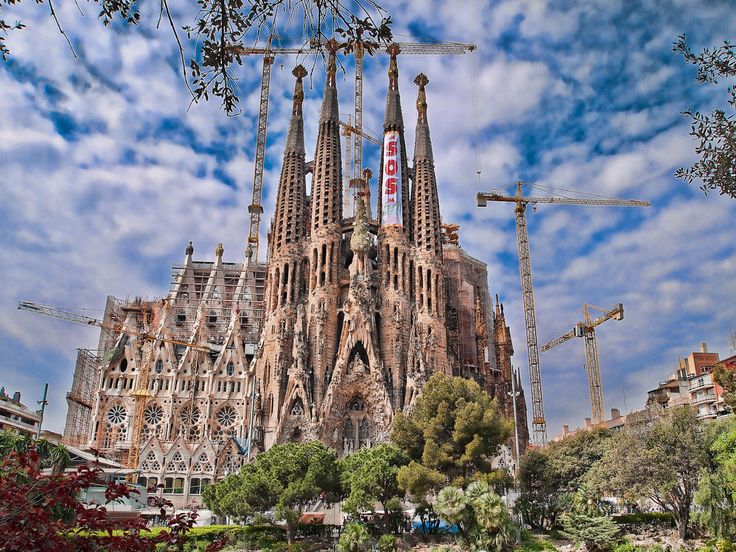
By the way, the Sagrada Familia crypt can only be entered during Mass and only in appropriate clothing.
Book your accommodation in Barcelona
BONUS 1. How quickly and without nerves to get to the Sagrada Familia?
I hate standing in lines! Therefore, I have collected all the information for you in one place in order to save precious nerves and vacation minutes. Go!
Option 1. Buy tickets online in advance
Buy your tickets in advance and arrive on time (time indicated on ticket, 15 minutes left). With such a ticket, you still need to stand in a small queue at the entrance (in the company of those who have tickets for the same time) – from 2 to 15 minutes.
UPDATE 2019: From January 2019, entrance with standard tickets is only after 14:00 . To visit the Sagrada Familia earlier, take a guided tour (details in option 2).
IMPORTANT: Don’t be late, miss your time – and that’s it, the doors will close in front of you!
HACK 1: If you are under 30 or have a student card with you, you are entitled to a small discount (about 2 euros).
LIFE HACK 2: If there are no tickets for your date on the official website, check with intermediaries, for example, Skip-The-Line Tour – they most likely still have some left. My friends did just that! 🙂
PRICES (UPDATED JUNE 2019): standard ticket costs 17€, with audio guide 25€.
Buy tickets to the Sagrada Familia
Option 2. Book a guided tour
For you, a separate entrance without a queue. But the main thing is that you have a certified guide with you, ready to tell you everything and even more about the temple!
IMPORTANT: The Barcelona Pass is free to enter, but you have to queue.
As in the first case, you need to be there 15 minutes in advance, latecomers are not allowed.
PRICE: 38 €. 54.3 € with the towers of the Sagrada Familia.
Buy a guided tour
Option 3. Individual tour
Nobody rushes you, you can safely ask questions without jostling in a group of tourists.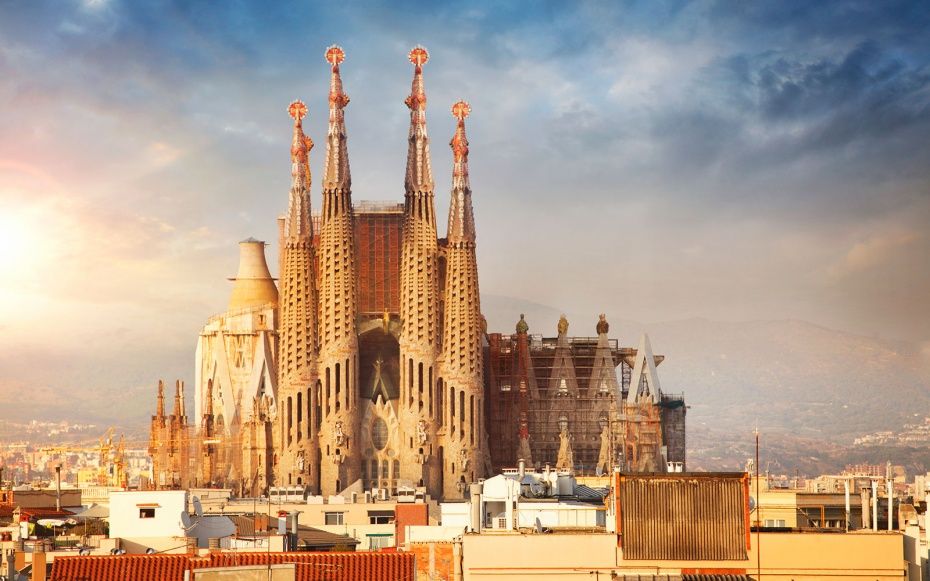
PRICE: €172 per person for a two-hour private tour, €135 per person for a one-day tour of Barcelona – includes the Sagrada Familia and other attractions.
Buy a private tour here
Option 4. Barcelona City Pass
Barcelona City Pass – all the city’s most popular attractions in one card. Everything will be booked for you – you just need to indicate the desired time and take a map with you.
Calculation:
For 100 € you will get fast track to Sagrada Familia (regular price – 17 €) + fast track to Parc Güell (10 €) + transfer from and to the airport (about 15 €, depending on the airport) ) + hop on hop off sightseeing tour (€30) + 20% discount on tickets to the House of Mila (Casa Mila), the House of Bones (Casa Batllo) and many other attractions.
Take advantage of all offers and save at least 10 € per person. The trick is that you don’t need to pick up the card anywhere: all tickets will be sent by e-mail along with a 20% discount code.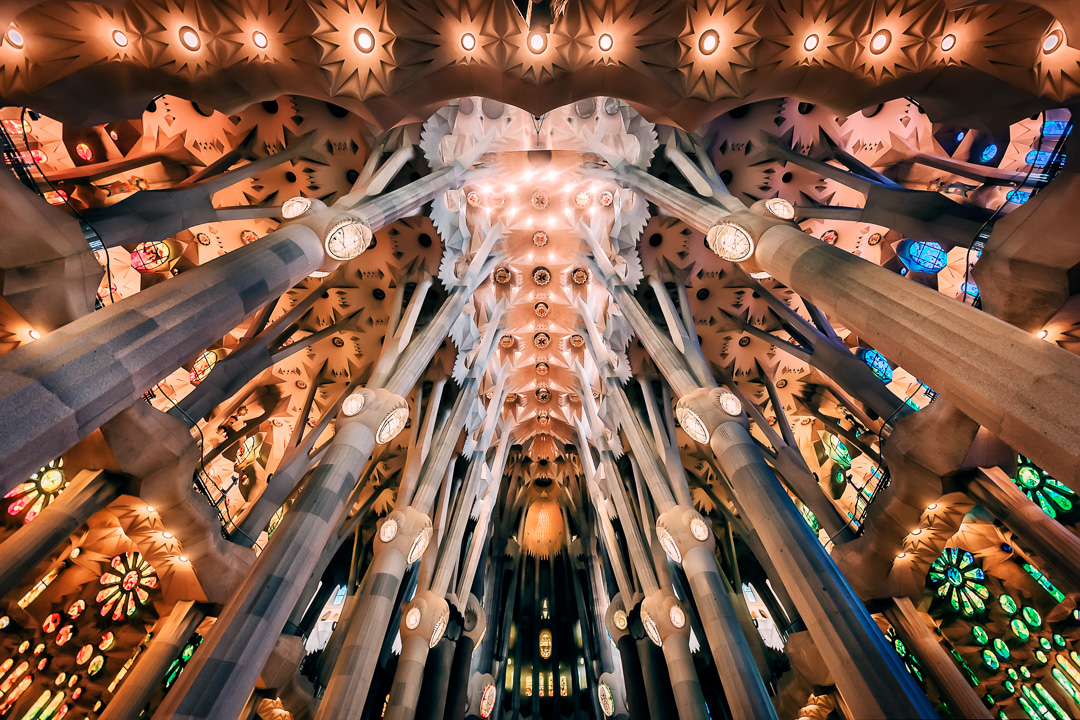
Price: 99.9 € (many attractions).
Buy Barcelona City Pass
Option 5. Buy tickets on the spot
(do not recommend)
I can’t help but mention this option, but I must warn you that, of course, we are not talking about saving nerves here.
If the decision to visit the Sagrada Familia is spontaneous, tickets can be bought at the box office. BUT! It may turn out that tickets are available only for the evening or even the next day, especially during the season. Why waste precious time?
LIFE HACK: The Sagrada Familia is open 365 days a year. There are fewer people on Monday – many people think that it is closed.
PRICE (UPDATED IN JUNE 2019) : 20 €
BONUS 2. How to see the Sagrada Familia for free!
Sagrada Familia – an architectural masterpiece, the creation of Antonio Gaudí, is a must-see in Barcelona, but ticket prices, admittedly, are not that democratic. Dedicated to budget travelers who want to visit this legendary building!
Sagrada Familia is not only an attraction, but also a functioning temple.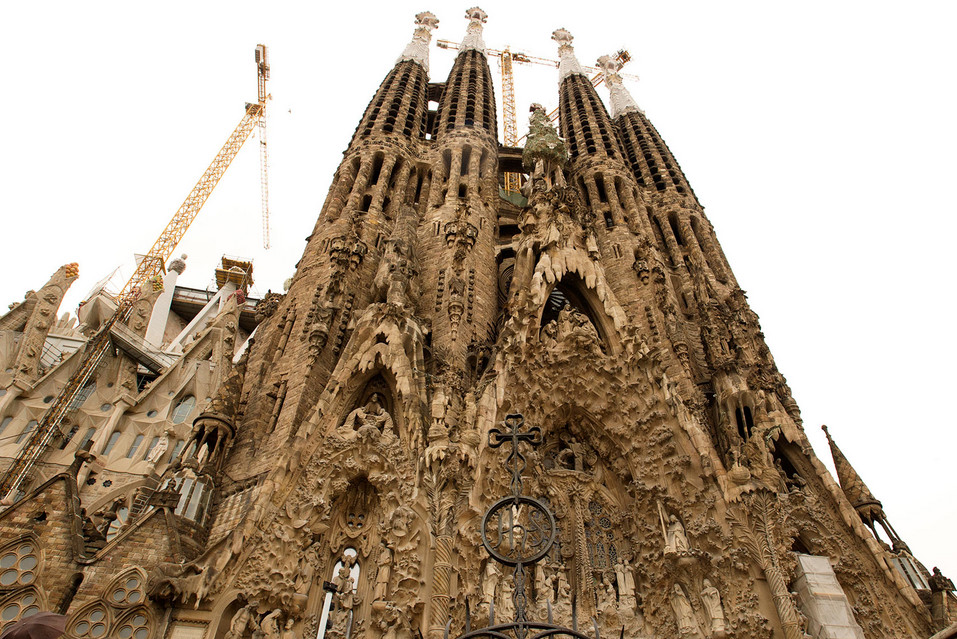
Special masses are held on certain days: the Entry of the Lord into Jerusalem (in March), the Closing of the Pueri Cantores International Federation (in July) and Thanksgiving Day (in October). An up-to-date calendar of upcoming masses is available on the website.
This is a great chance to get to the temple and enjoy its beauty in the morning sun. There are subtleties here – this is not an excursion, it is impossible to photograph the temple during the mass. Show respect to visitors – this is a religious event.
IMPORTANT: The mass is a public event, so it may not accommodate everyone – on a first-come basis. To get to the temple for sure, be at the Nativity Facade at 8:30 in the morning. If you are more than 25 people, you need to fill out a special form.
Useful information about the Sagrada Familia
I will share with you not only the mistakes of travelers when visiting the Sagrada Familia, but also other useful things.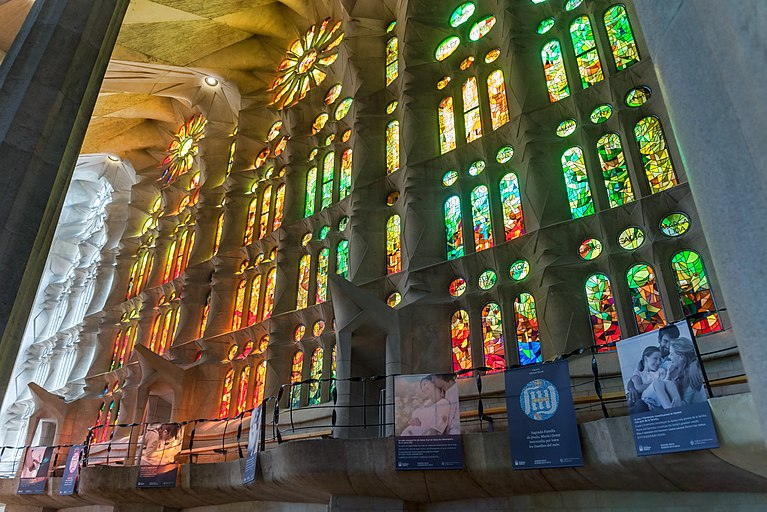
How to get there?
You can easily get to the Sagrada Familia from almost anywhere in the city. The most convenient way to get there is by metro – the purple line L2 and the blue line L5.
There is nothing to worry about: there is only one entrance and you will immediately see signs and signs leading to the temple. You can exit the metro from any of the two exits, the distance to the cathedral is approximately the same (they are literally across the road, so the temple will immediately appear in all its splendor).
When is the temple open?
The temple is open 365 days a year. Opening hours for the Sagrada Familia:
- November – February: 9.00 am to 6.00 pm
- March: from 9.00 to 19.00
- April – September: from 9.00 to 20.00
- October: from 9.00 to 19.00
- December 25 and 26, January 1 and 6: from 9.00 to 14.00
The temple or towers are sometimes closed for private events, but this does not happen often.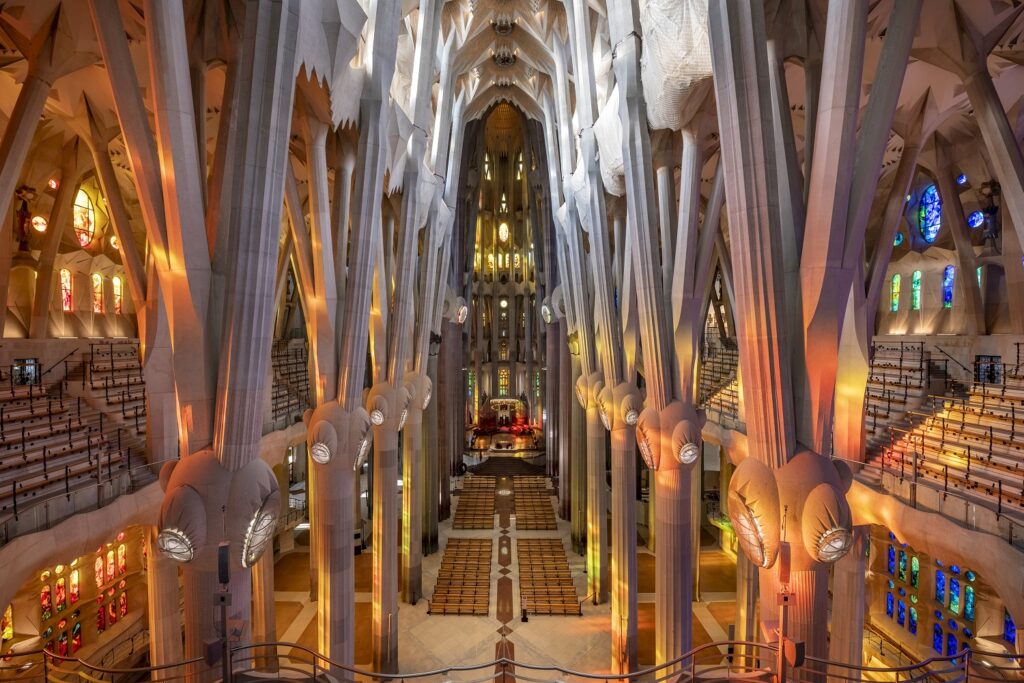
FROM EXPERIENCE: Ticket sales close 30 minutes before closing.
How much is a ticket to the Sagrada Familia?
Standard ticket costs 17 €, with audio guide 25 €. A ticket with an audio guide and towers costs 32 €. There are other types of tickets, you can see on the official website.
You can also take a guided tour or a tour with a guide and towers and learn a lot of interesting, funny and mysterious things about the life and work of Gaudí!
Where to stay in Barcelona?
I’ve selected a couple of great hotels for you, all in the city center and with great reviews. For convenience, divided into three price categories. Follow the links to check prices for your dates.
Chic (from 300 € ): Football fans should take a closer look at the Hotel Sofia, a five-star hotel 5 minutes from the famous Camp Nou stadium.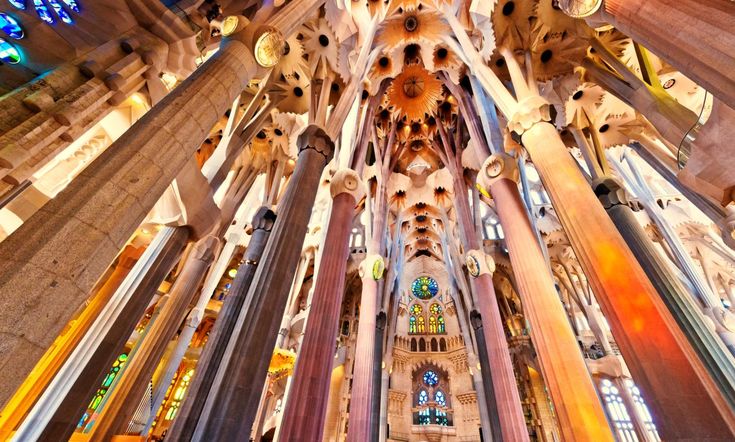
Medium (100-150 € ): Vasanta Hostal Boutique is a lovely hotel with stylish rooms in neutral colors and a shared seating area. Within walking distance – coffee shops, restaurants and many pubs. Another mid-range hotel is Hostalin Barcelona Passeig de Gracia. In the reviews it is called the ideal option, note the cleanliness. Wine lovers will especially like the Torres wine cellar just a floor above!
Budget (up to 100 € ): Rodamon Barcelona Hostel is a great choice for nature lovers. A stone’s throw away are the gardens of Robert’s Palace (Palau Robert) and other attractions. Ten To Go Hostel boasts a common seating area and even a pool.


 5
5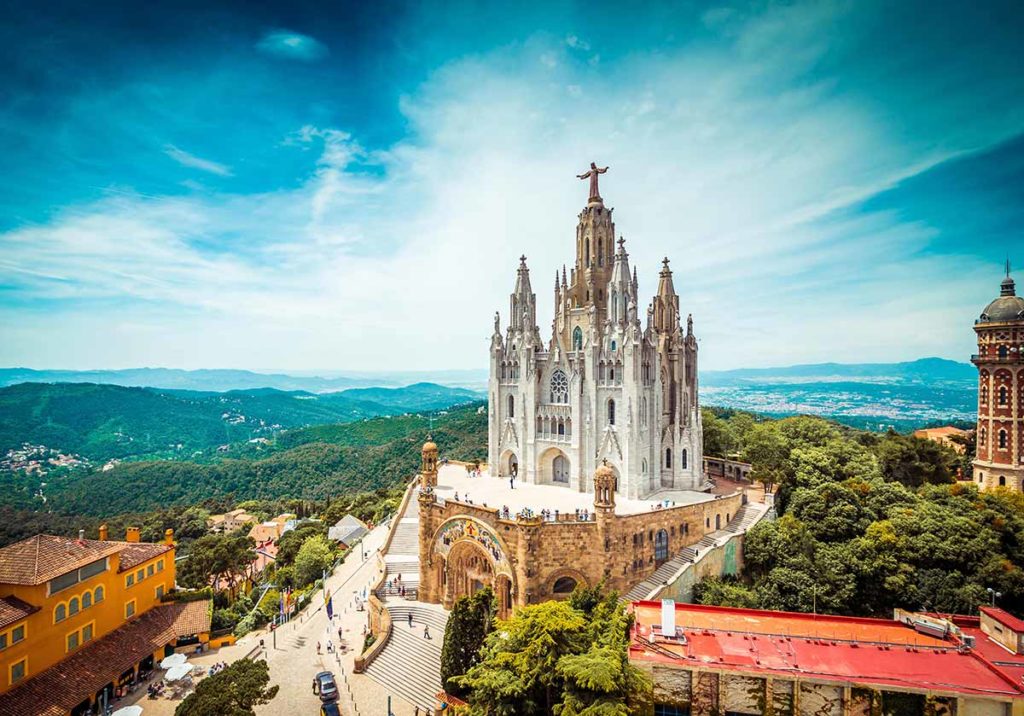 5
5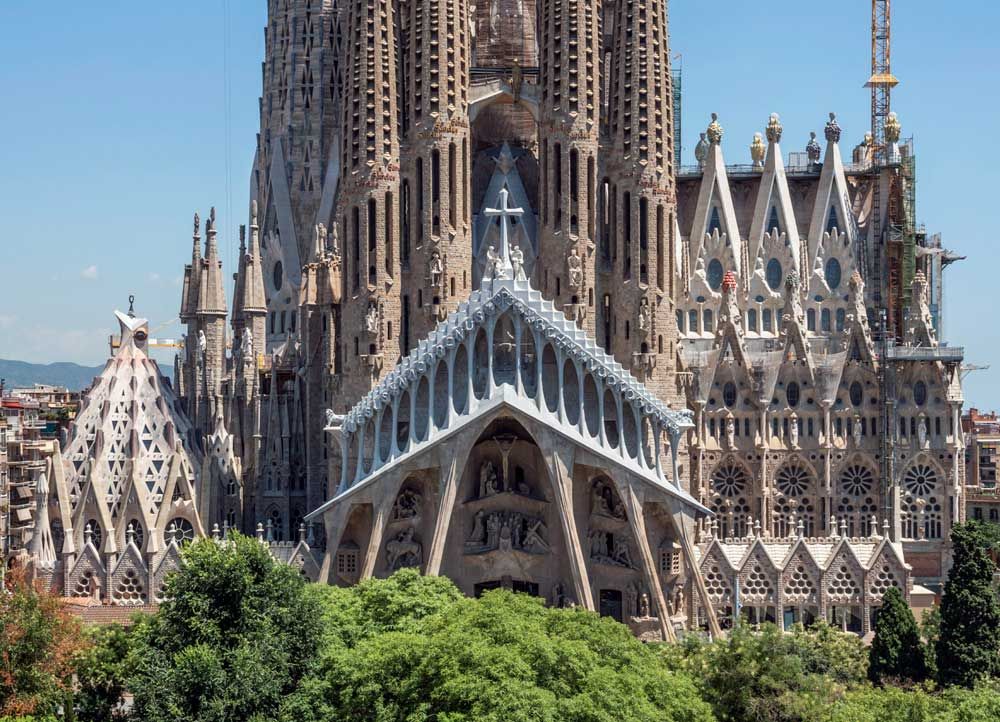 – 2 hr. 30 min.
– 2 hr. 30 min.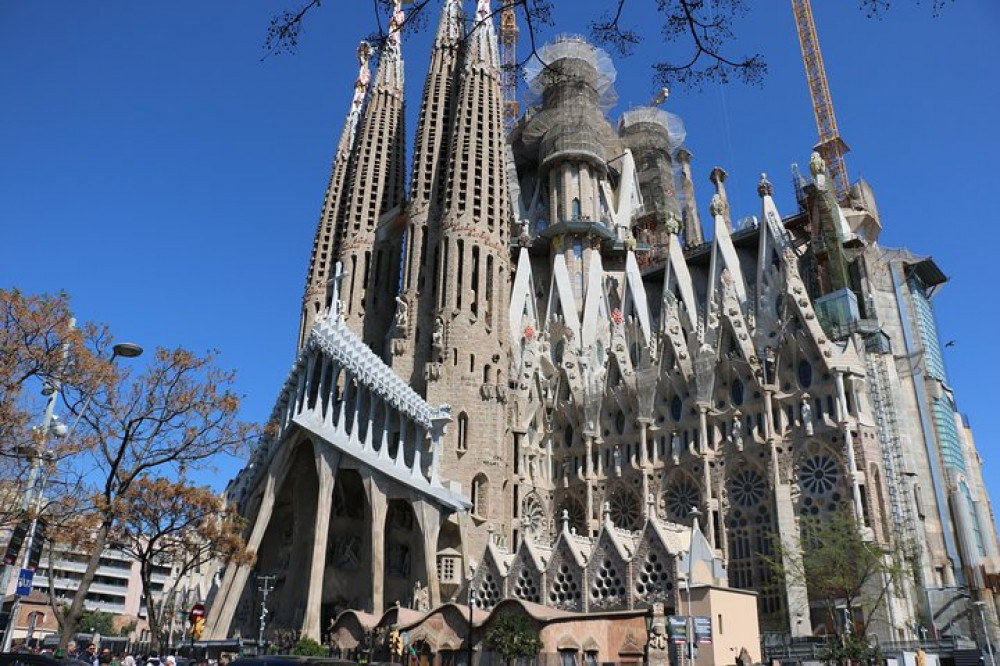 30 min. – 4 hr. 30 min.
30 min. – 4 hr. 30 min.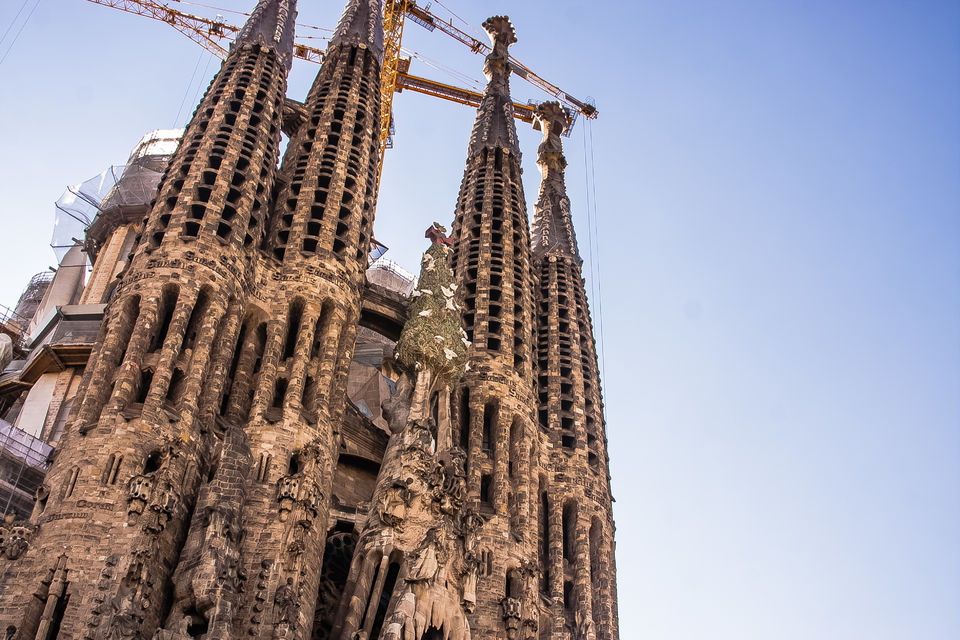 The site is still not fully constructed, however, parts of it are open for public access.
The site is still not fully constructed, however, parts of it are open for public access. 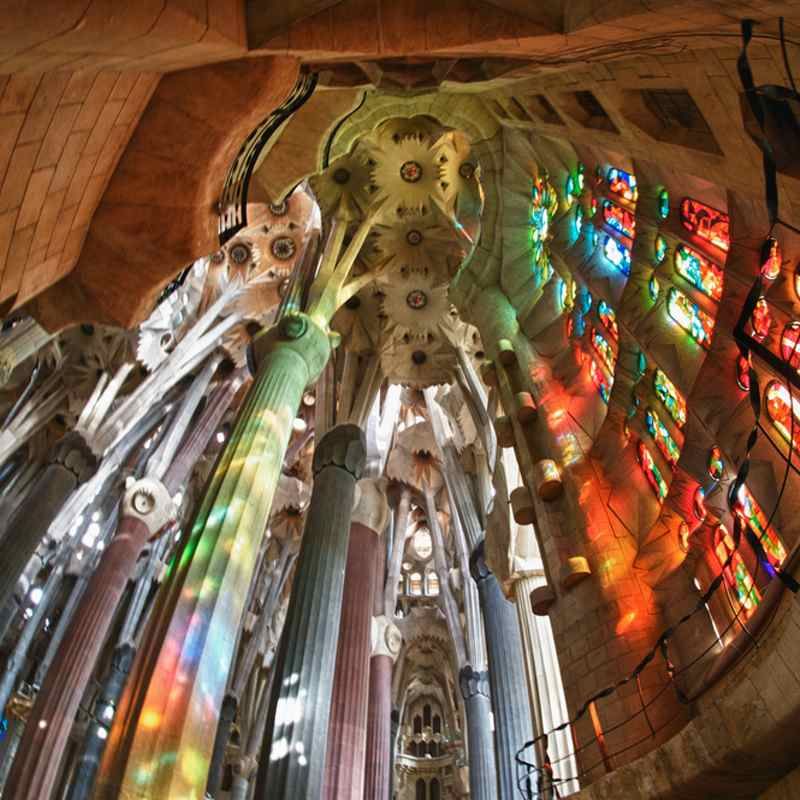

 This e-ticket will suffice, there will be no need to print a copy – let’s keep the environment in mind!
This e-ticket will suffice, there will be no need to print a copy – let’s keep the environment in mind! 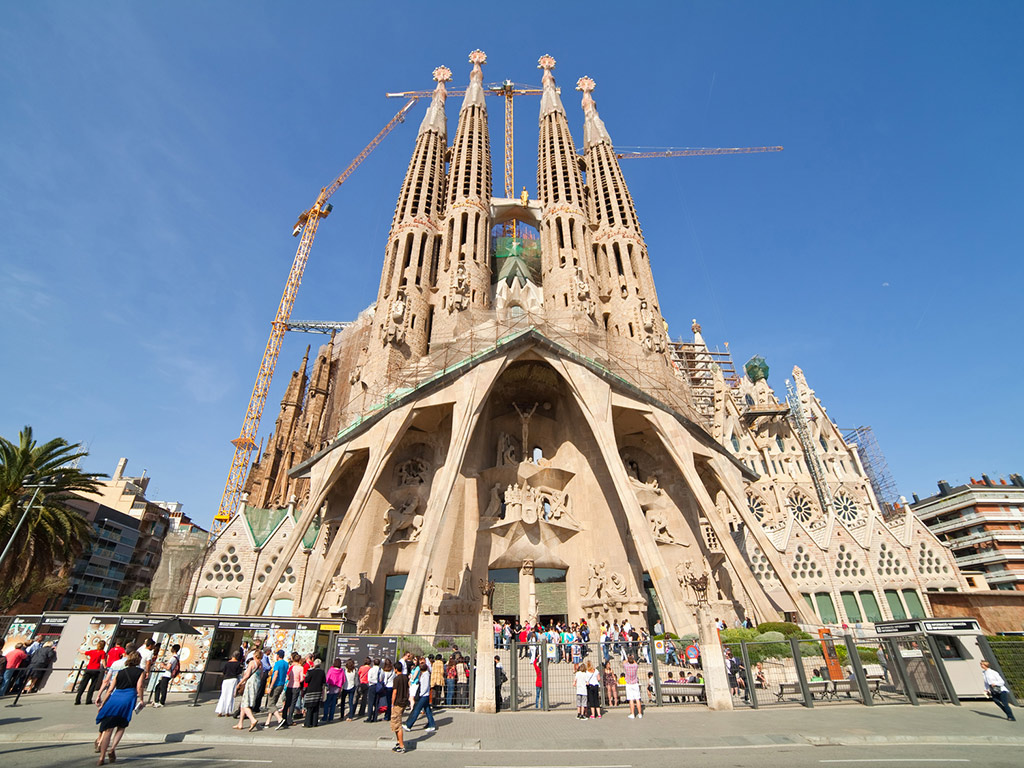 English guided tours are usually between 10 AM and 12 noon. Similarly, guided tours in other languages have their allotted time window.
English guided tours are usually between 10 AM and 12 noon. Similarly, guided tours in other languages have their allotted time window. 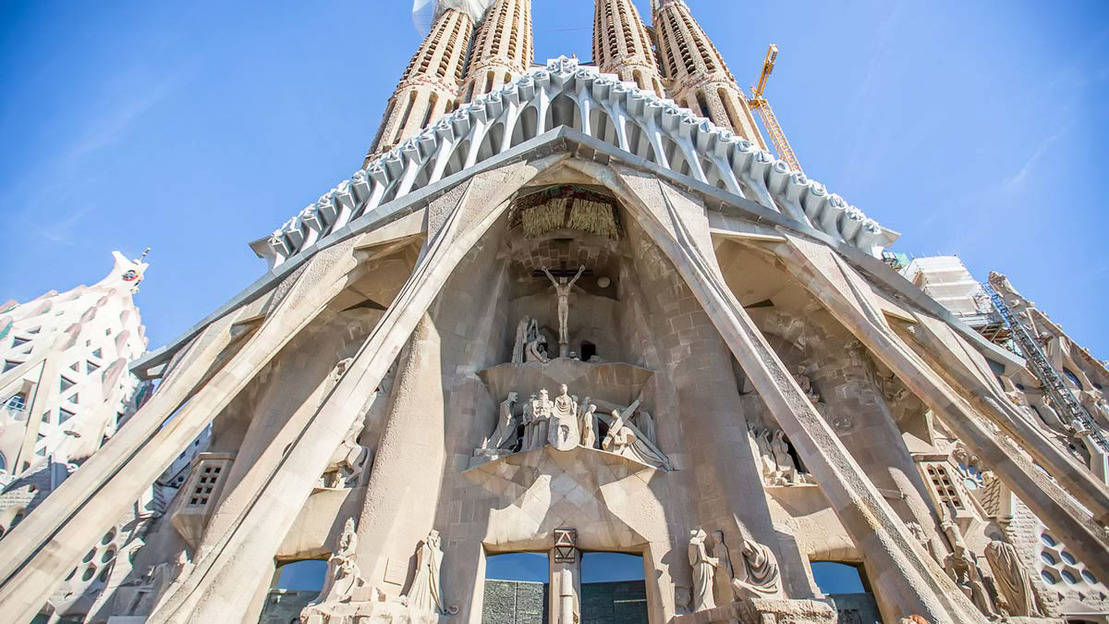 You can also get a discount if you are a student entering with valid proof.
You can also get a discount if you are a student entering with valid proof. 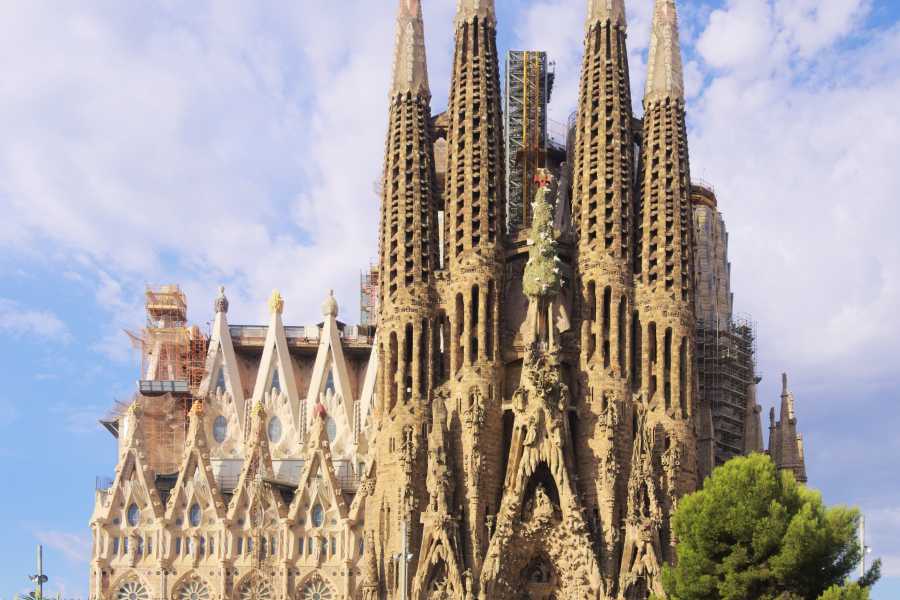
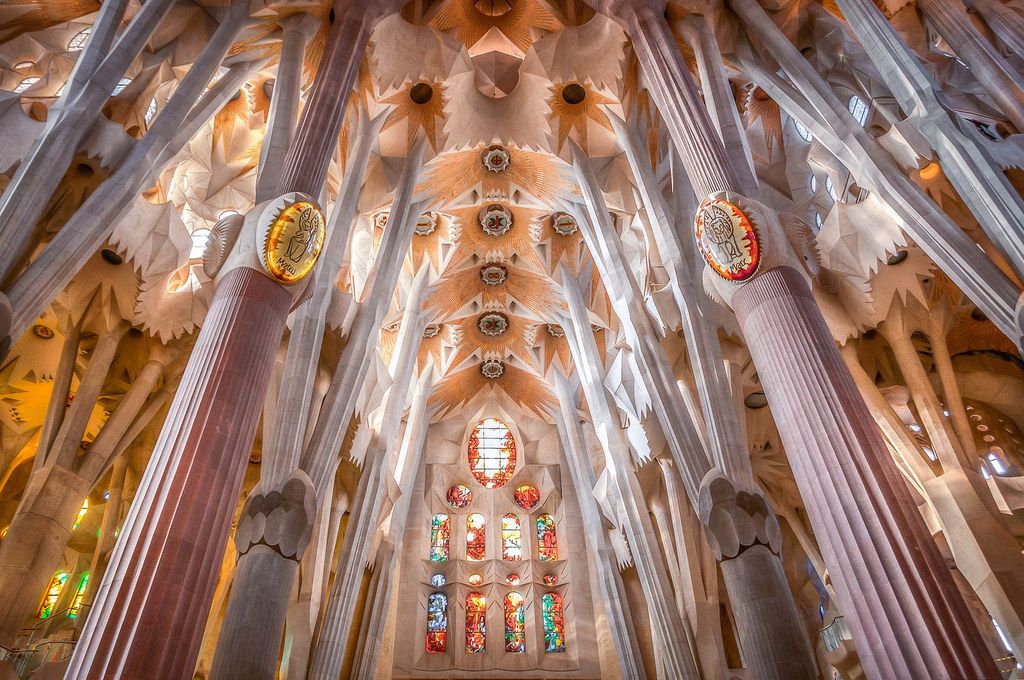
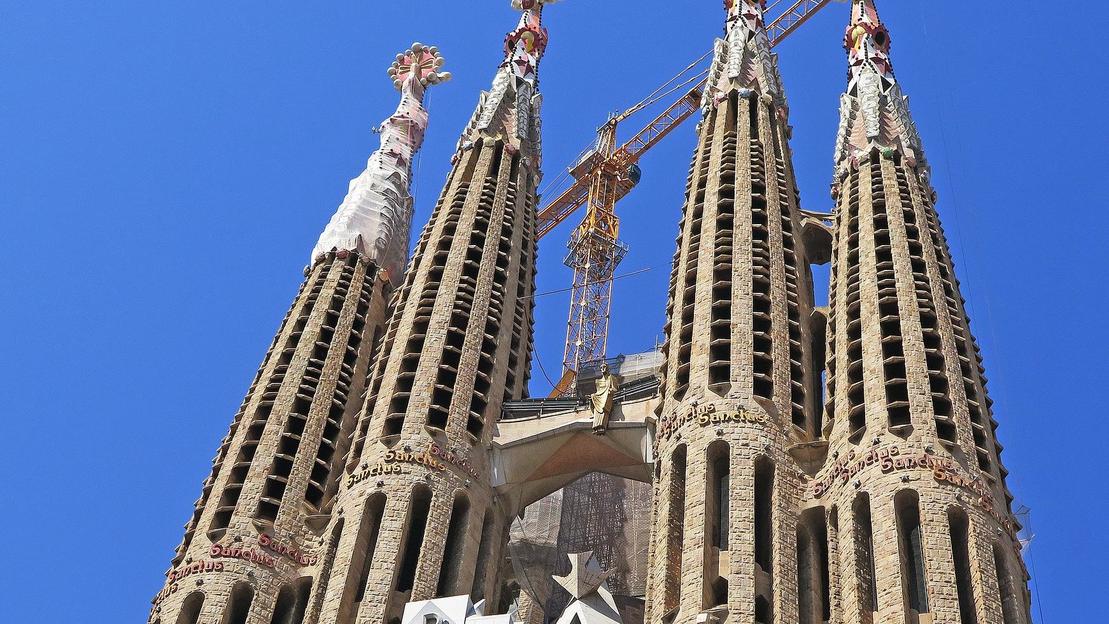
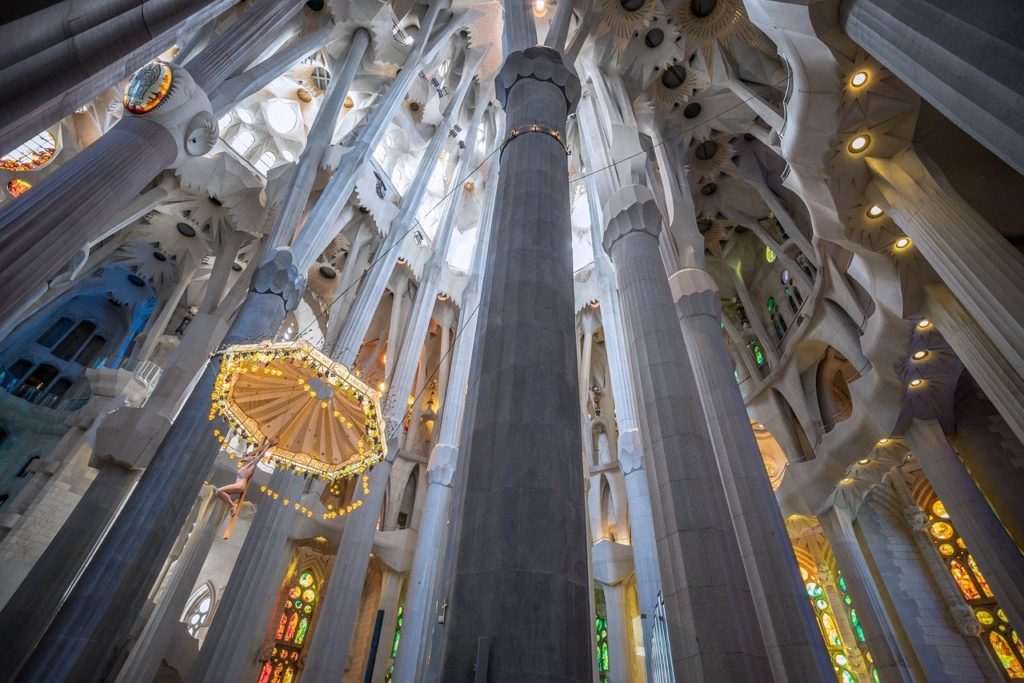 But to appreciate the idea of the architect, the great Antonio Gaudi, you must definitely visit inside.
But to appreciate the idea of the architect, the great Antonio Gaudi, you must definitely visit inside. 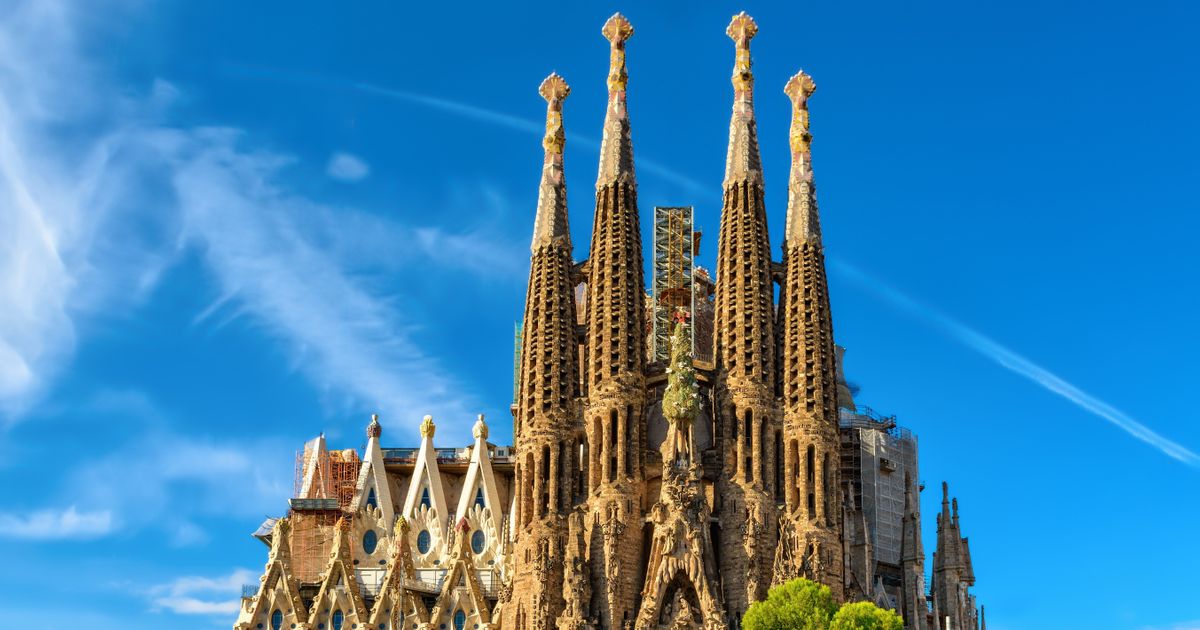
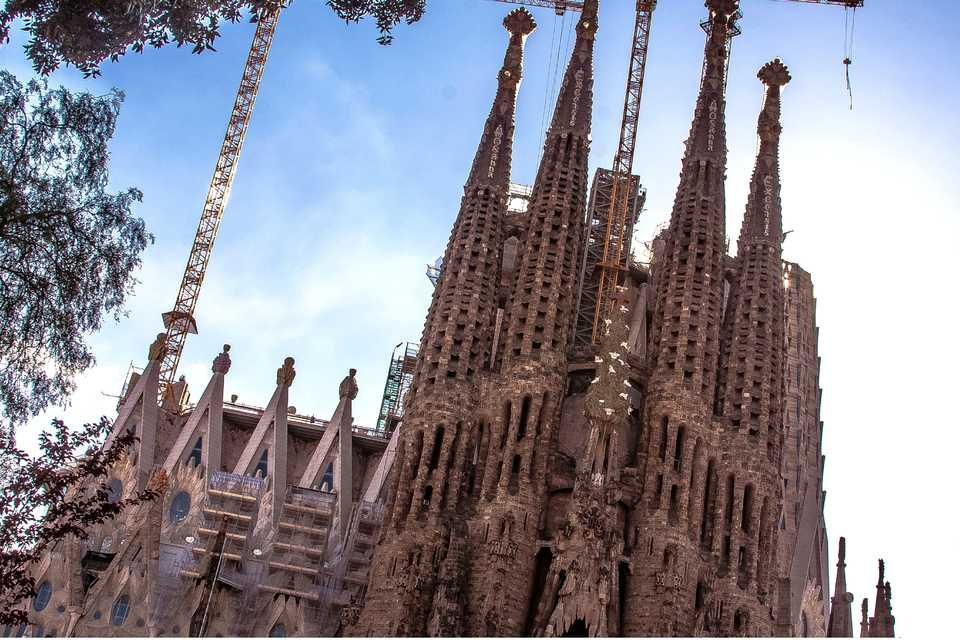 Buy entrance tickets to the temple additionally.
Buy entrance tickets to the temple additionally. 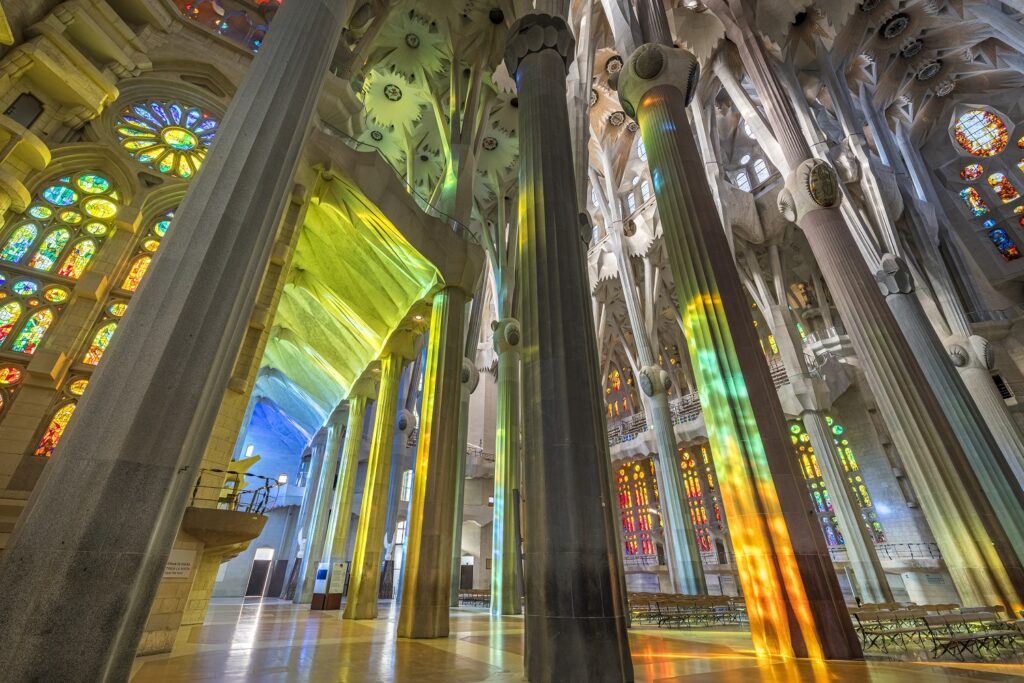

 Its phantasmagoric wondrous world, its mythical architecture is an ode to nature and beauty.
Its phantasmagoric wondrous world, its mythical architecture is an ode to nature and beauty.  In accordance with his drawings, the cathedral should be decorated with 3 facades that tell about the life path of Christ.
In accordance with his drawings, the cathedral should be decorated with 3 facades that tell about the life path of Christ. 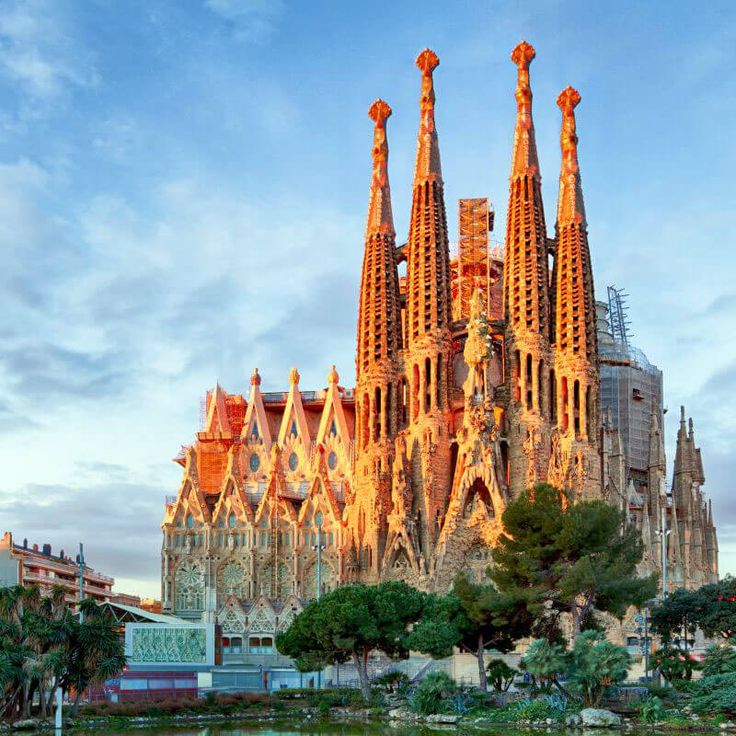 When the Sagrada Familia tour is over, you will linger inside the temple to be able to experience the atmosphere of the temple for yourself for as long as you need.
When the Sagrada Familia tour is over, you will linger inside the temple to be able to experience the atmosphere of the temple for yourself for as long as you need. 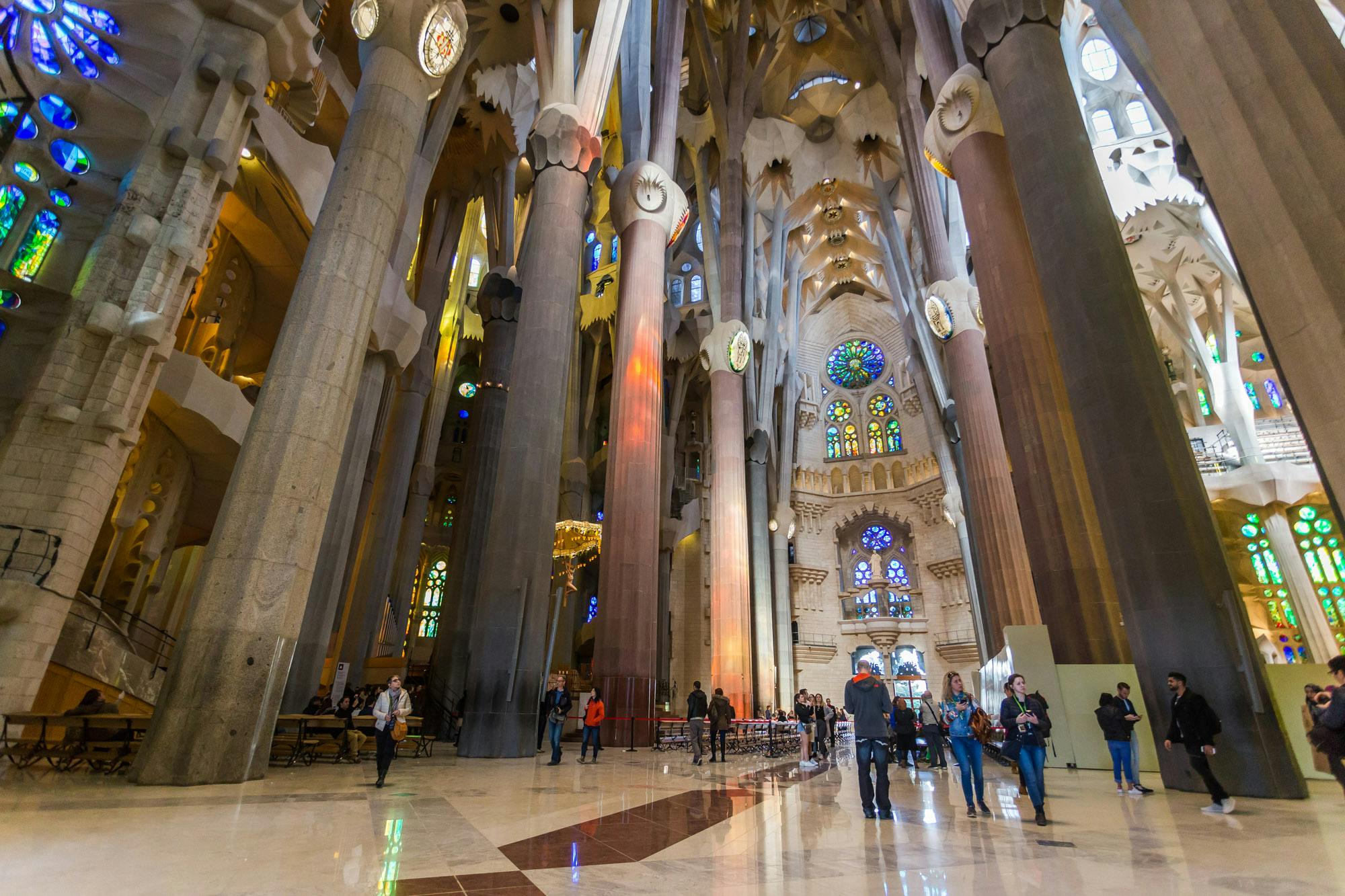
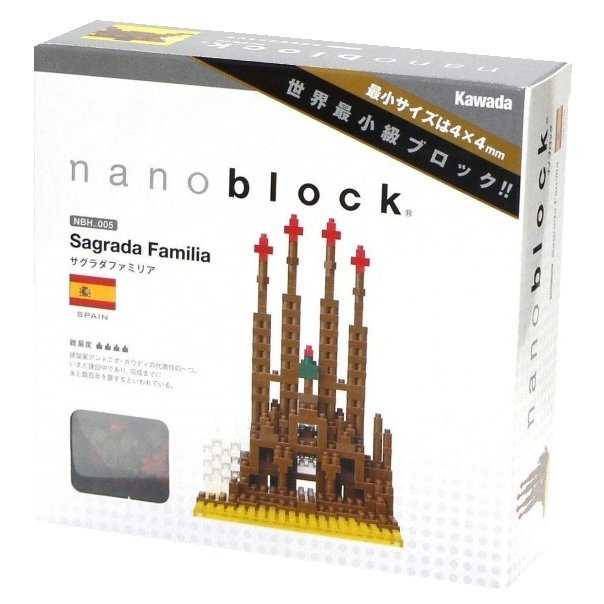
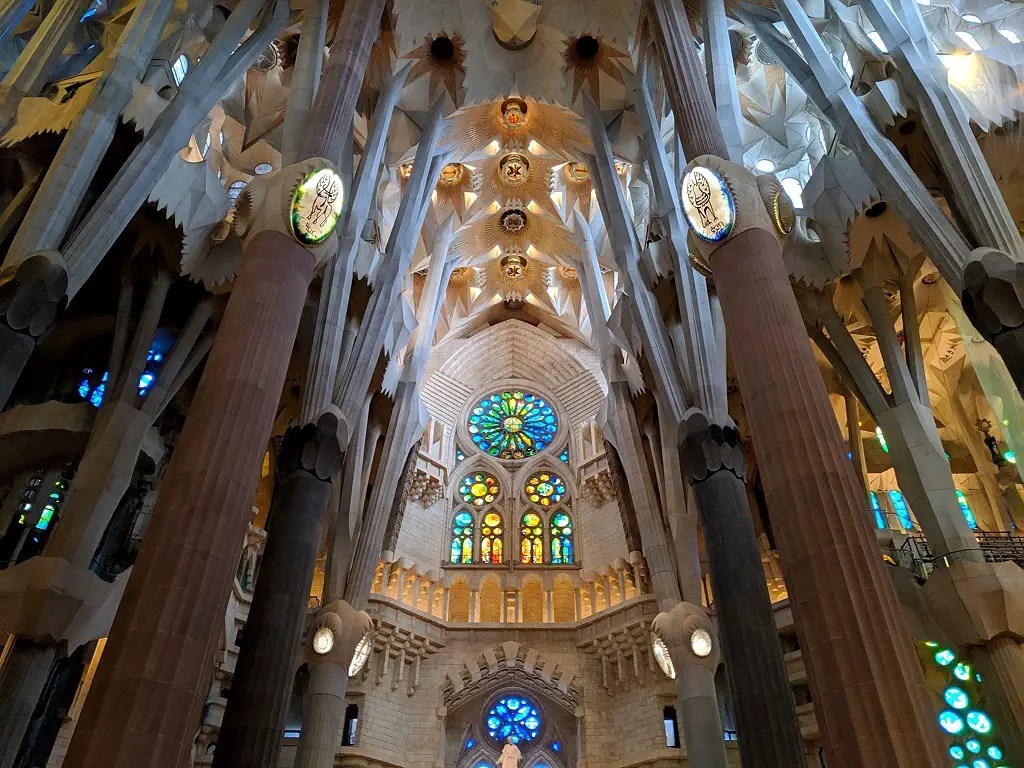 00
00
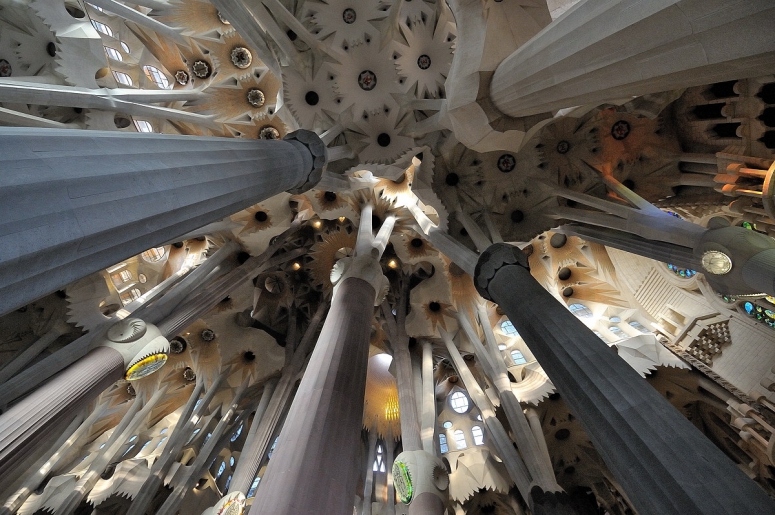
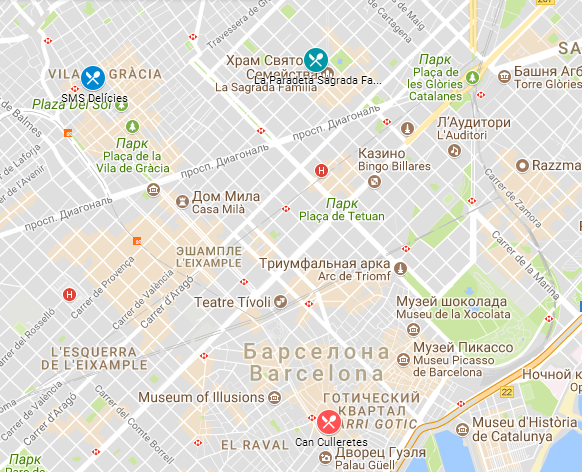 org promo codes than any other coupon site. Knoji is crowdsourced (like Wikipedia for shopping) – our community members share over 10,000 discount codes for brands like Sagrada Familia every day. Best yet, every SagradaFamilia.org discount codes is hand-tested and verified by a community member (and backed up with a screenshot from Sagradafamilia.org/en/ proving that it works), so you rarely run into expired Sagrada Familia promo codes on Knoji.
org promo codes than any other coupon site. Knoji is crowdsourced (like Wikipedia for shopping) – our community members share over 10,000 discount codes for brands like Sagrada Familia every day. Best yet, every SagradaFamilia.org discount codes is hand-tested and verified by a community member (and backed up with a screenshot from Sagradafamilia.org/en/ proving that it works), so you rarely run into expired Sagrada Familia promo codes on Knoji.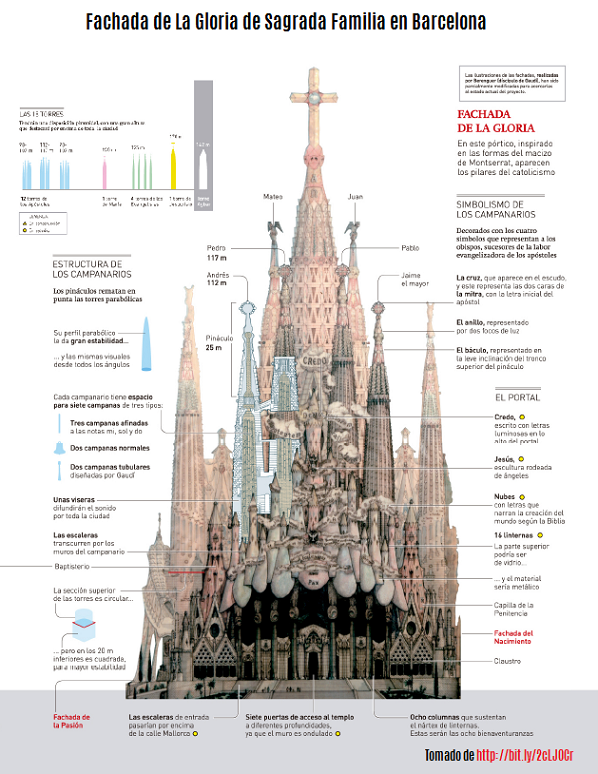 Used 1,859 times. Last used 52m ago.
Used 1,859 times. Last used 52m ago. org/en/
org/en/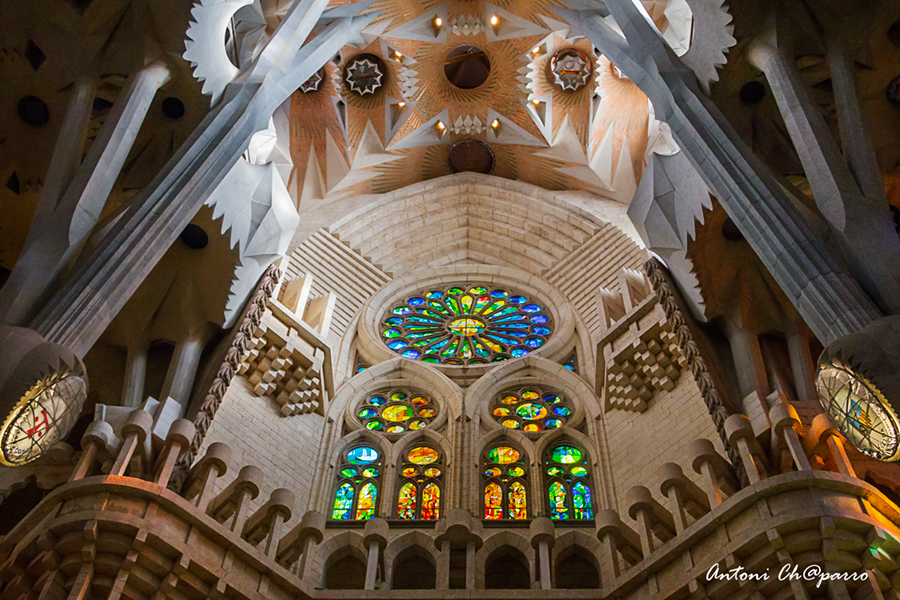 Sagrada Familia is among the most sought-after brands when it comes to coupons and discount offers, with hundreds of thousands of searches for coupons each month, offset against its relatively low volume of coupons issued.
Sagrada Familia is among the most sought-after brands when it comes to coupons and discount offers, with hundreds of thousands of searches for coupons each month, offset against its relatively low volume of coupons issued. 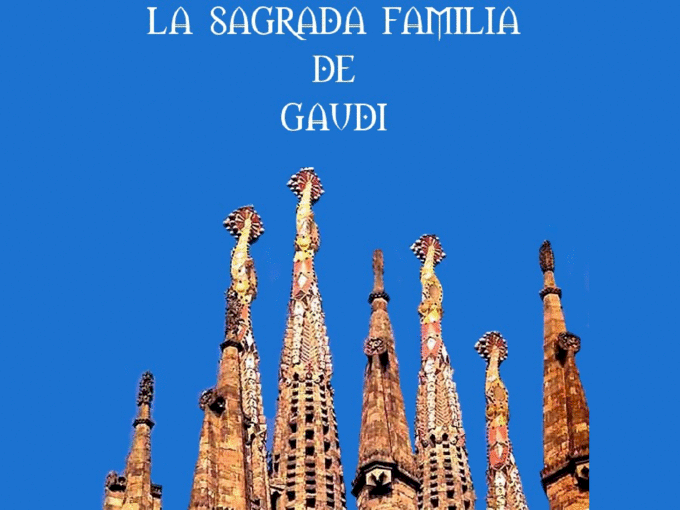 Over the past year, we’ve found an average of 1.0 discount codes per month for Sagrada Familia.
Over the past year, we’ve found an average of 1.0 discount codes per month for Sagrada Familia.
 org/en/. Also, look for the
org/en/. Also, look for the In 2018, the cathedral was visited by 3 million people. Now the project is at the finish line. Construction is scheduled to be completed in 2026.
In 2018, the cathedral was visited by 3 million people. Now the project is at the finish line. Construction is scheduled to be completed in 2026. 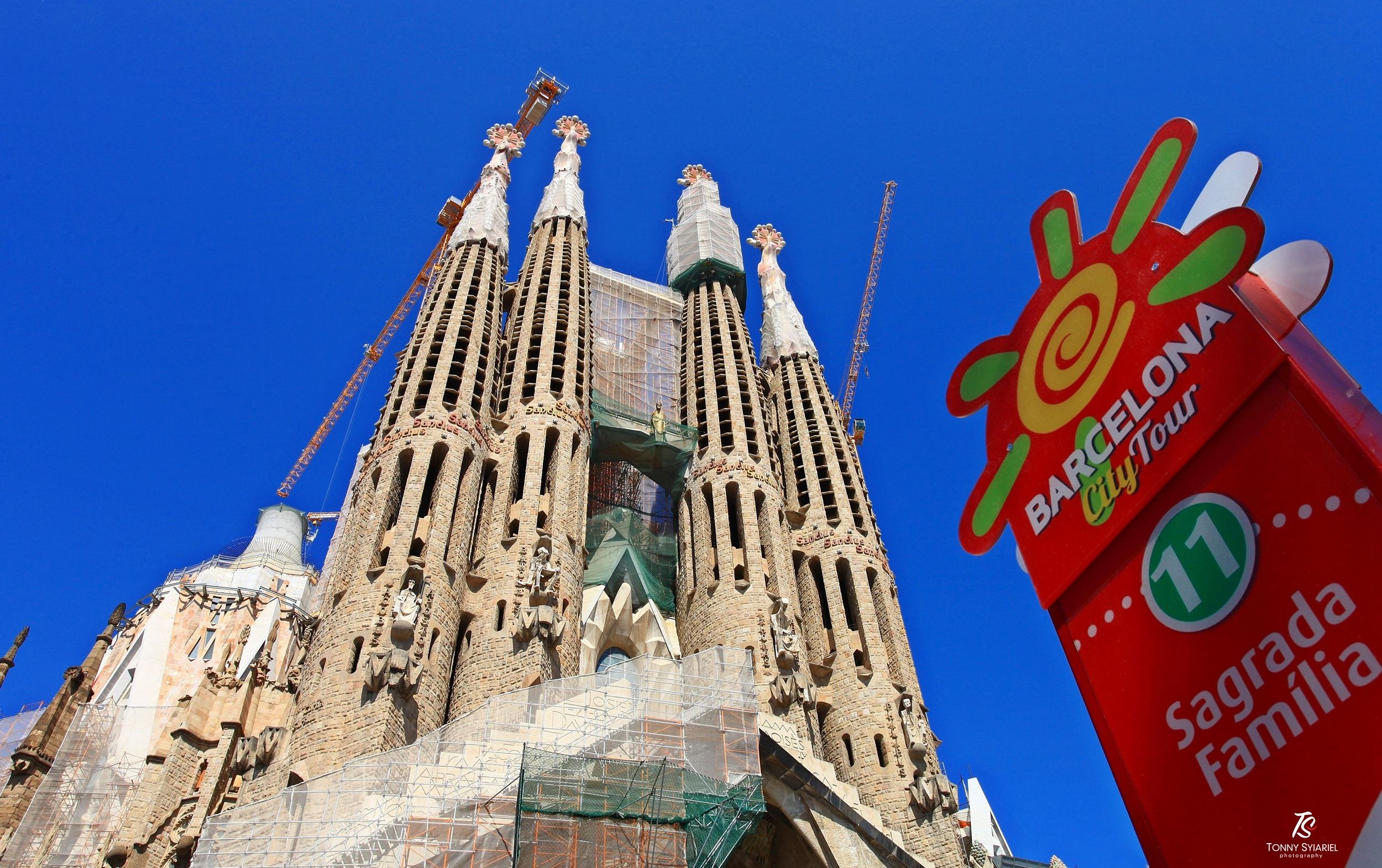 The central tower in the middle will reach 170 meters.
The central tower in the middle will reach 170 meters. 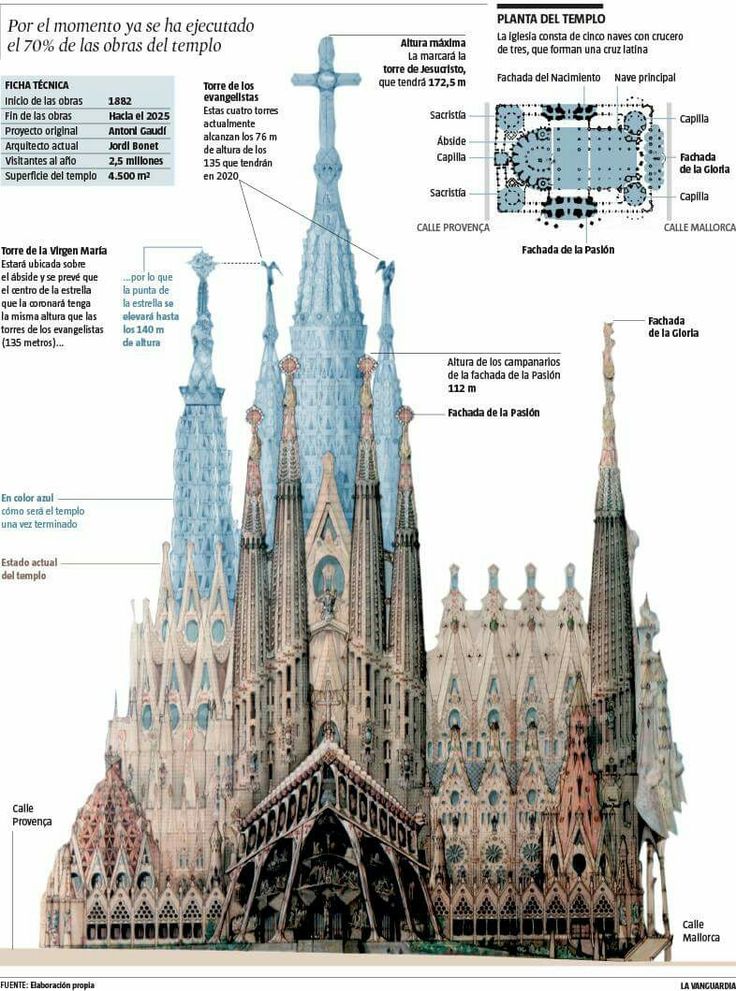 The concept is vague, we understand, but there is a list of things in which, with a high probability, you will not be allowed inside. These are mini-skirts, shorts, T-shirts, tops, transparent dresses and things with deep cutouts. Well, you can’t enter the cathedral barefoot. You probably didn’t plan, but just in case, we warn you.
The concept is vague, we understand, but there is a list of things in which, with a high probability, you will not be allowed inside. These are mini-skirts, shorts, T-shirts, tops, transparent dresses and things with deep cutouts. Well, you can’t enter the cathedral barefoot. You probably didn’t plan, but just in case, we warn you. 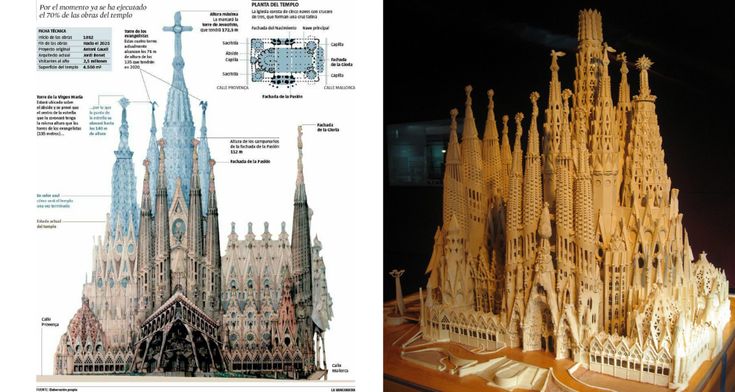 But if you want your visit to the Gaudí temple to be of high quality and as complete as possible, do not ignore this part of the structure. We are sure you will appreciate the view of the city.
But if you want your visit to the Gaudí temple to be of high quality and as complete as possible, do not ignore this part of the structure. We are sure you will appreciate the view of the city. 


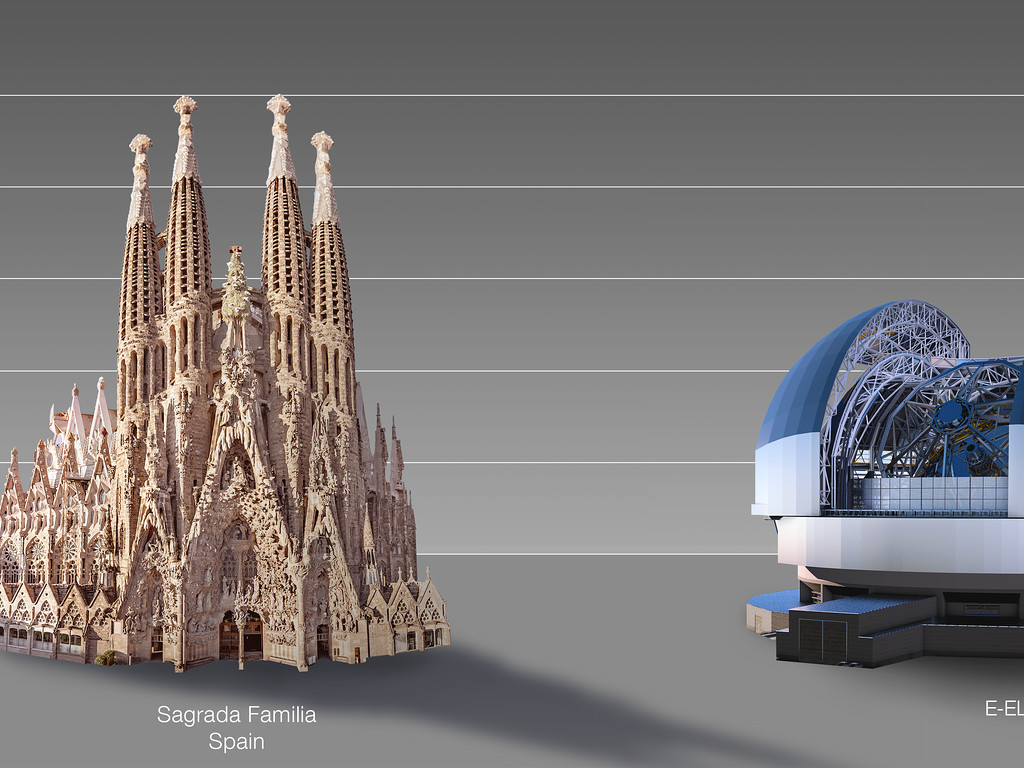
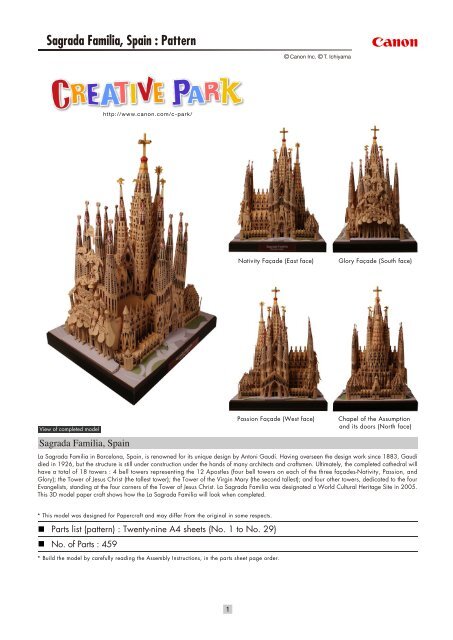
 5 hours, covering all the details of its interior.
5 hours, covering all the details of its interior. 
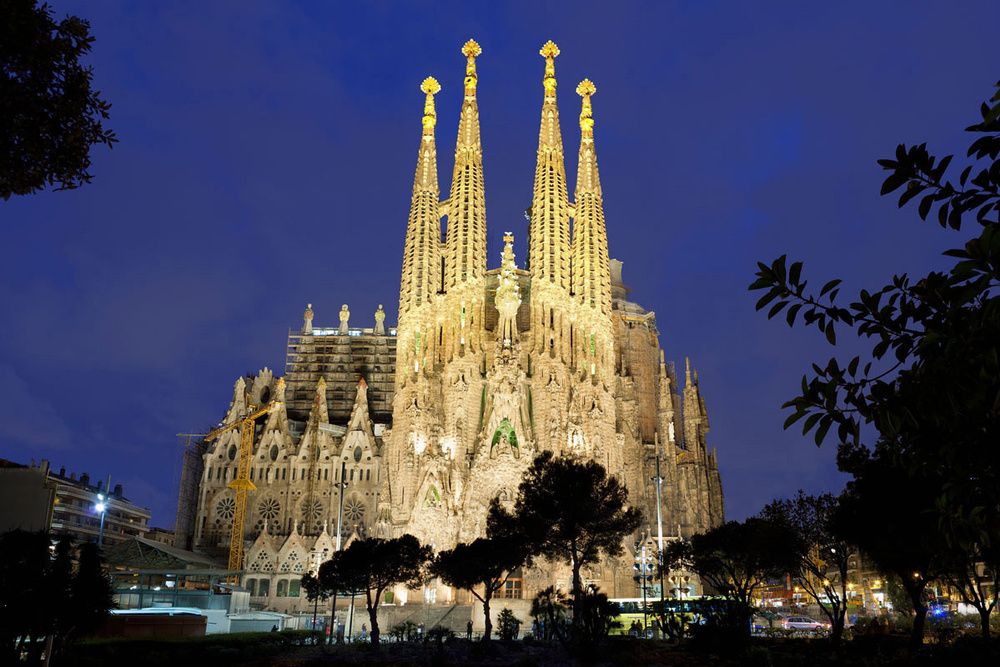
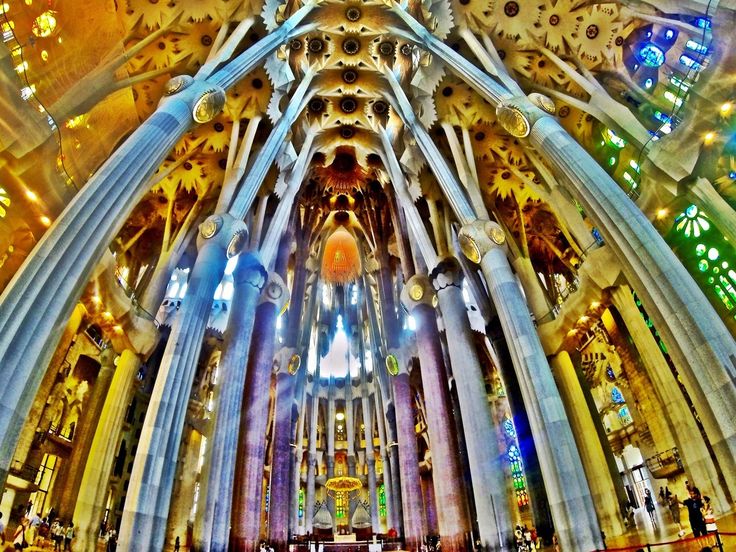 Because of the church’s central location, getting to the Sagrada Familia is super easy using the bus and train system. Because of this, you can plan your day in the Spanish capital flexibly and to your specific needs. The wonderful city center of Barcelona is also easily reachable by foot from the Sagrada Familia. For this reason, you can visit other top locations, sights, and attractions in Barcelona after exploring the Sagrada Familia.
Because of the church’s central location, getting to the Sagrada Familia is super easy using the bus and train system. Because of this, you can plan your day in the Spanish capital flexibly and to your specific needs. The wonderful city center of Barcelona is also easily reachable by foot from the Sagrada Familia. For this reason, you can visit other top locations, sights, and attractions in Barcelona after exploring the Sagrada Familia. 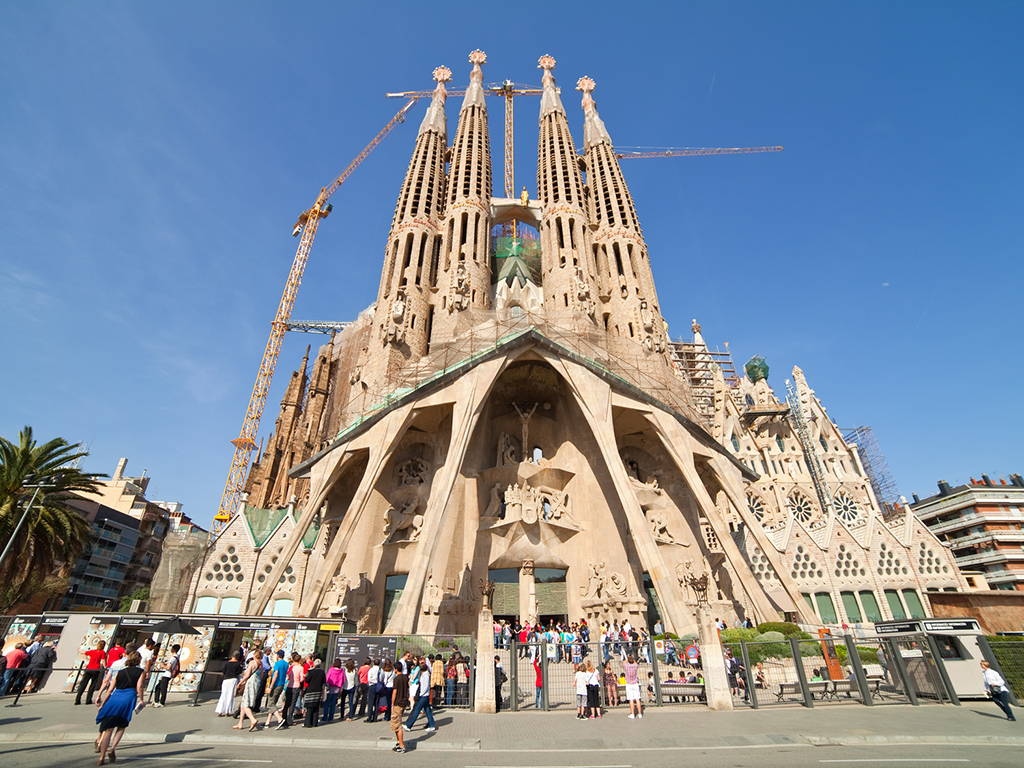 The easiest option is to use the purple underground train line L2 or to use the blue line L5, if you are planning to get off at the “Sagrada Familia” station. The bus B24 also stops at this station. You can also use the following bus lines to reach the basilica: 19, 33, 34, 50, or the 51. Simply ride to the station “Mallorca – Nàpols.” By using the public transportation system, traveling to the Sagrada Familia is easy and flexible.
The easiest option is to use the purple underground train line L2 or to use the blue line L5, if you are planning to get off at the “Sagrada Familia” station. The bus B24 also stops at this station. You can also use the following bus lines to reach the basilica: 19, 33, 34, 50, or the 51. Simply ride to the station “Mallorca – Nàpols.” By using the public transportation system, traveling to the Sagrada Familia is easy and flexible.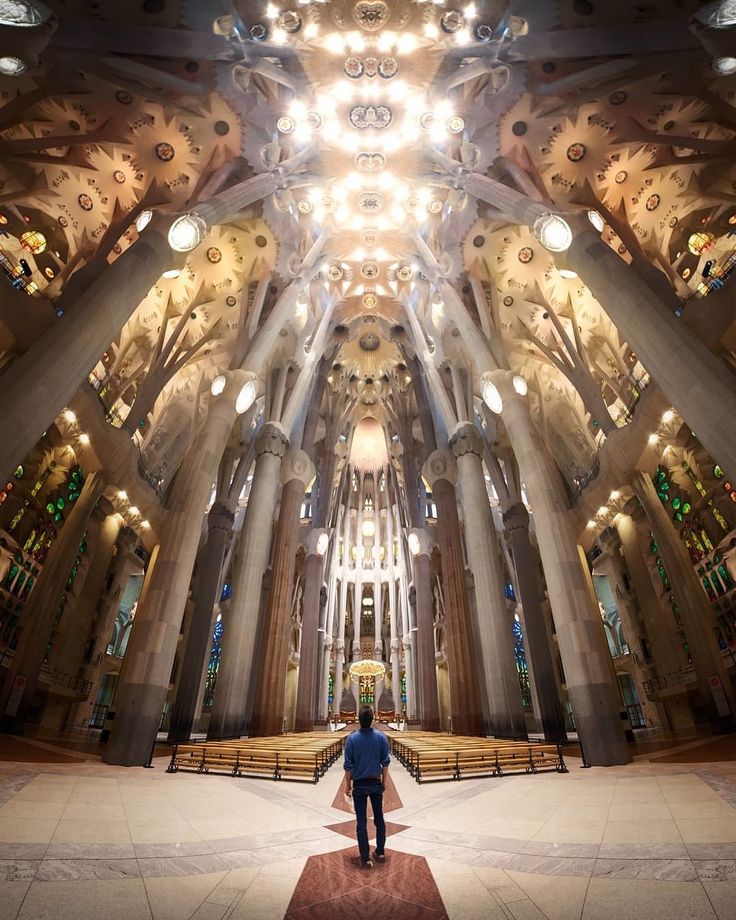

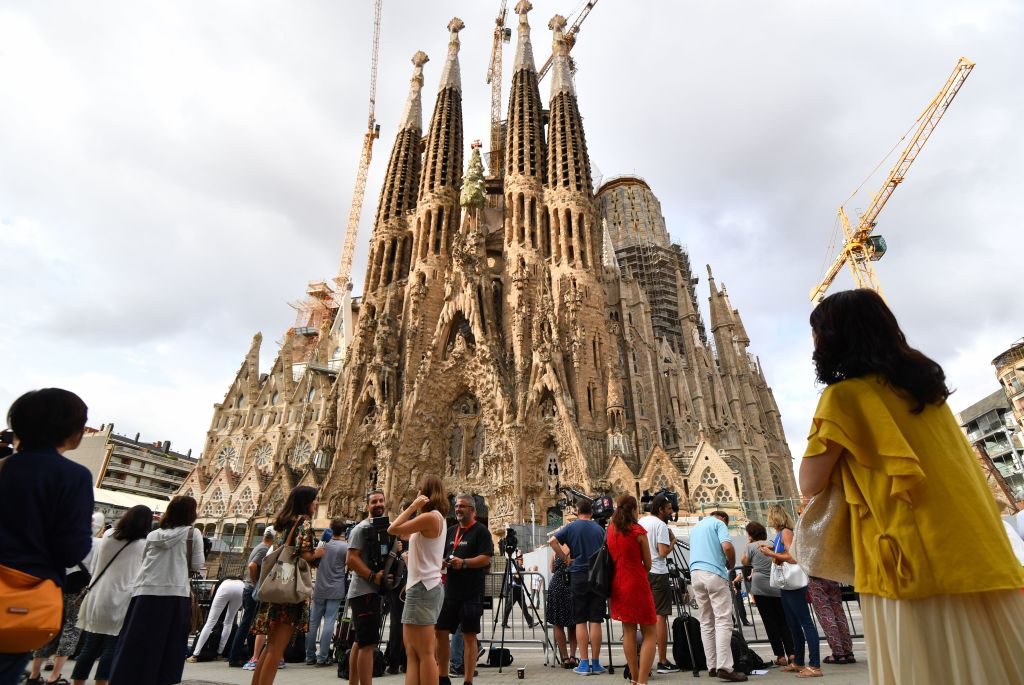 The work is directly financed by donations made by visitors and the public, which explains its slow construction progress. Gaudí even once said “the Expiatory Temple of the Sagrada Familia is made by the people and this is reflected in it. It is a work that is in the hands of God and the will of the people”. Construction still continues today and its completion is scheduled for 2026, a date symbolic of the centenary of Antoni Gaudí’s death.
The work is directly financed by donations made by visitors and the public, which explains its slow construction progress. Gaudí even once said “the Expiatory Temple of the Sagrada Familia is made by the people and this is reflected in it. It is a work that is in the hands of God and the will of the people”. Construction still continues today and its completion is scheduled for 2026, a date symbolic of the centenary of Antoni Gaudí’s death.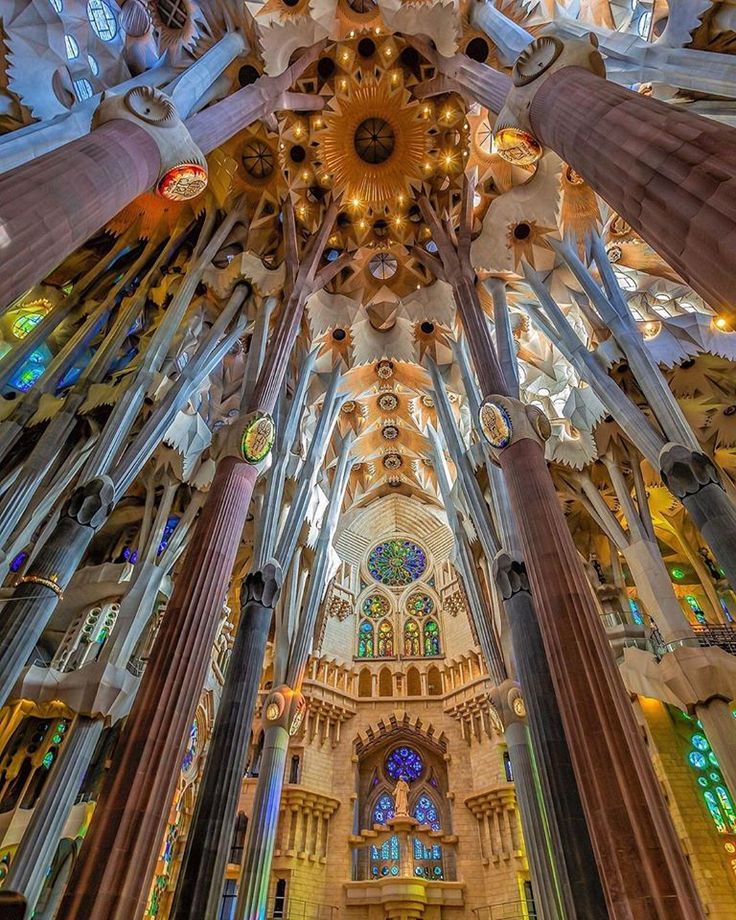
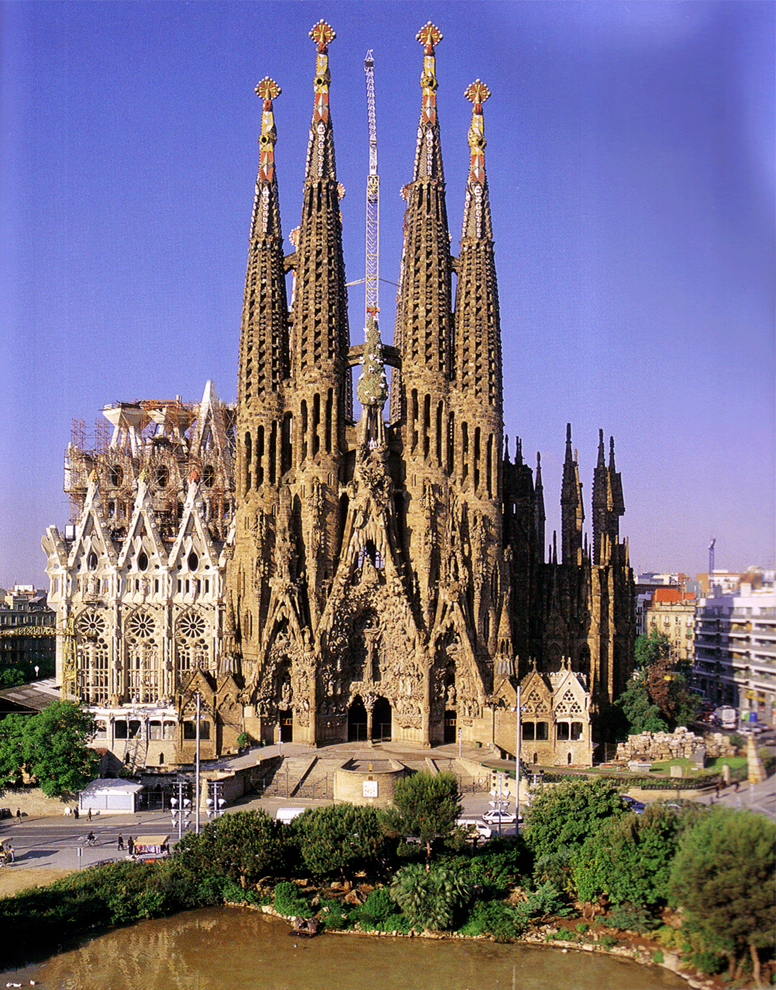 The facade culminates with four bell towers dedicated to St. Matthew, St. Jude, St. Simon and St. Barnabas.
The facade culminates with four bell towers dedicated to St. Matthew, St. Jude, St. Simon and St. Barnabas.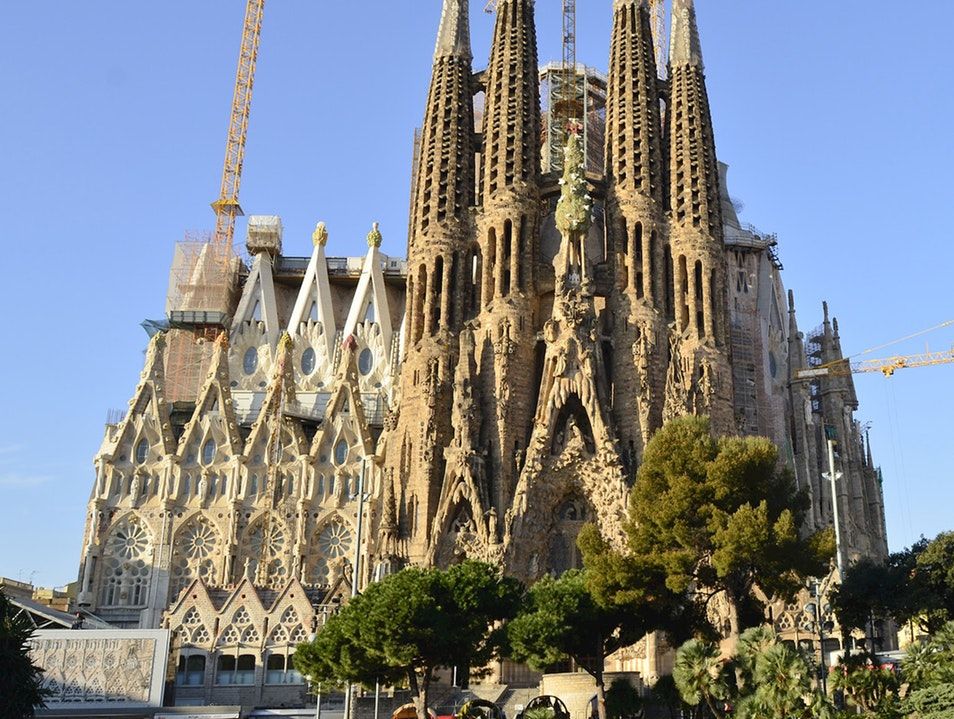 Work on this facade began in 2002 and it is therefore not very far along.
Work on this facade began in 2002 and it is therefore not very far along.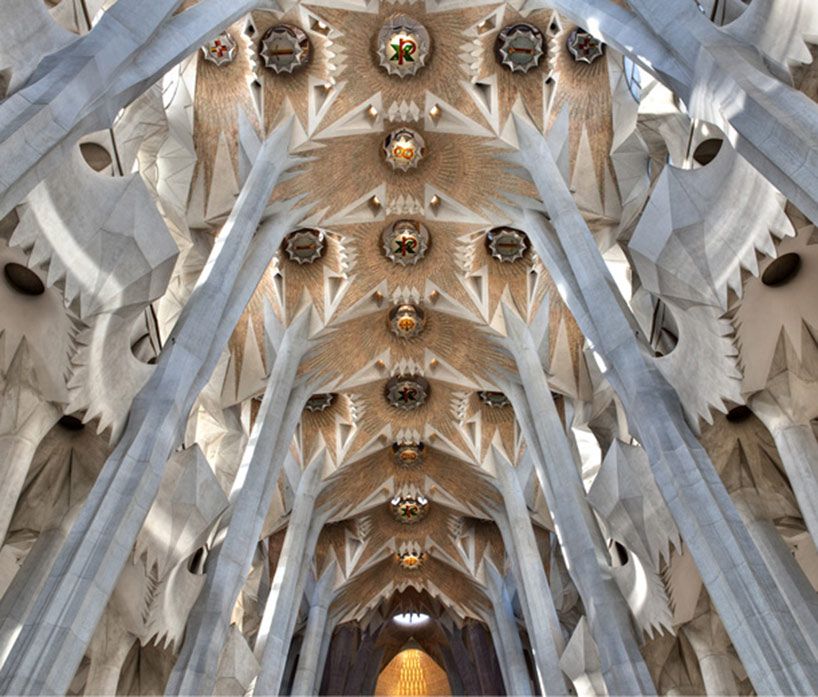
 The keystones that cover the central nave of the temple were completed in 1993. At the central nave, the height of the arch is 45 metres by 30 meters. As for the height of the apse vault, it reaches 75 metres high.
The keystones that cover the central nave of the temple were completed in 1993. At the central nave, the height of the arch is 45 metres by 30 meters. As for the height of the apse vault, it reaches 75 metres high.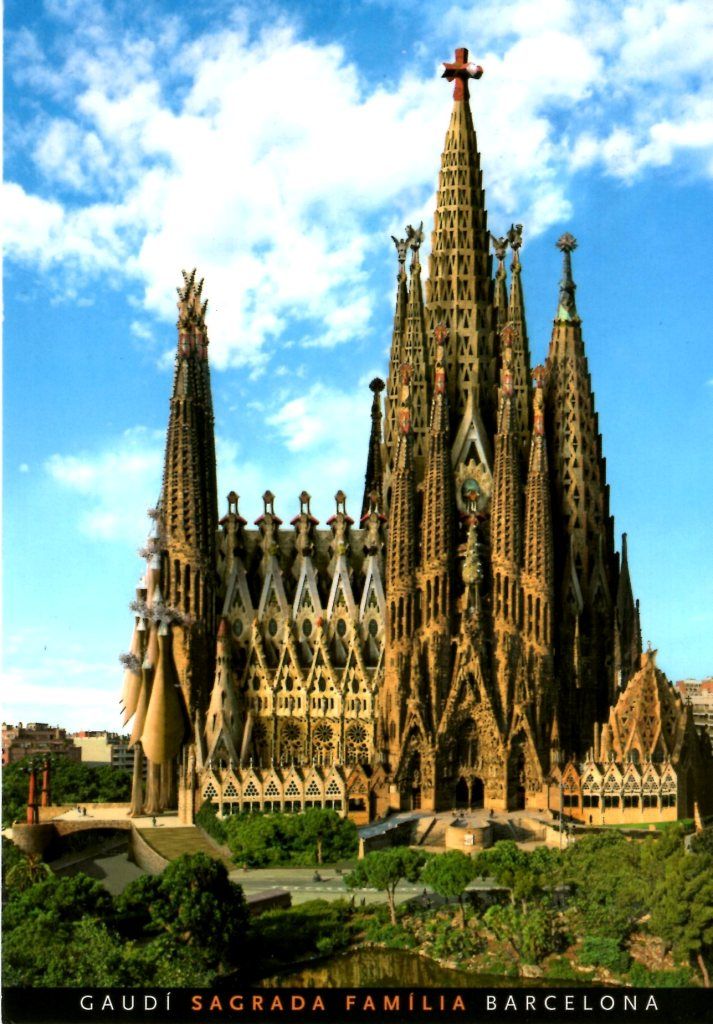 50
50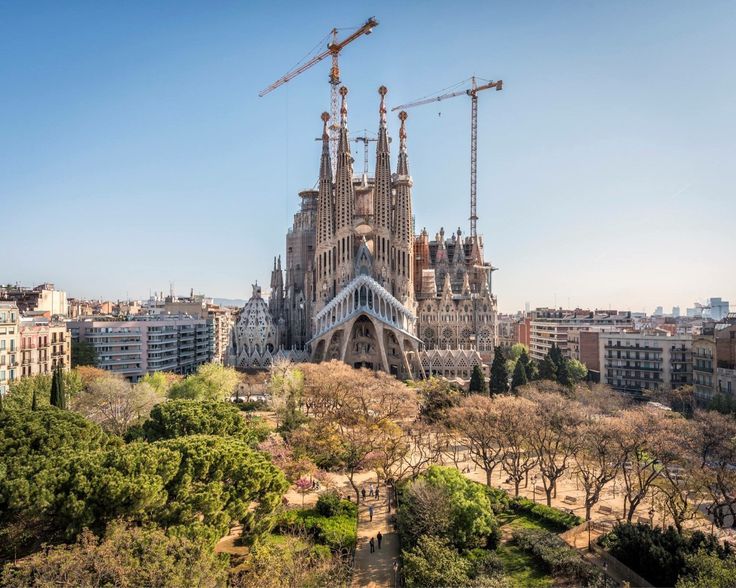
 Every year there are 2-2.5 million people here. And those are the ones who went inside. It is absolutely impossible to count everyone who came just to see the Sagrada Familia from the outside. Huge crowds of tourists constantly surround it and, as we understand, it is very desirable to arrive as early as possible in order to freely examine it. In terms of time, a tour of the church inside and out will take at least two hours, it took us three, it is such an incredible sight! Take your time and don’t plan too much on this day.
Every year there are 2-2.5 million people here. And those are the ones who went inside. It is absolutely impossible to count everyone who came just to see the Sagrada Familia from the outside. Huge crowds of tourists constantly surround it and, as we understand, it is very desirable to arrive as early as possible in order to freely examine it. In terms of time, a tour of the church inside and out will take at least two hours, it took us three, it is such an incredible sight! Take your time and don’t plan too much on this day. 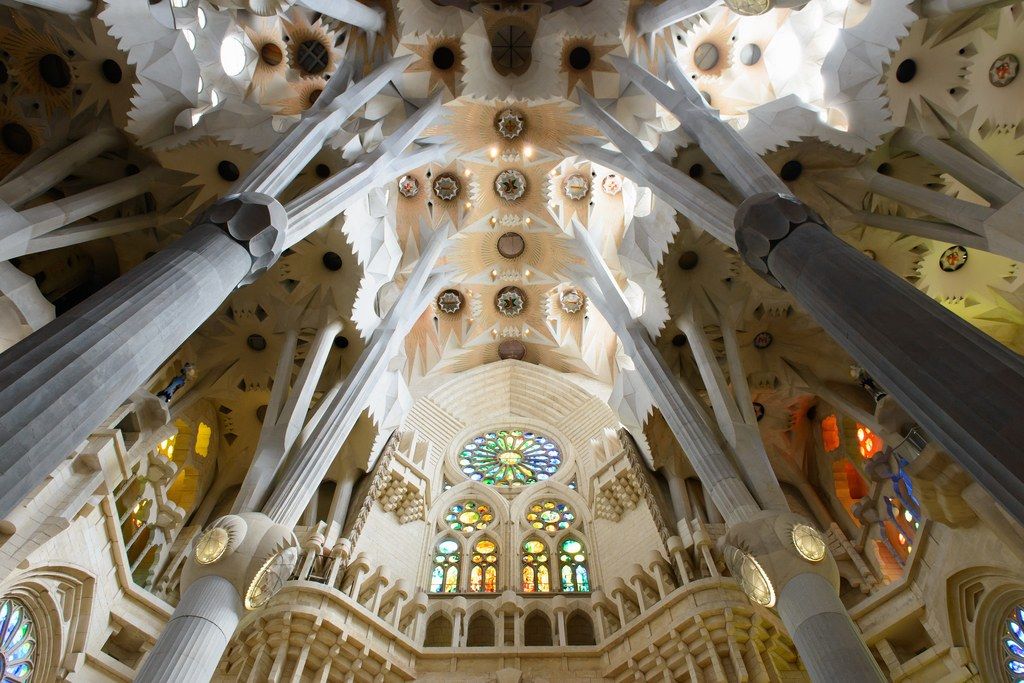 There is no queue at the entrance with a ready-made ticket. Take an audio guide in Russian, you won’t need a live guide. Even when you have examined everything completely, just sit on the bench inside and sit, letting go of all thoughts and throwing your head back. This is a strange feeling from structures literally flying up, the temple seems to take off into the sky. It’s hard to explain, you’ll understand everything yourself!
There is no queue at the entrance with a ready-made ticket. Take an audio guide in Russian, you won’t need a live guide. Even when you have examined everything completely, just sit on the bench inside and sit, letting go of all thoughts and throwing your head back. This is a strange feeling from structures literally flying up, the temple seems to take off into the sky. It’s hard to explain, you’ll understand everything yourself! 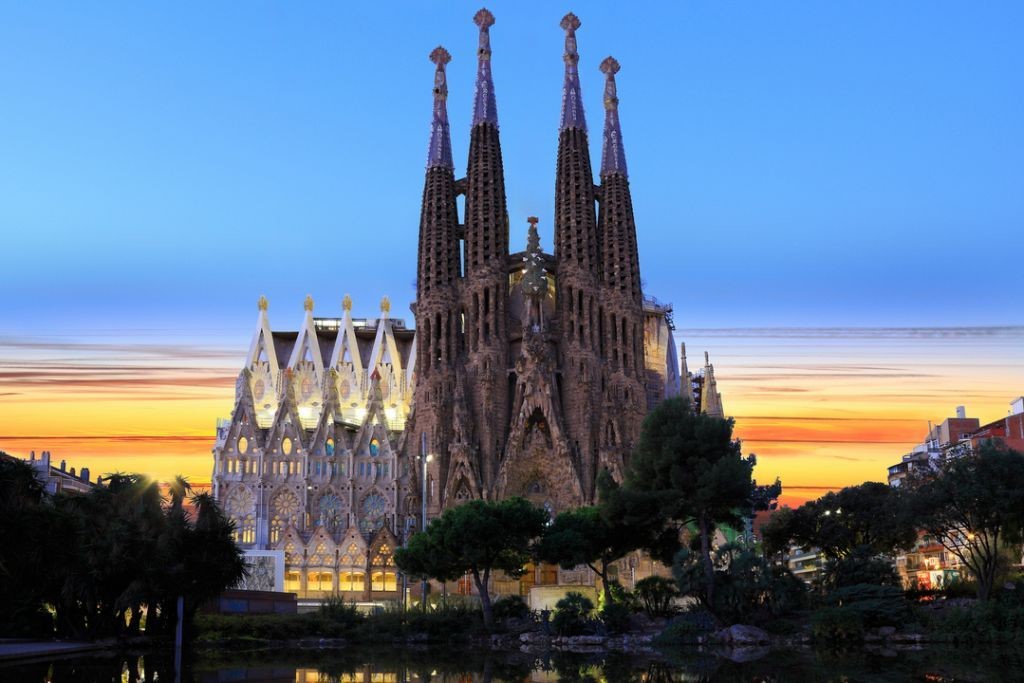
 But no! Entering inside, you will immediately understand that nature has become the prototype of the power structure of the building. Graceful columns look like a forest, and the vault they support resembles the closed crowns of trees.
But no! Entering inside, you will immediately understand that nature has become the prototype of the power structure of the building. Graceful columns look like a forest, and the vault they support resembles the closed crowns of trees. 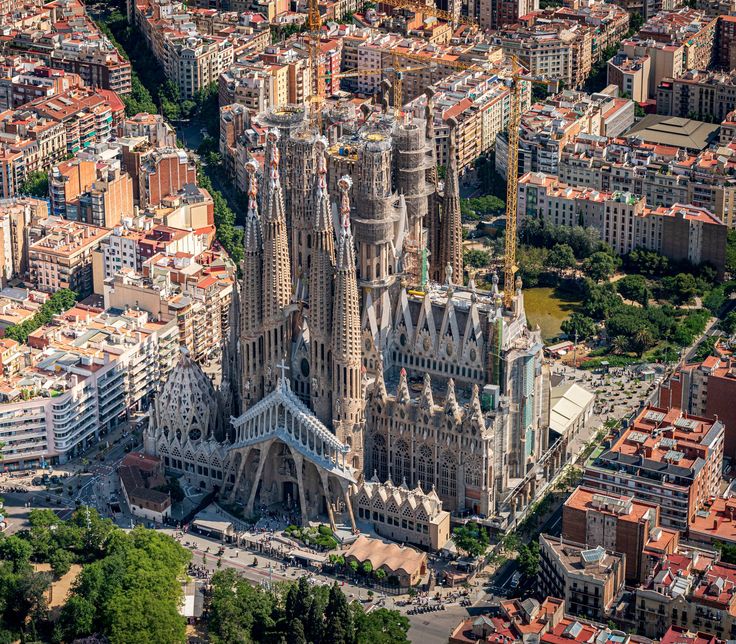
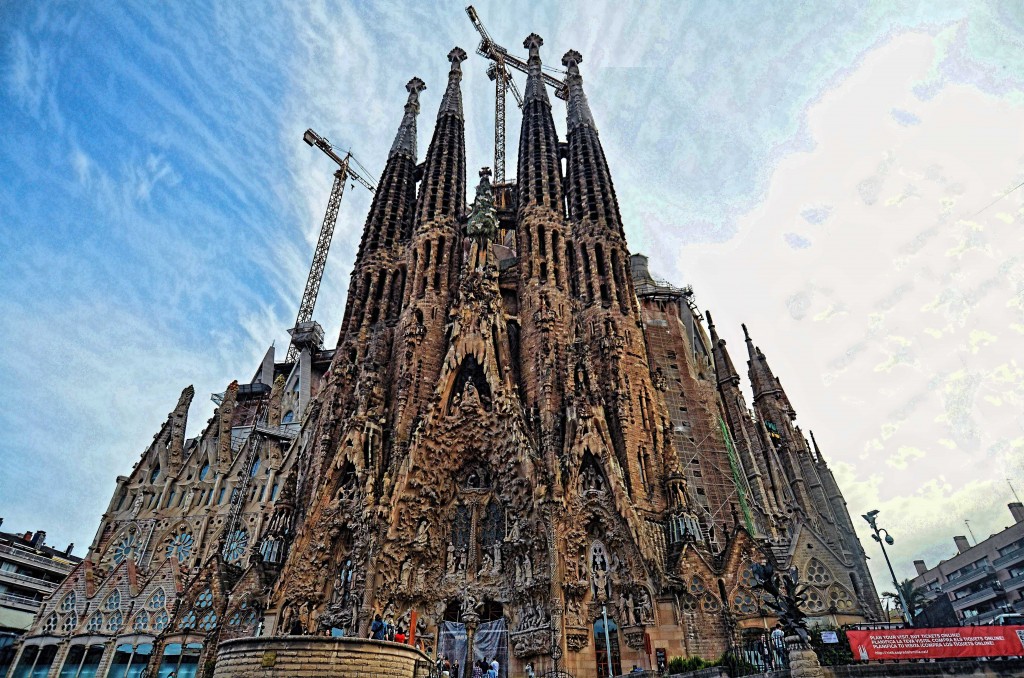 sagradafamilia.cat
sagradafamilia.cat 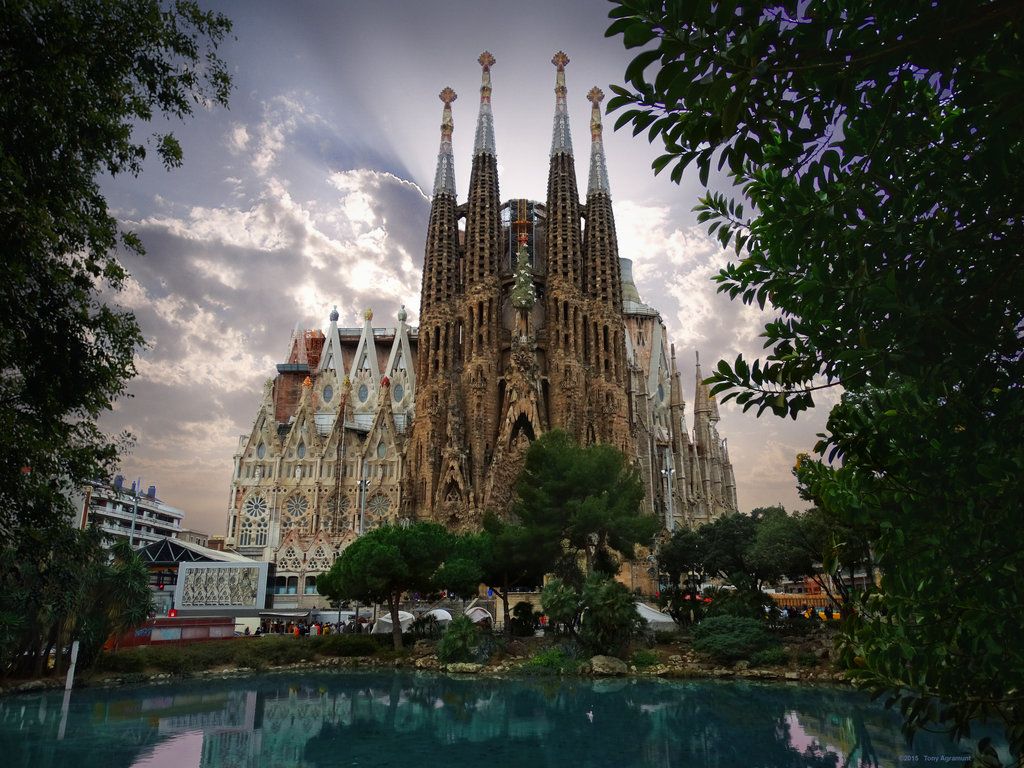 The descent is on foot and consists of 400 steps. Only adults are allowed on the towers.
The descent is on foot and consists of 400 steps. Only adults are allowed on the towers. 
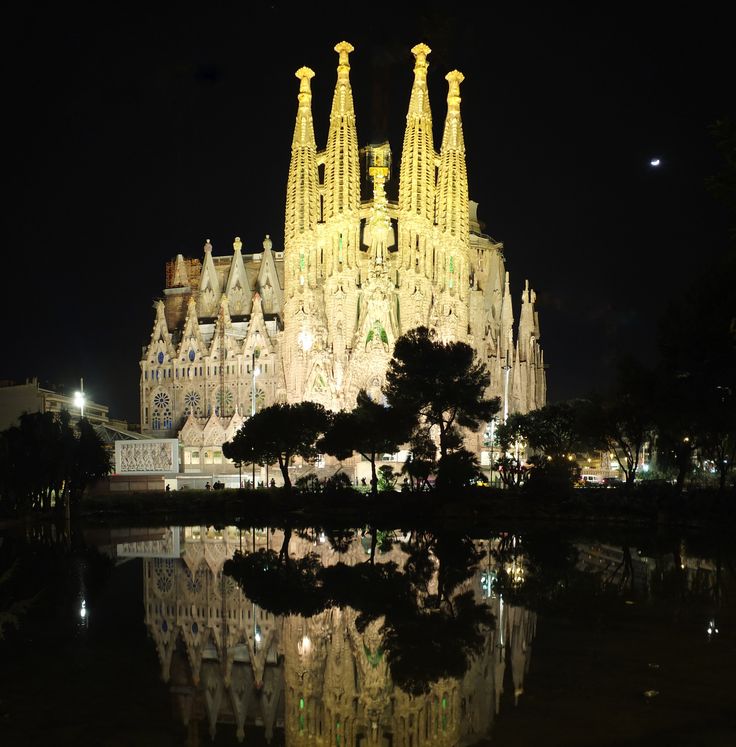
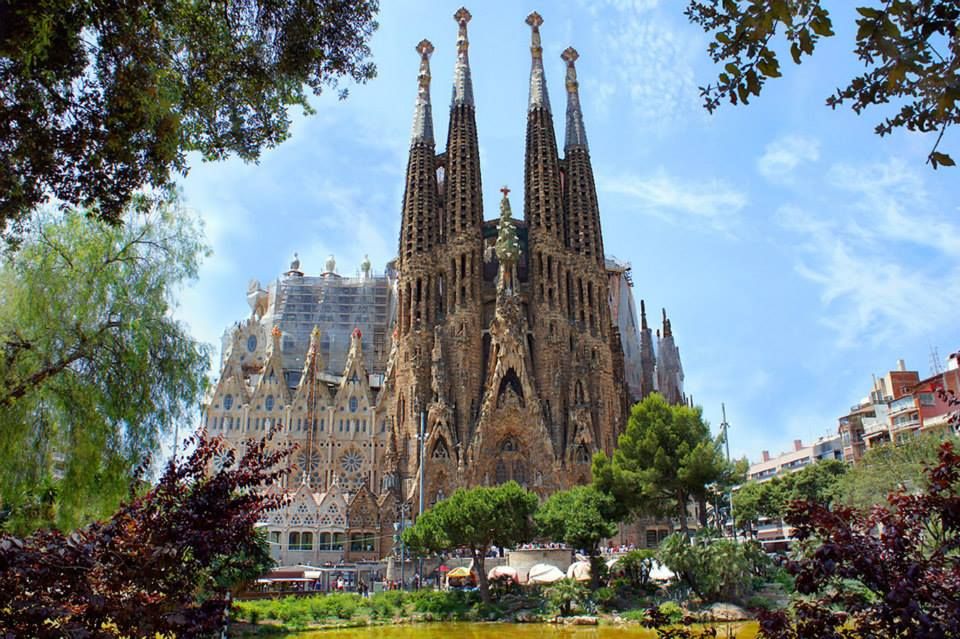
 hablando de vistas; desde el parque de atracciones de Tibidabo también vamos a tener vistas preciosas mientras que montamos en la montaña rusa y en la noria! En el Museo de Ideas e Inventos vamos a ver inventos tan listos y a la vez tan sencillos que nos van a sorprender. Los niños se van a divertir mucho caminando sobre agua, y en los barquitos de motor del Bubble Park. A toda la familia le va a encantar los talleres y la yincana del Poble Espanyol. No nos vamos a perder la belleza del espectáculo de la Fuente Mágica, y además va a haber tiempo para aprender algo de la historia de la península Ibérica en el museo de Arqueología de Catalunya. Como veis, tenemos planificado un montón de diversión para toda la familia, así que vámonos! A disfrutar de Barcelona en familia!
hablando de vistas; desde el parque de atracciones de Tibidabo también vamos a tener vistas preciosas mientras que montamos en la montaña rusa y en la noria! En el Museo de Ideas e Inventos vamos a ver inventos tan listos y a la vez tan sencillos que nos van a sorprender. Los niños se van a divertir mucho caminando sobre agua, y en los barquitos de motor del Bubble Park. A toda la familia le va a encantar los talleres y la yincana del Poble Espanyol. No nos vamos a perder la belleza del espectáculo de la Fuente Mágica, y además va a haber tiempo para aprender algo de la historia de la península Ibérica en el museo de Arqueología de Catalunya. Como veis, tenemos planificado un montón de diversión para toda la familia, así que vámonos! A disfrutar de Barcelona en familia! 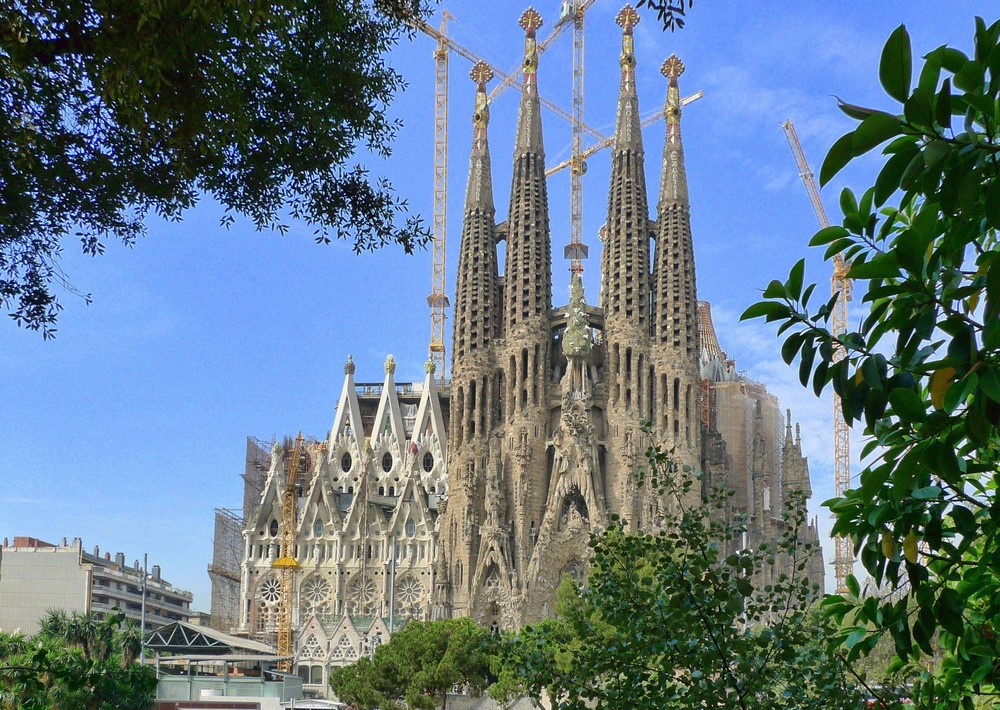 C. Barcelona
C. Barcelona
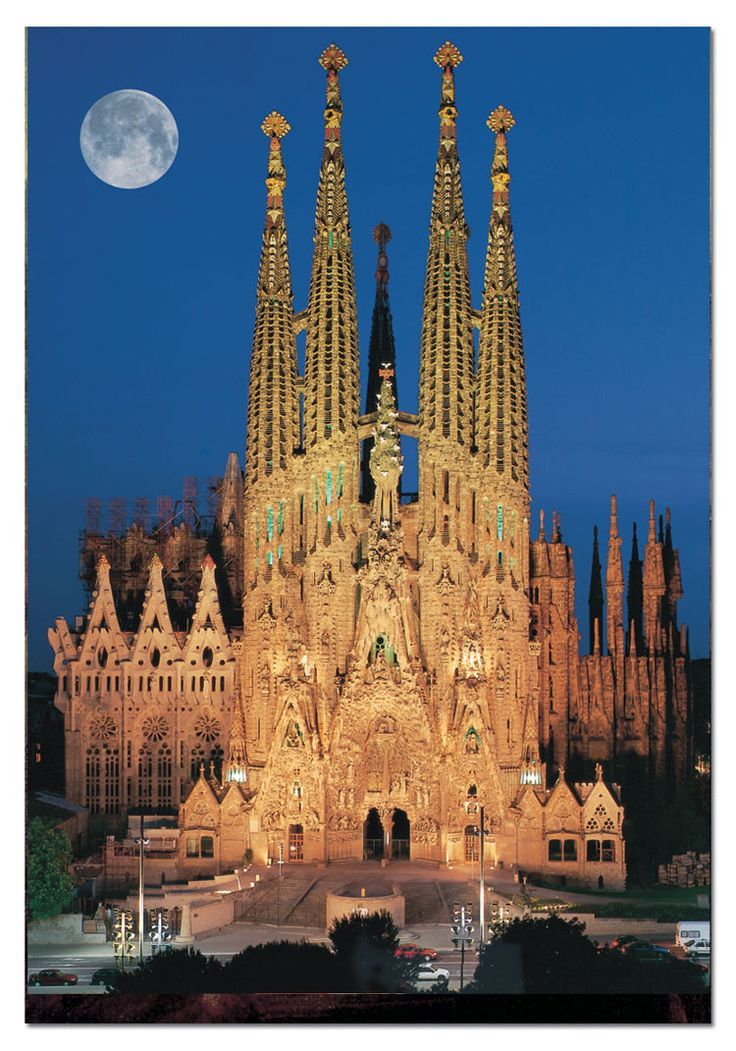
 Del Villar planned to build a neo-Gothic church, but managed to build only a crypt under the apse. At 189Antonio Gaudi became the chief architect of the building in 1999. The construction of the Sagrada Familia continued throughout the subsequent years of Gaudí’s life. When asked about the unusually long duration of the work, he replied: “My client is in no hurry.” From the very beginning, Gaudí decided not to follow the path of conventional neo-Gothic style architecture. The church was to be Gothic only in spirit and in basic forms, having a plan in the form of a “Latin cross”, but in all other respects the architect intended to use his own language of visual imagery. As the construction progressed, the cathedral acquired its unusual look for a Catholic church: spindly towers, shaped like sand castles, roof elements made in the style of cubism.
Del Villar planned to build a neo-Gothic church, but managed to build only a crypt under the apse. At 189Antonio Gaudi became the chief architect of the building in 1999. The construction of the Sagrada Familia continued throughout the subsequent years of Gaudí’s life. When asked about the unusually long duration of the work, he replied: “My client is in no hurry.” From the very beginning, Gaudí decided not to follow the path of conventional neo-Gothic style architecture. The church was to be Gothic only in spirit and in basic forms, having a plan in the form of a “Latin cross”, but in all other respects the architect intended to use his own language of visual imagery. As the construction progressed, the cathedral acquired its unusual look for a Catholic church: spindly towers, shaped like sand castles, roof elements made in the style of cubism. 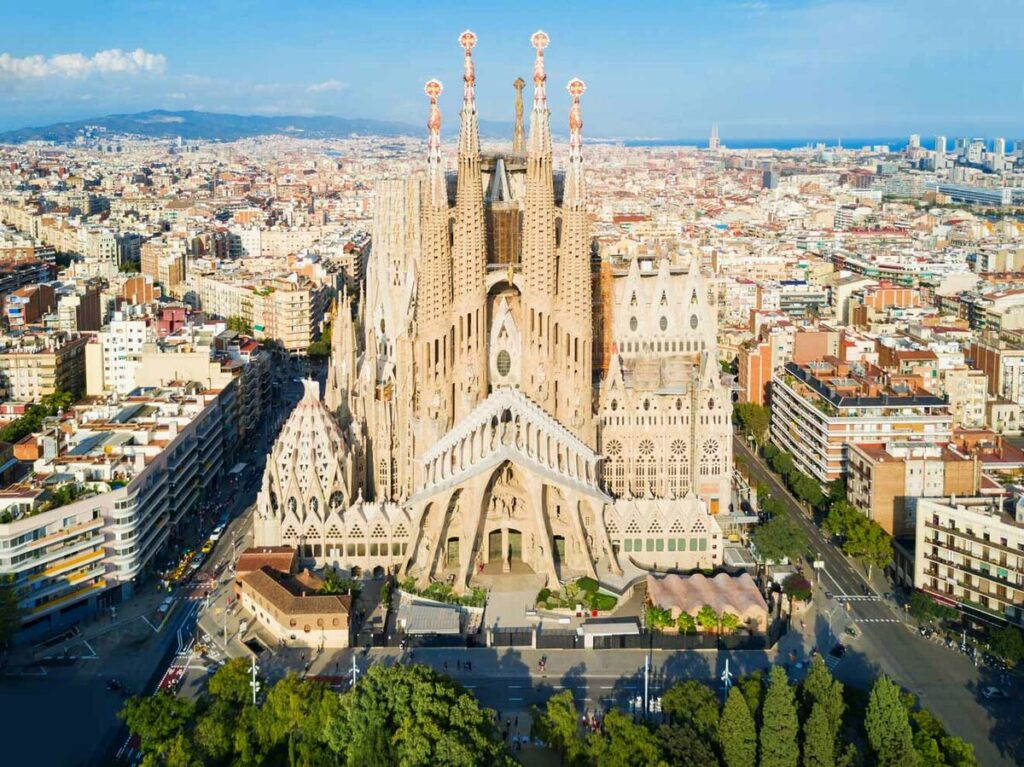 To do this, he needed to be constantly present at the construction site, and as a result, he moved to one of the rooms in the unfinished building of the cathedral. Watching the construction, Gaudi constantly intervened in the progress of the work: unexpected thoughts came to his mind and he tried to implement them, sometimes even stopping work and breaking what had been built … So one of the most amazing structures in the world began to rise above the houses of Barcelona, which caused some confusion among the townspeople Q: What kind of church is this? This is not an anthill, not a stalagmite growing out of the ground, a stone icicle! As conceived by Gaudi, all three facades of the Sagrada Familia were to have a stylistically identical design and be crowned with four high towers of curvilinear outlines. As a result, twelve towers would rise above the temple, each of which would symbolize one of the twelve apostles. And each of the three facades was dedicated to one of the three central plots of the earthly life of Christ: “Christmas”, “The Passion of Christ” and “Resurrection”.
To do this, he needed to be constantly present at the construction site, and as a result, he moved to one of the rooms in the unfinished building of the cathedral. Watching the construction, Gaudi constantly intervened in the progress of the work: unexpected thoughts came to his mind and he tried to implement them, sometimes even stopping work and breaking what had been built … So one of the most amazing structures in the world began to rise above the houses of Barcelona, which caused some confusion among the townspeople Q: What kind of church is this? This is not an anthill, not a stalagmite growing out of the ground, a stone icicle! As conceived by Gaudi, all three facades of the Sagrada Familia were to have a stylistically identical design and be crowned with four high towers of curvilinear outlines. As a result, twelve towers would rise above the temple, each of which would symbolize one of the twelve apostles. And each of the three facades was dedicated to one of the three central plots of the earthly life of Christ: “Christmas”, “The Passion of Christ” and “Resurrection”.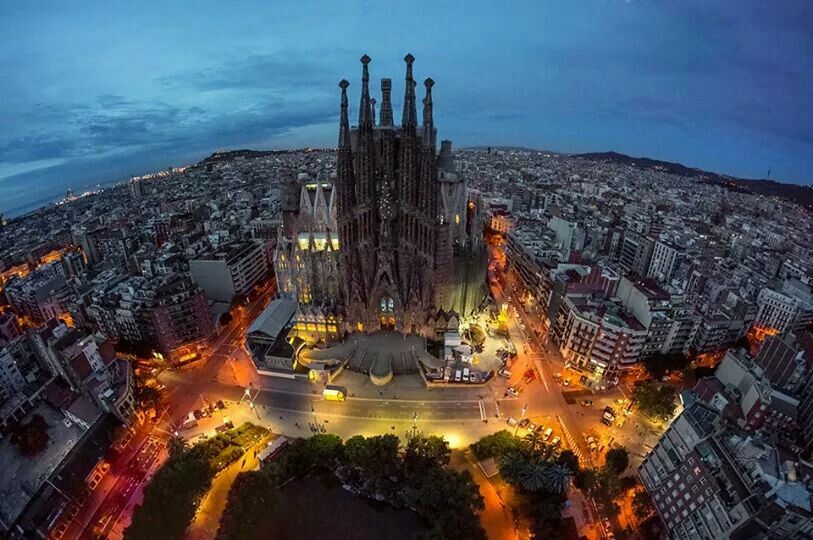

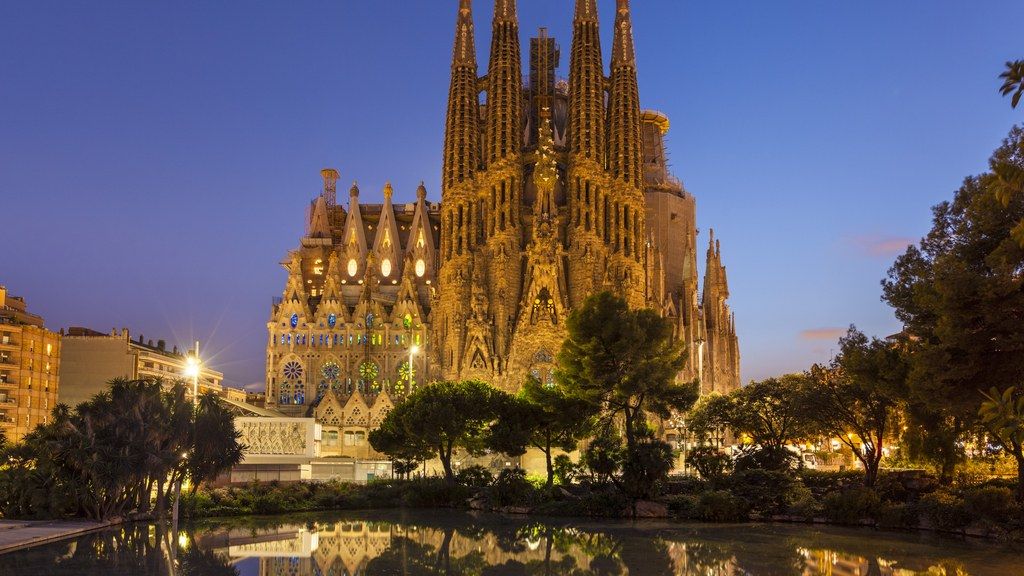 26 million people, which puts it on a par with the Prado Museum and the Alhambra Palace in popularity.
26 million people, which puts it on a par with the Prado Museum and the Alhambra Palace in popularity. 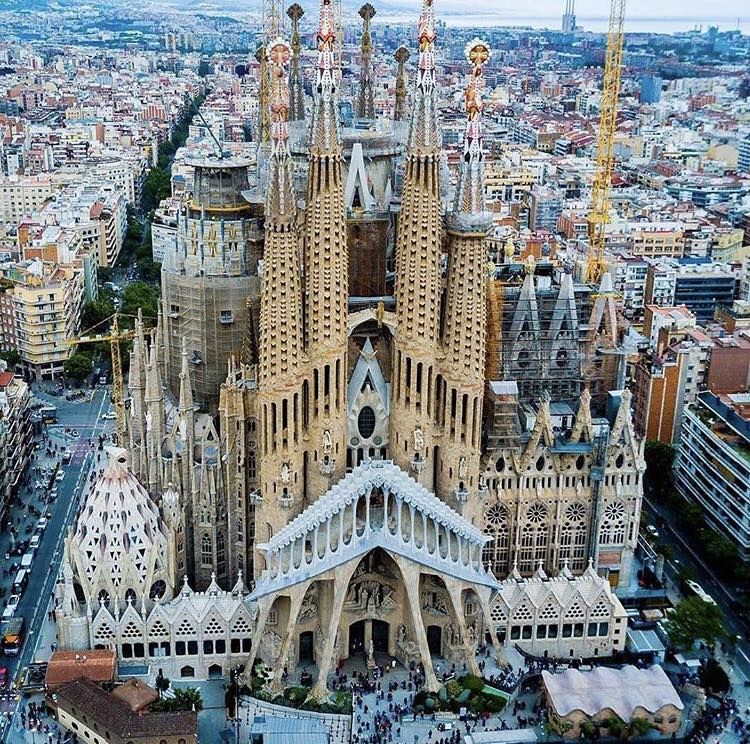
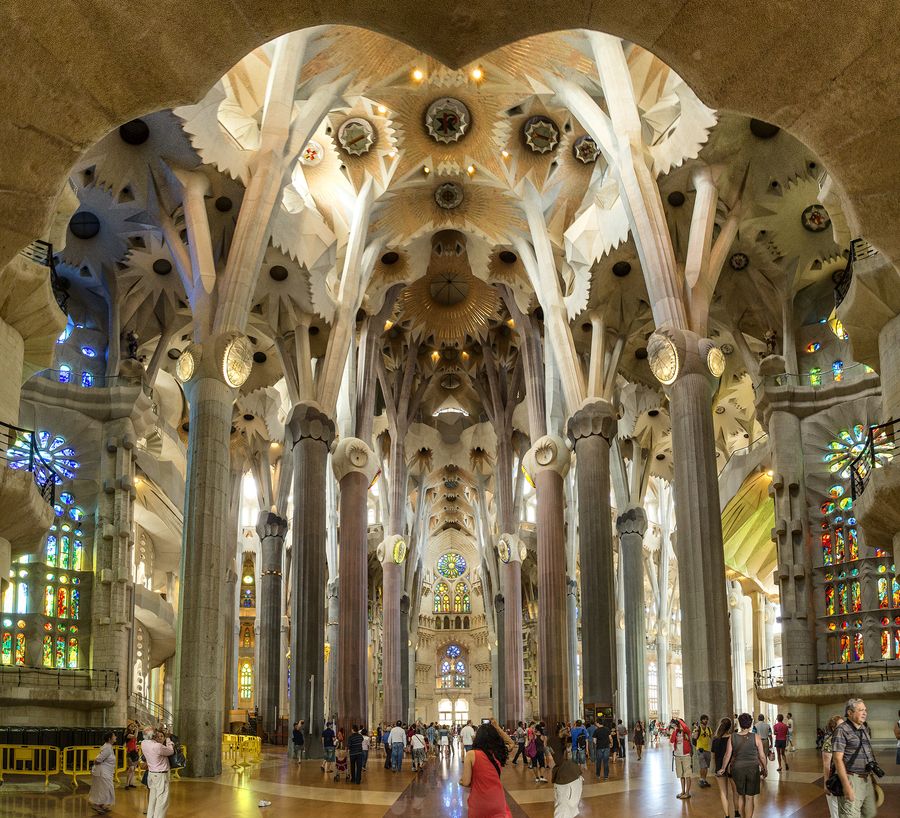
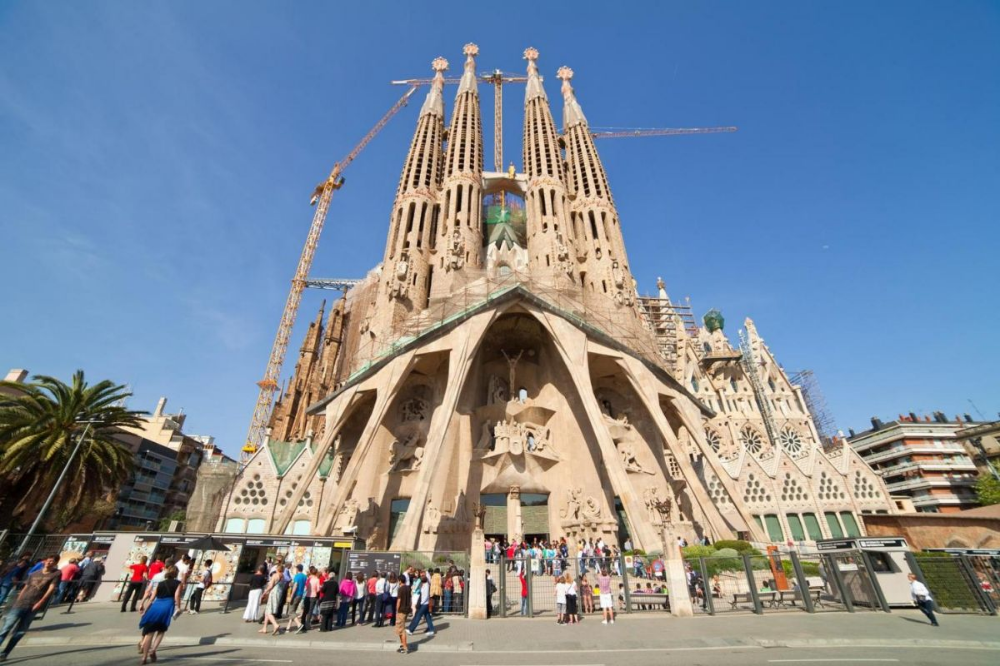
 In contrast to Roman or Gothic arches, which require buttresses, this type of arch minimises horizontal stress and distributes most of its forces to the foundations. This allows lateral buttresses to be reduced to such an extent that the arch is practically bare.
In contrast to Roman or Gothic arches, which require buttresses, this type of arch minimises horizontal stress and distributes most of its forces to the foundations. This allows lateral buttresses to be reduced to such an extent that the arch is practically bare.
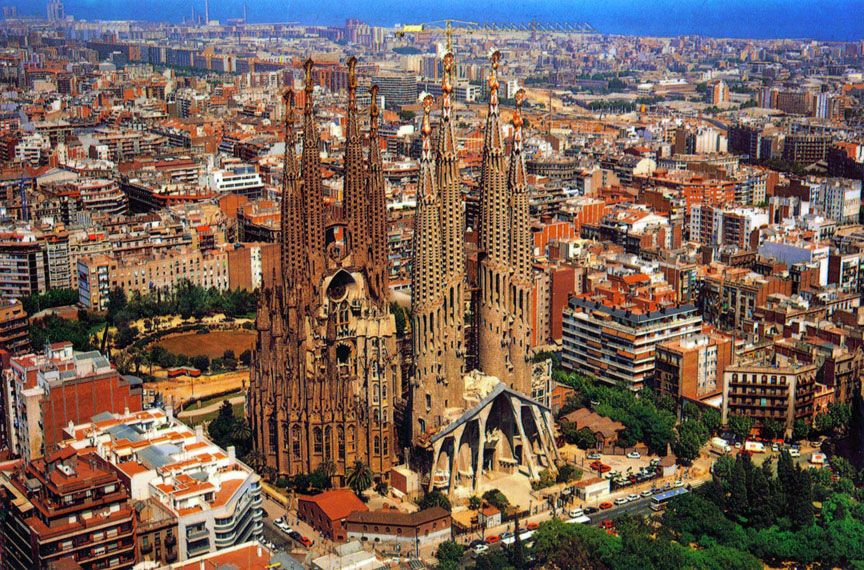
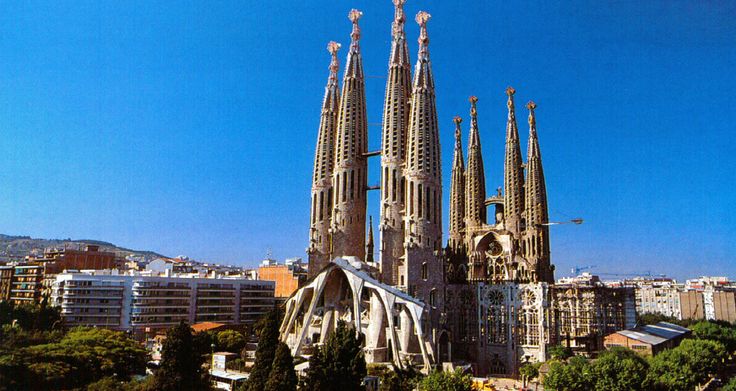 The entrances are separated by two columns with a turtle that represents the sea and the mountain. The access to the middle is decorated with the 3 Magi. Joseph, Mary and Jesus separate the doors.
The entrances are separated by two columns with a turtle that represents the sea and the mountain. The access to the middle is decorated with the 3 Magi. Joseph, Mary and Jesus separate the doors.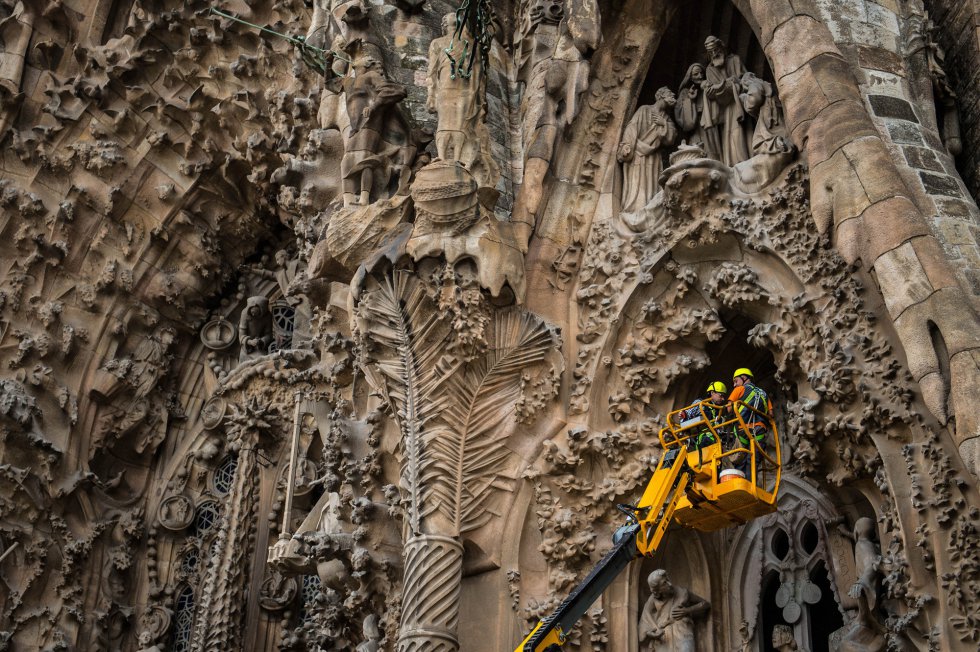 One of them is a 4×4 magic square, which vertically and horizontally always adds up to 33, the age of Christ at the time of the Passion. A similar square can be seen in the famous engraving “Melencolia” I by Albrecht Dürer.
One of them is a 4×4 magic square, which vertically and horizontally always adds up to 33, the age of Christ at the time of the Passion. A similar square can be seen in the famous engraving “Melencolia” I by Albrecht Dürer.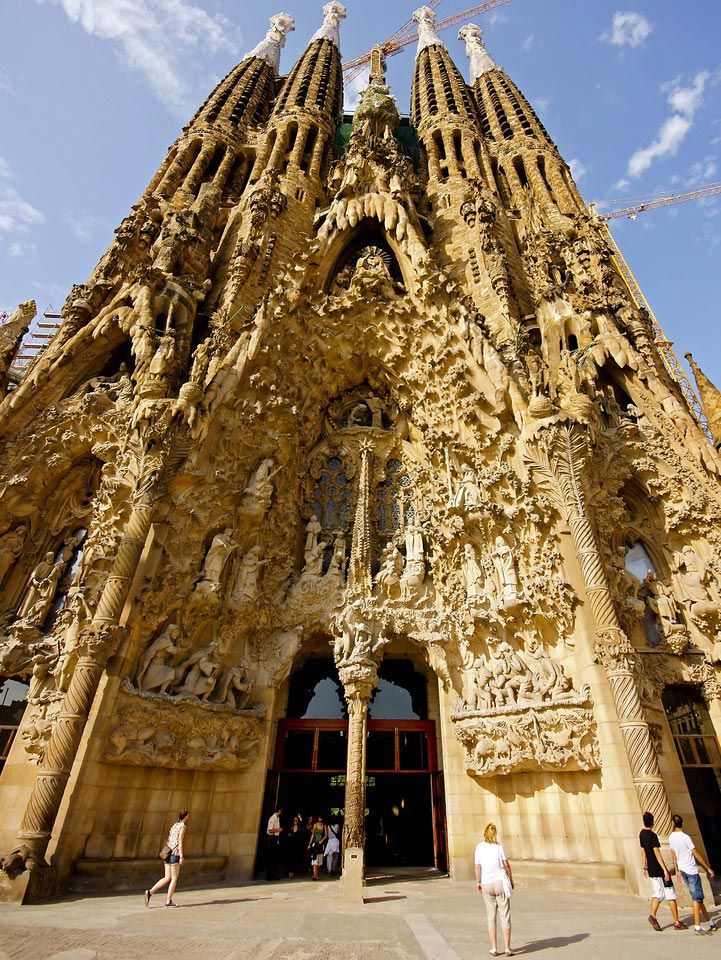 Gaudí. Church of the Sagrada Familia. Barcelona
Gaudí. Church of the Sagrada Familia. Barcelona 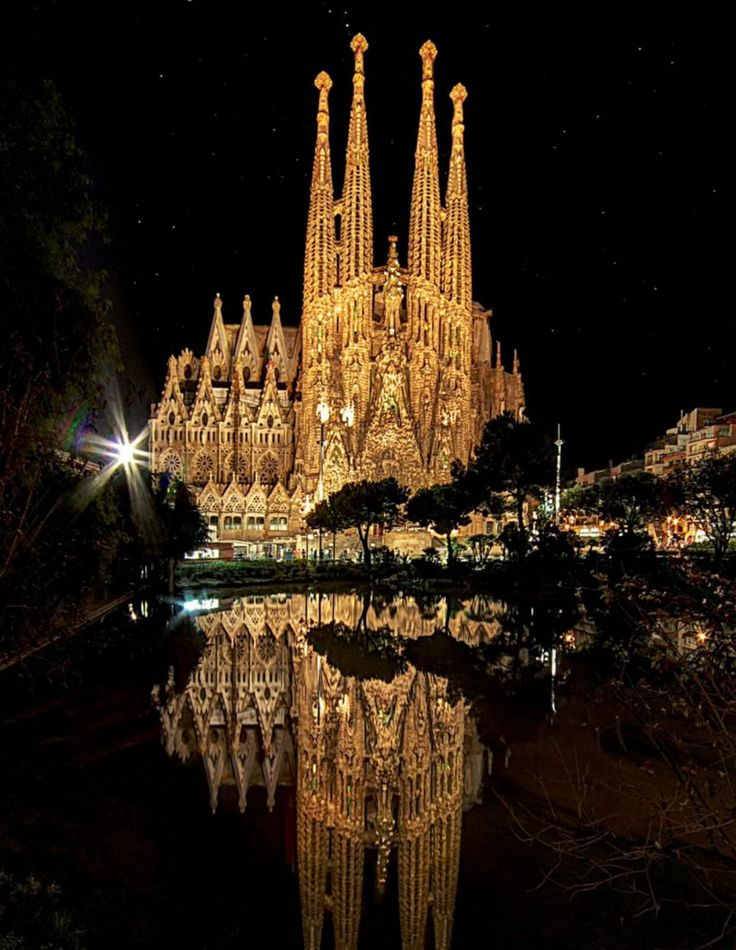 A. Gaudi. Sagrada surname. Barcelona.
A. Gaudi. Sagrada surname. Barcelona.  Masterpieces of architecture become real monuments to their creators and the era to which they belonged. However, there are such architectural beauties in the world that, standing with one foot in the past, with the other step into the future and continue to change their appearance and develop. Sagrada Familia (Sagrada Familia) in Barcelona is one such place.
Masterpieces of architecture become real monuments to their creators and the era to which they belonged. However, there are such architectural beauties in the world that, standing with one foot in the past, with the other step into the future and continue to change their appearance and develop. Sagrada Familia (Sagrada Familia) in Barcelona is one such place.  During construction, a variety of architects worked on it, including those from Gaudí’s students. Time dictated its fashion and features of the construction style, the walls of the temple were not spared by war and bad weather, and today it looks really bizarre. Outwardly, this is a majestic building, albeit a very, very specific one. Its walls are covered with bas-reliefs and stucco depicting various biblical scenes. Lancet windows and bell towers proudly rush up, towering over the city and their appearance changes from time to time in the process of construction.
During construction, a variety of architects worked on it, including those from Gaudí’s students. Time dictated its fashion and features of the construction style, the walls of the temple were not spared by war and bad weather, and today it looks really bizarre. Outwardly, this is a majestic building, albeit a very, very specific one. Its walls are covered with bas-reliefs and stucco depicting various biblical scenes. Lancet windows and bell towers proudly rush up, towering over the city and their appearance changes from time to time in the process of construction. 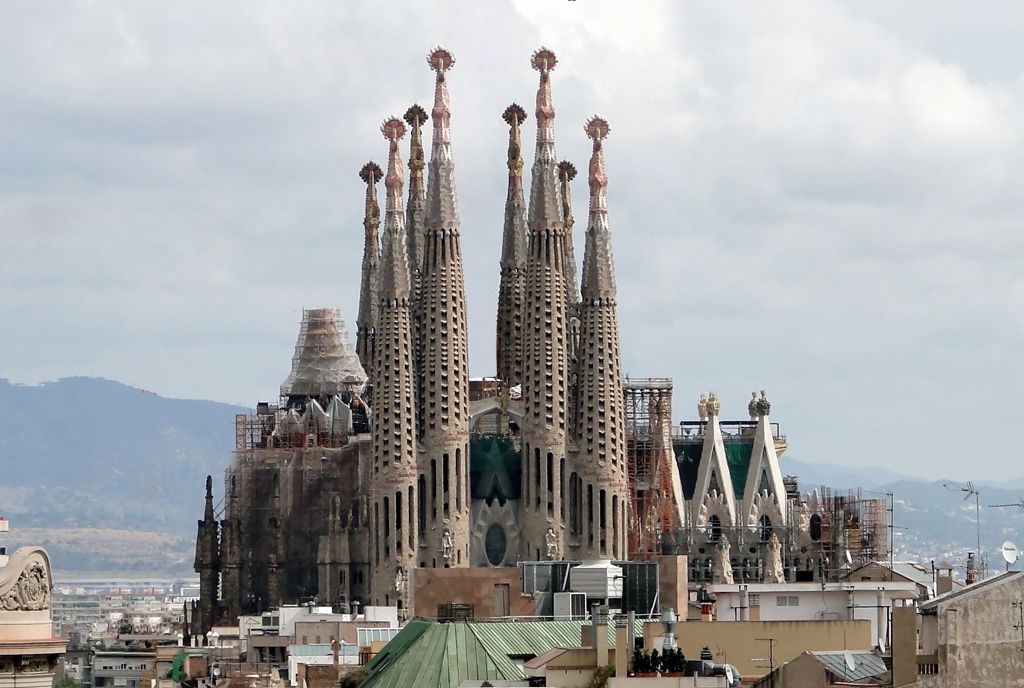
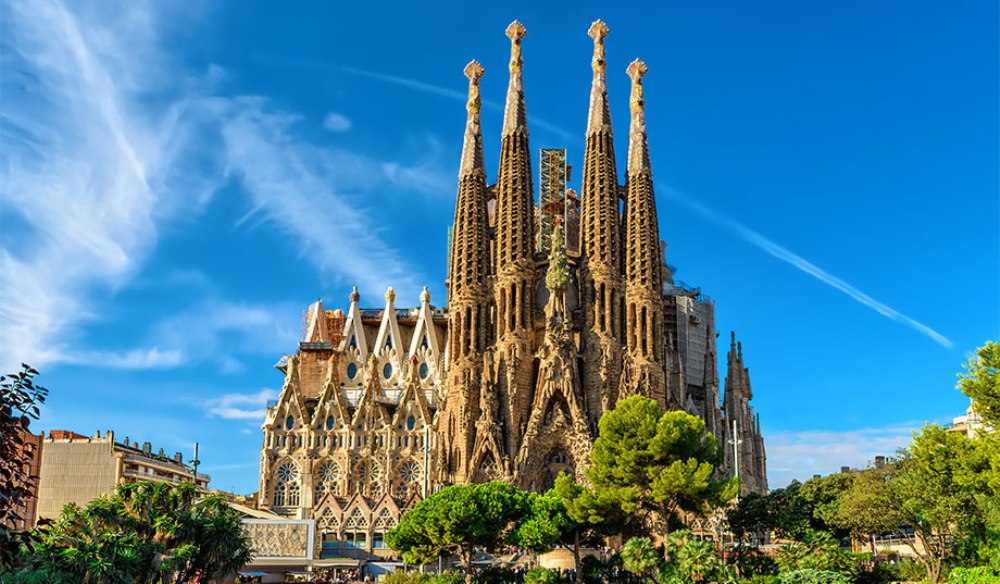 This solution also allows the panels to resist stresses imposed by wind and earthquakes.
This solution also allows the panels to resist stresses imposed by wind and earthquakes. 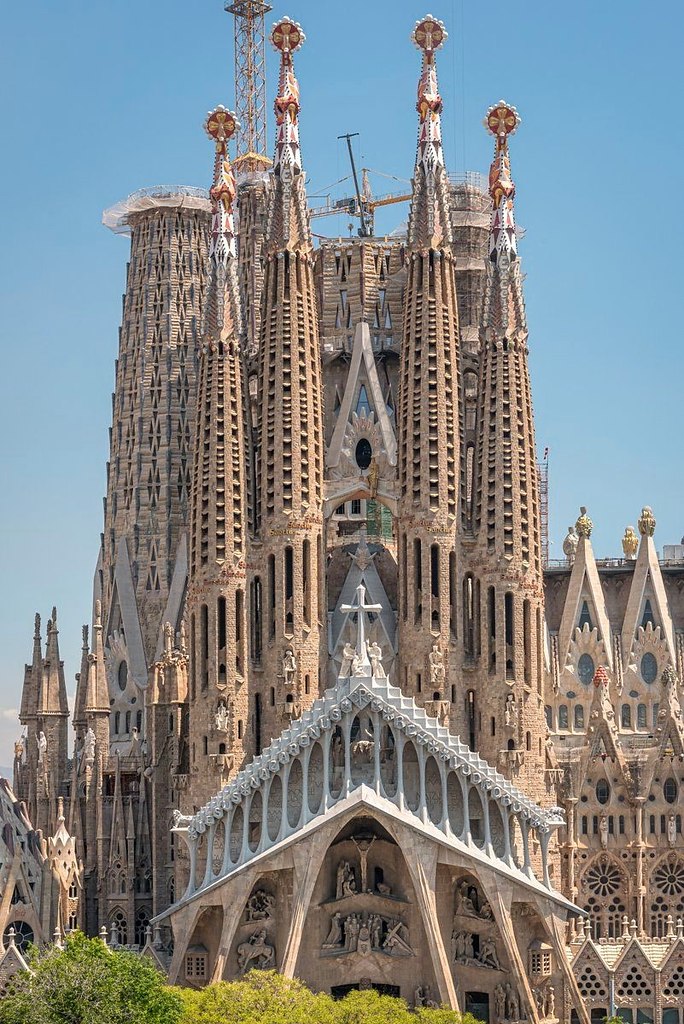 This parametric approach combines deep human knowledge of the structural variables in the Towers’ form and position, with powerful algorithmic tools that could model the hundreds of subtle variations of geometries for the design. This human-plus-digital ethos was the best way to make Gaudí’s design pragmatic to construct in a realistic timeframe, and would have been unrealistically laborious to carry out without cutting-edge technology.
This parametric approach combines deep human knowledge of the structural variables in the Towers’ form and position, with powerful algorithmic tools that could model the hundreds of subtle variations of geometries for the design. This human-plus-digital ethos was the best way to make Gaudí’s design pragmatic to construct in a realistic timeframe, and would have been unrealistically laborious to carry out without cutting-edge technology.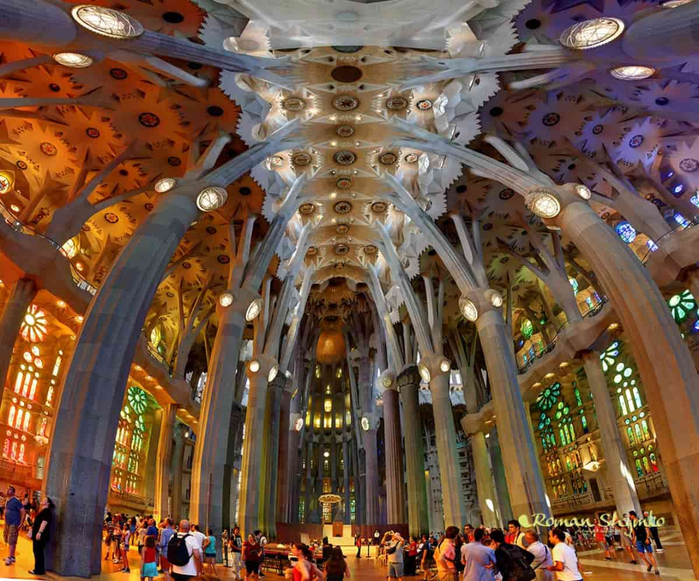
 Gaudi used plaster models to develop the design, including a 1:10 scale model of the main nave measuring five meters in height and width by two meters in depth. He also devised a system of strings and weights suspended from a plan of the temple on the ceiling. From this inverted model he derived the necessary angles of the columns, vaults, and arches. This is evident in the slanted columns of the Passion facade, which recall tensile structures but act in compression.
Gaudi used plaster models to develop the design, including a 1:10 scale model of the main nave measuring five meters in height and width by two meters in depth. He also devised a system of strings and weights suspended from a plan of the temple on the ceiling. From this inverted model he derived the necessary angles of the columns, vaults, and arches. This is evident in the slanted columns of the Passion facade, which recall tensile structures but act in compression.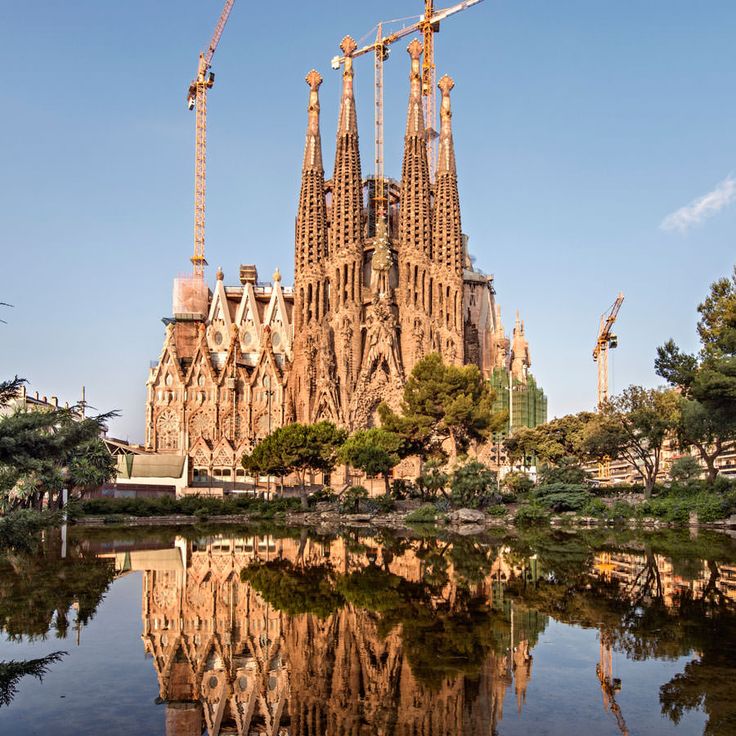 ” [1]
” [1]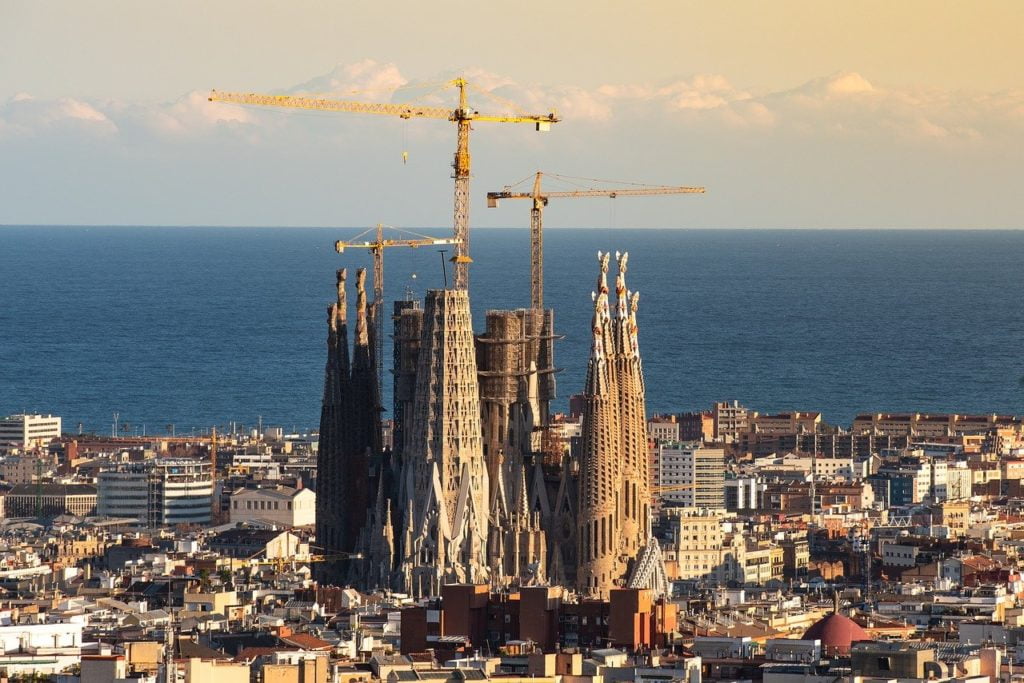 It could indicate city/country but not exact address.
It could indicate city/country but not exact address. 0
0 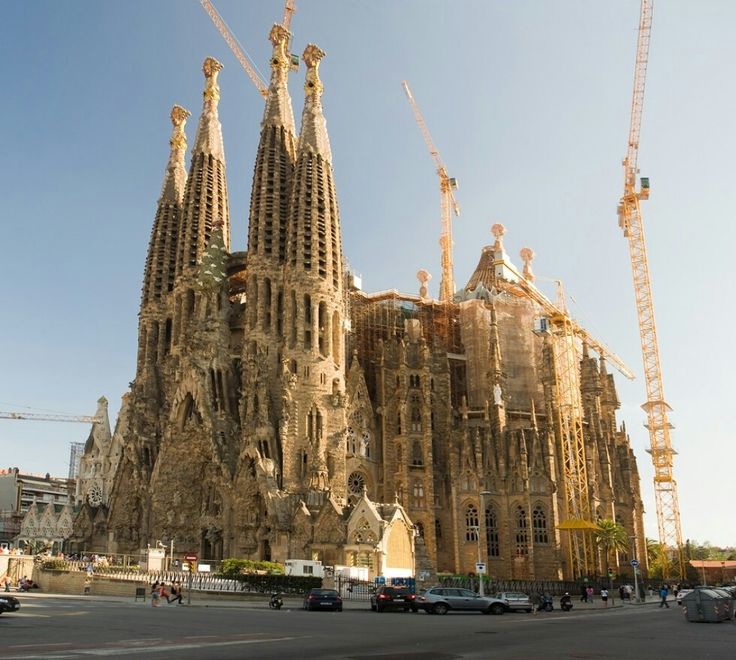 Travelers who have already been on excursions left 183 reviews with live photos. Prices start from €20
Travelers who have already been on excursions left 183 reviews with live photos. Prices start from €20  Construction | izi.TRAVEL
Construction | izi.TRAVEL
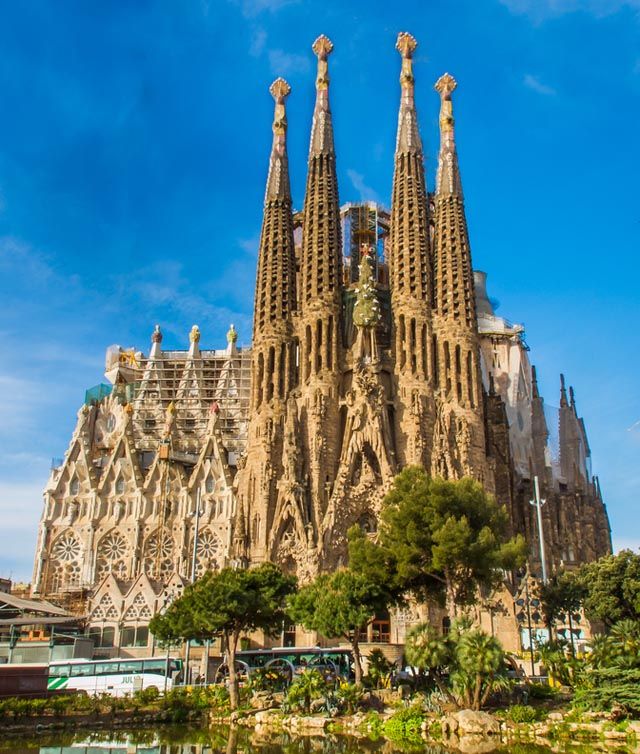 His great project, on which he worked obsessively, was to be “a cathedral for the poor” – and yet he forged his reputation building extravagant villas for Catalan millionaires and courting wealthy patrons. This intimate relationship between money and the church was precisely what fuelled the Catalan suspicion of the clergy.
His great project, on which he worked obsessively, was to be “a cathedral for the poor” – and yet he forged his reputation building extravagant villas for Catalan millionaires and courting wealthy patrons. This intimate relationship between money and the church was precisely what fuelled the Catalan suspicion of the clergy.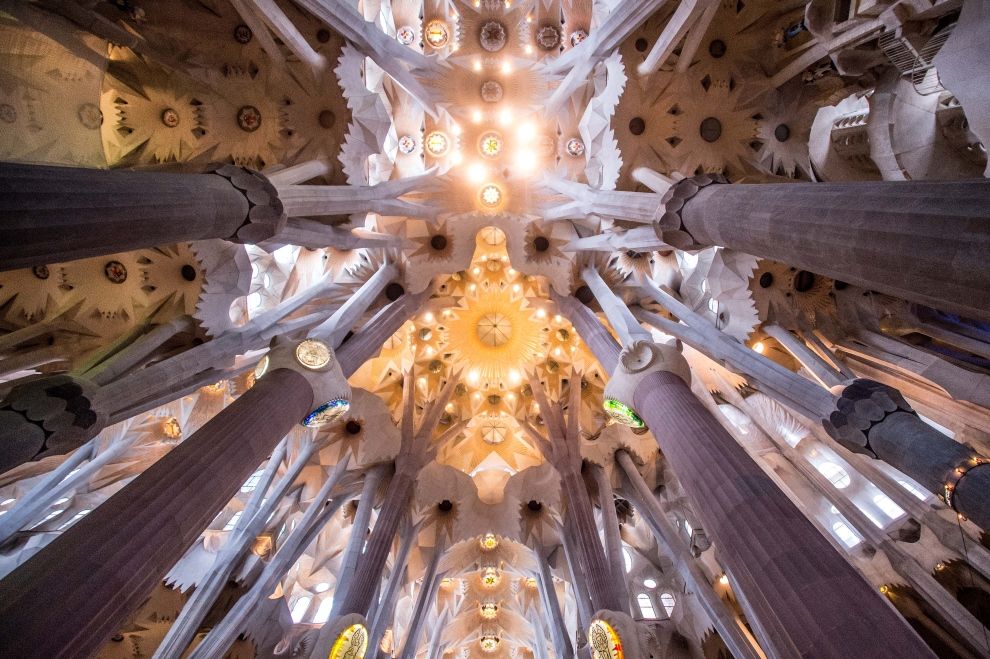 Some, like Le Corbusier and Walter Gropius, thought it should have been left alone as a folly. Others insisted that the use of new materials – reinforced concrete rather than stone, and now 3D printing – cheapened Gaudí’s original ideals. The new build, some argued, was a shoddy job, badly executed.
Some, like Le Corbusier and Walter Gropius, thought it should have been left alone as a folly. Others insisted that the use of new materials – reinforced concrete rather than stone, and now 3D printing – cheapened Gaudí’s original ideals. The new build, some argued, was a shoddy job, badly executed.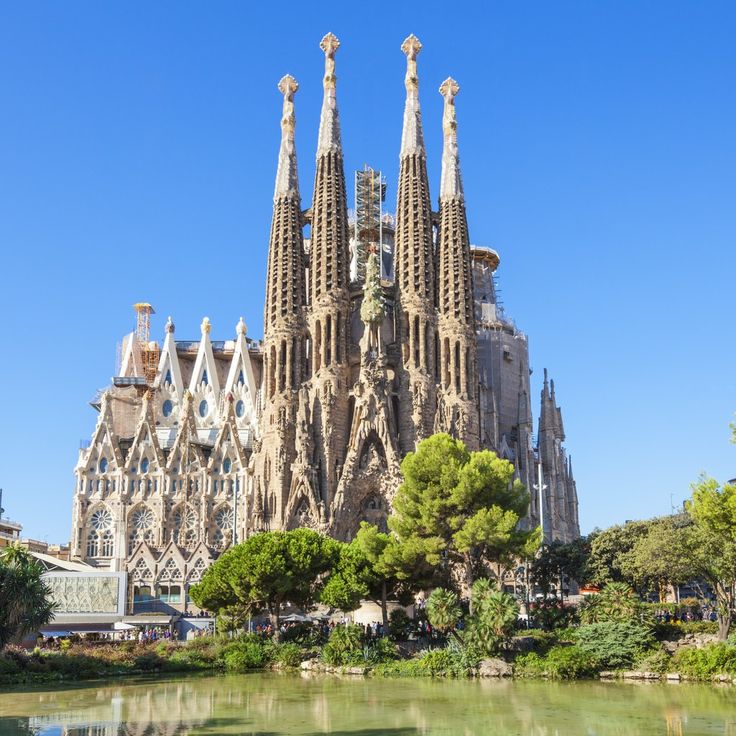 The greens, blues, yellows and reds of the light coming through Joan Vila Grau’s stained-glass windows create a dappled effect with constantly shifting patterns illuminating the stone, decorated by grapes, cherries and flowers. “The heavens declare the glory of God; and the firmament sheweth his handywork” is how Psalm 19 described creation. Gaudí and his successors just copied it – the latter with quite a lot of help from the latest computer modelling software.
The greens, blues, yellows and reds of the light coming through Joan Vila Grau’s stained-glass windows create a dappled effect with constantly shifting patterns illuminating the stone, decorated by grapes, cherries and flowers. “The heavens declare the glory of God; and the firmament sheweth his handywork” is how Psalm 19 described creation. Gaudí and his successors just copied it – the latter with quite a lot of help from the latest computer modelling software.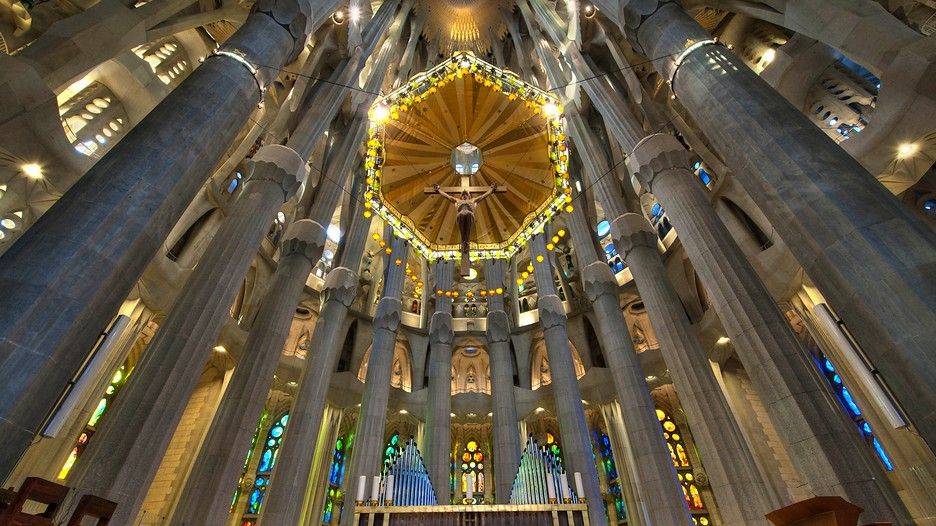 All of which – stone, light, verticality – are the central ingredients of the medieval cathedral too. Indeed, for all its contemporary decoration and geometrical wizardry, it is still a remarkably traditional building.
All of which – stone, light, verticality – are the central ingredients of the medieval cathedral too. Indeed, for all its contemporary decoration and geometrical wizardry, it is still a remarkably traditional building.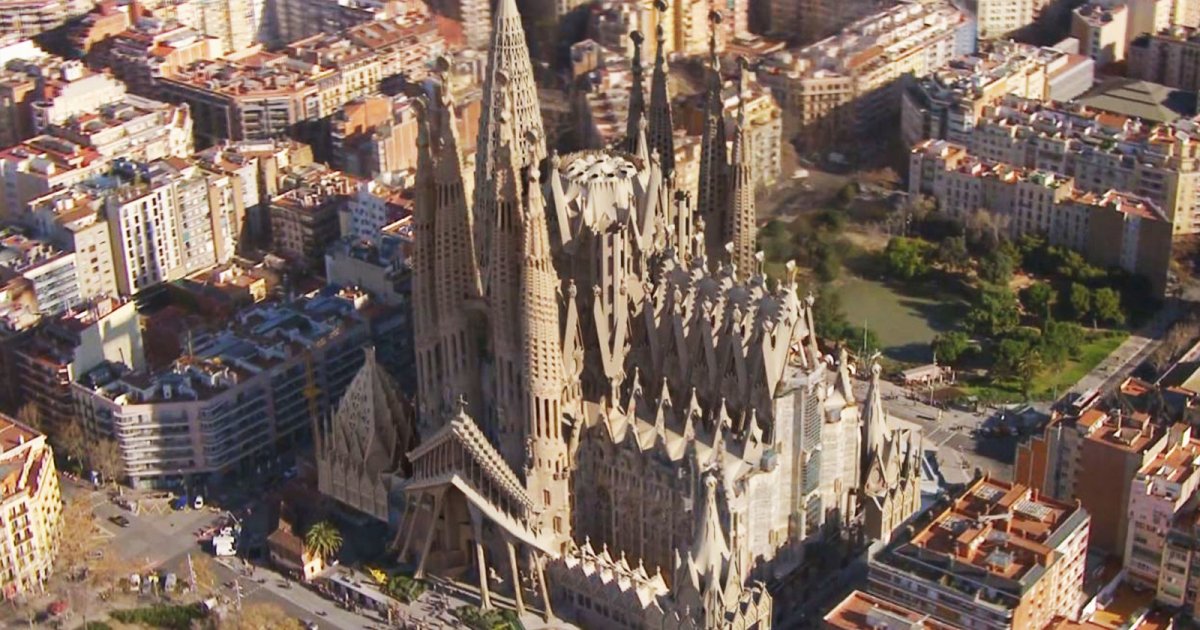 But when the Roman Empire absorbed Christianity into itself, thus creating Christendom, it bought off the Jesus movement’s radical, almost anarchist-like instincts with a fancy building programme. Now Christendom is almost dead, churches like the Sagrada Família feel like the effervescence of a bygone age. If Christianity has a future, it won’t be because of places such as these.
But when the Roman Empire absorbed Christianity into itself, thus creating Christendom, it bought off the Jesus movement’s radical, almost anarchist-like instincts with a fancy building programme. Now Christendom is almost dead, churches like the Sagrada Família feel like the effervescence of a bygone age. If Christianity has a future, it won’t be because of places such as these.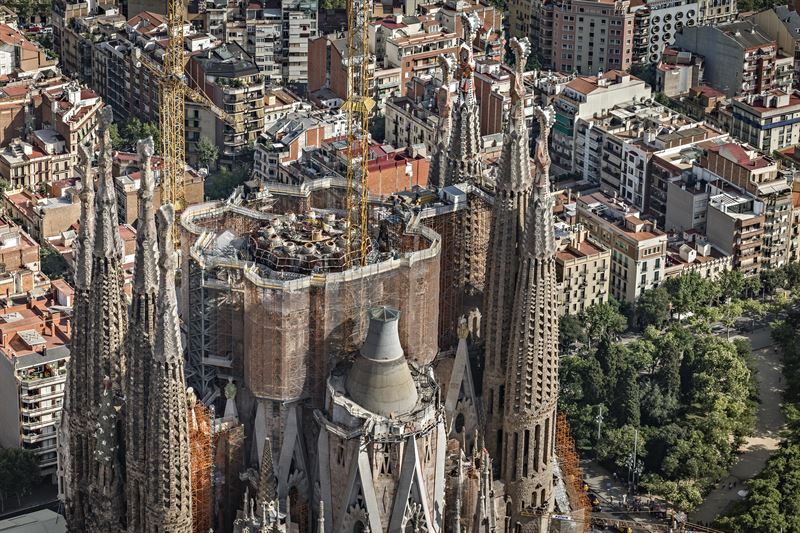 ), but the inside was finally completed, freed of scaffolding and consecrated by Pope Benedict in 2010.
), but the inside was finally completed, freed of scaffolding and consecrated by Pope Benedict in 2010.
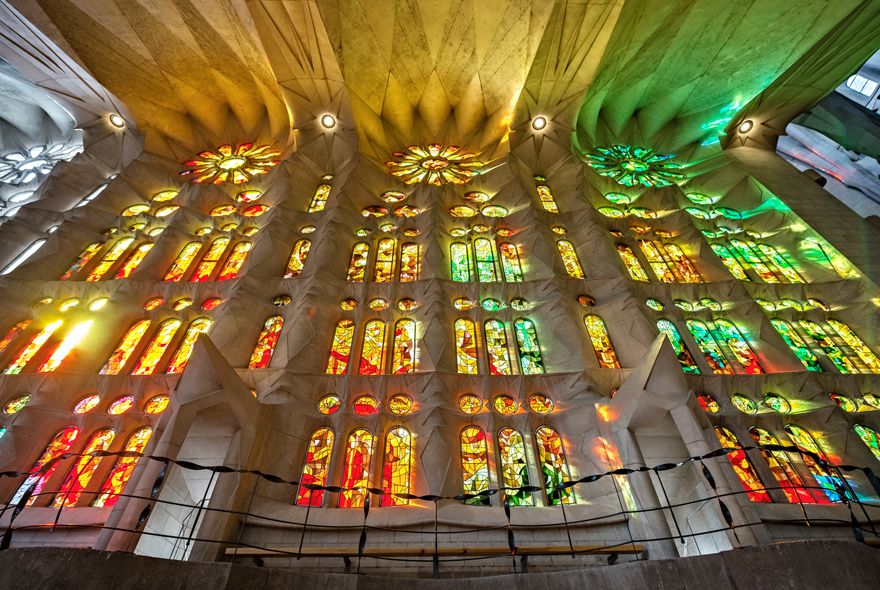 The windows were designed to send the sound of the bells down to the ground, not to show people’s the views, so most of the time the views aren’t that great.
The windows were designed to send the sound of the bells down to the ground, not to show people’s the views, so most of the time the views aren’t that great.
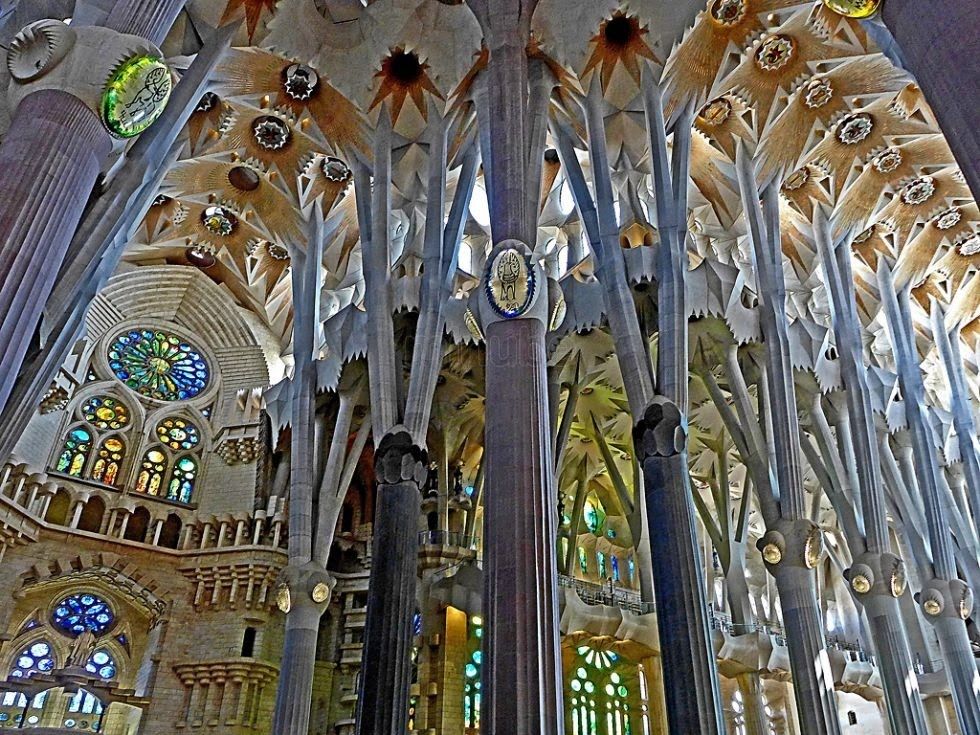 It’s also an Expiatory Temple built to expire (to forgive) people’s sins through their donations. And it’s also a Minor Basilica after Pope Benedict declared it so on the day of its dedication on November 7, 2010.
It’s also an Expiatory Temple built to expire (to forgive) people’s sins through their donations. And it’s also a Minor Basilica after Pope Benedict declared it so on the day of its dedication on November 7, 2010. 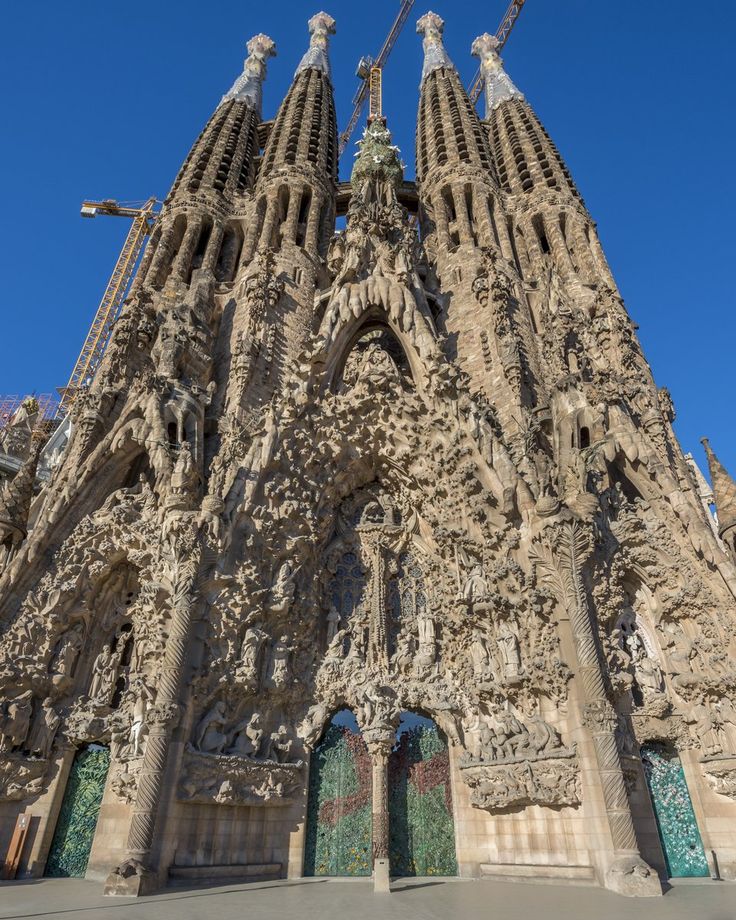 The Expiatory Temple of the Sagrada Familia (the same Sagrada Família) is the main attraction of the Catalan capital. Since 2010, it has the status of a Minor Papal Basilica.
The Expiatory Temple of the Sagrada Familia (the same Sagrada Família) is the main attraction of the Catalan capital. Since 2010, it has the status of a Minor Papal Basilica.  By 1977, he had acquired four towers. Sculptures appeared on them already in the 21st century. In 2002, the construction of the last facade – Resurrection – began.
By 1977, he had acquired four towers. Sculptures appeared on them already in the 21st century. In 2002, the construction of the last facade – Resurrection – began. 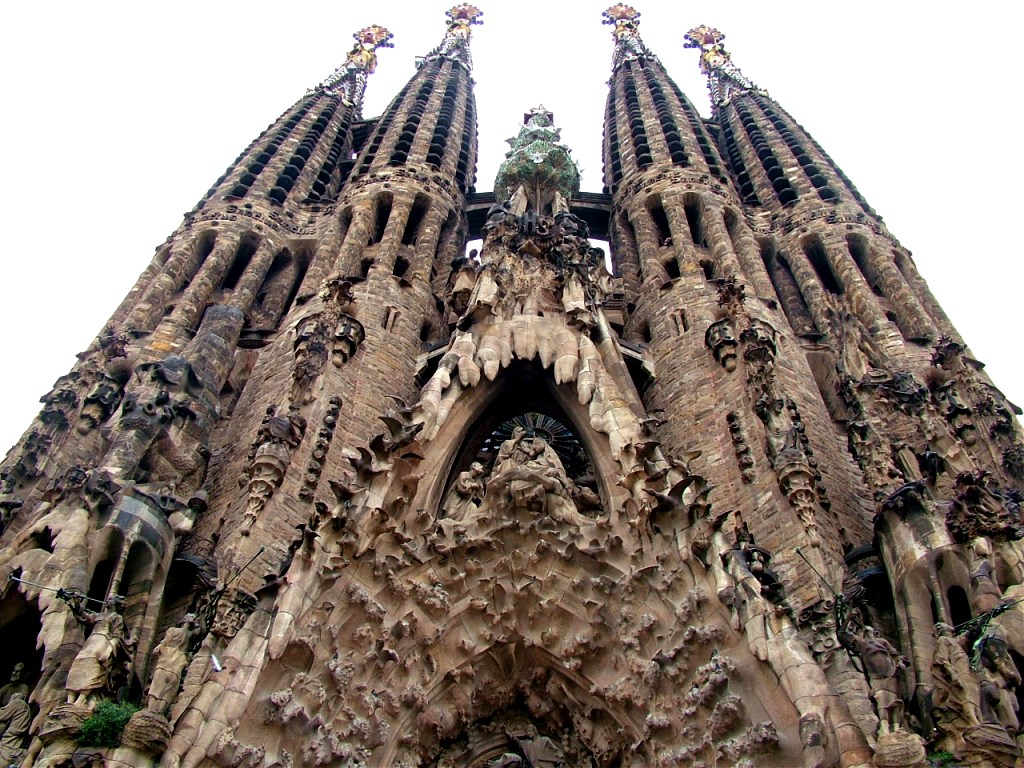 The height of the tower of the Virgin Mary is 123 m, and the towers of the Evangelists John, Luke, Mark and Matthew are 125 m high. They are decorated with sculptures of their symbols – a calf, a man, an eagle and a lion.
The height of the tower of the Virgin Mary is 123 m, and the towers of the Evangelists John, Luke, Mark and Matthew are 125 m high. They are decorated with sculptures of their symbols – a calf, a man, an eagle and a lion.  All external details carry a semantic load, displaying biblical scenes. The interior is decorated with only four sculptures: Like ascetic Protestant churches, inside the temple nothing distracts from communion with God.
All external details carry a semantic load, displaying biblical scenes. The interior is decorated with only four sculptures: Like ascetic Protestant churches, inside the temple nothing distracts from communion with God. 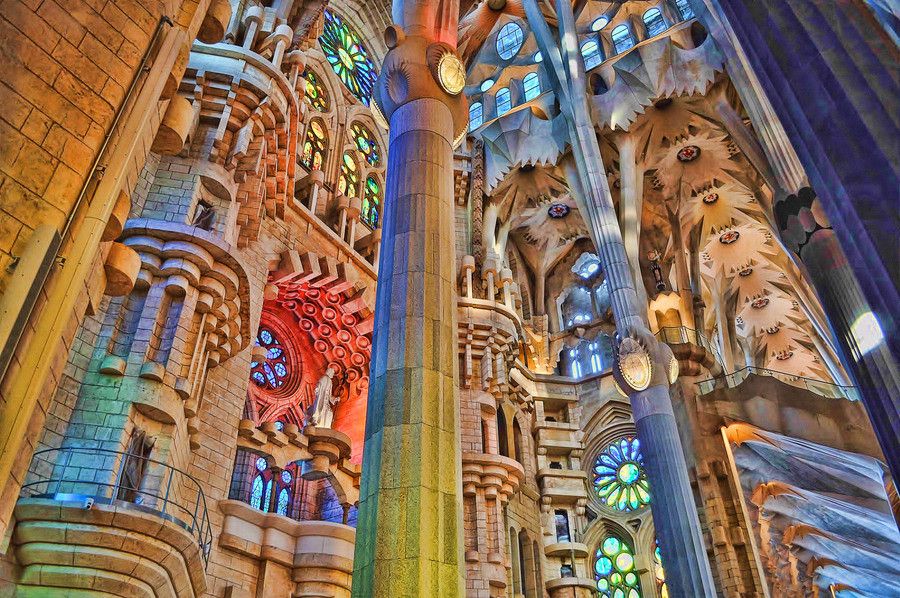 Sundays from 10:30 to 18:00.
Sundays from 10:30 to 18:00. 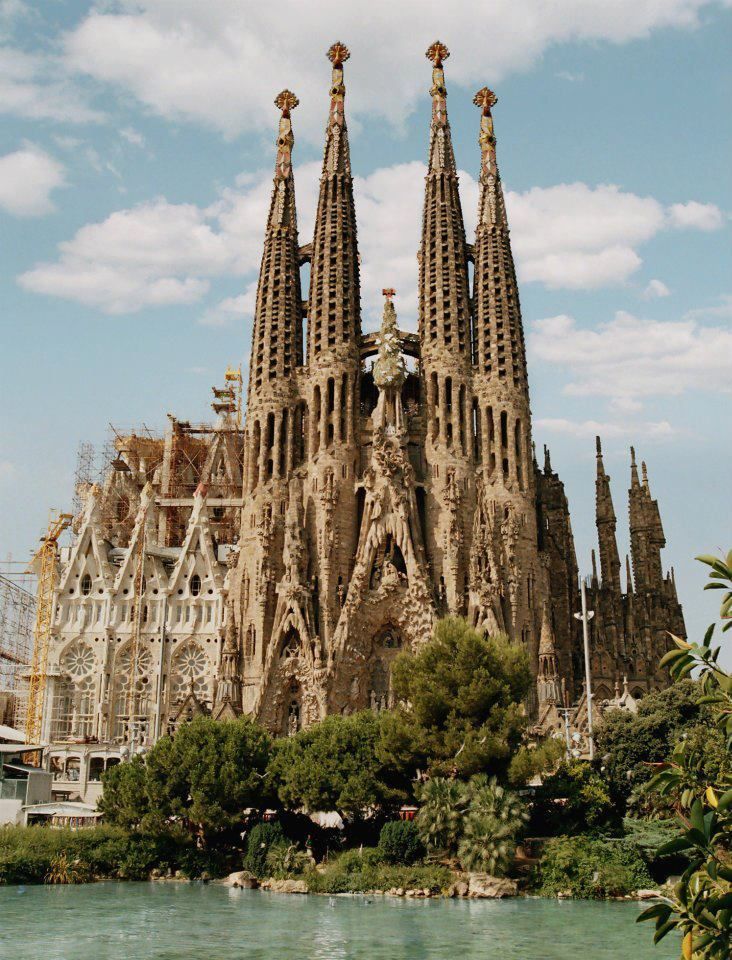
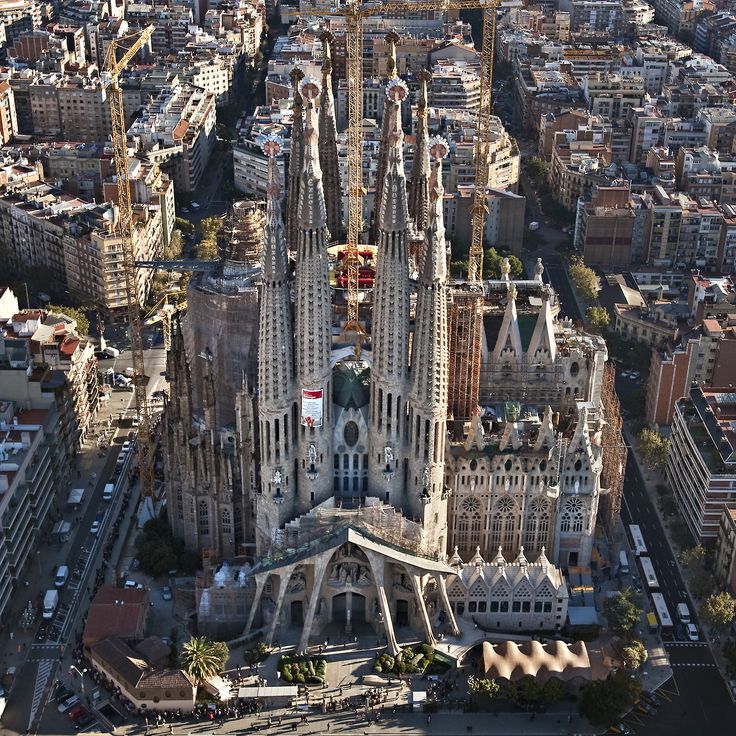 The temple was supposed to embody, according to the plan of the master, the dominant ideas of the New Testament. But – alas! Gaudi never managed to see with his own eyes the greatest project of his life: he died at 1926, and the full completion of the work is timed only for 2024 – a hundred years later than his death.
The temple was supposed to embody, according to the plan of the master, the dominant ideas of the New Testament. But – alas! Gaudi never managed to see with his own eyes the greatest project of his life: he died at 1926, and the full completion of the work is timed only for 2024 – a hundred years later than his death. 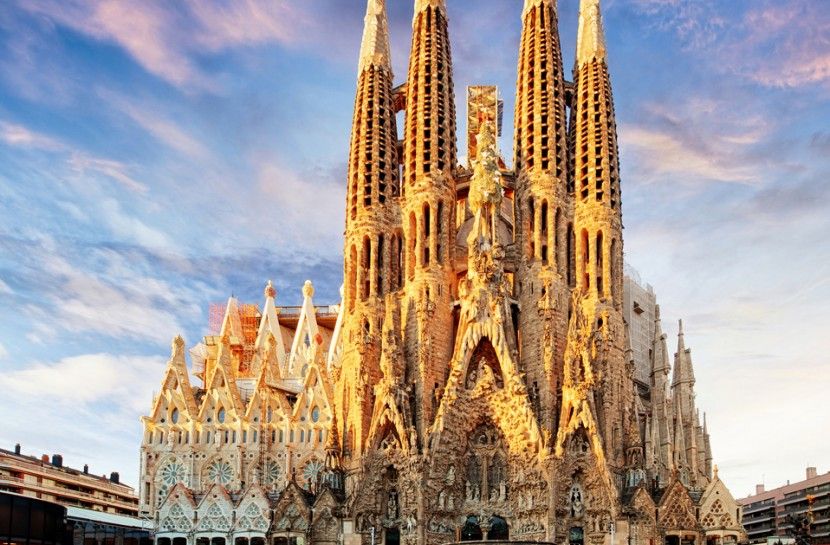 Inside the church, visitors will find, among other things, the Gaudí Museum and an observation deck with a breathtaking view of fabulous Barcelona.
Inside the church, visitors will find, among other things, the Gaudí Museum and an observation deck with a breathtaking view of fabulous Barcelona. 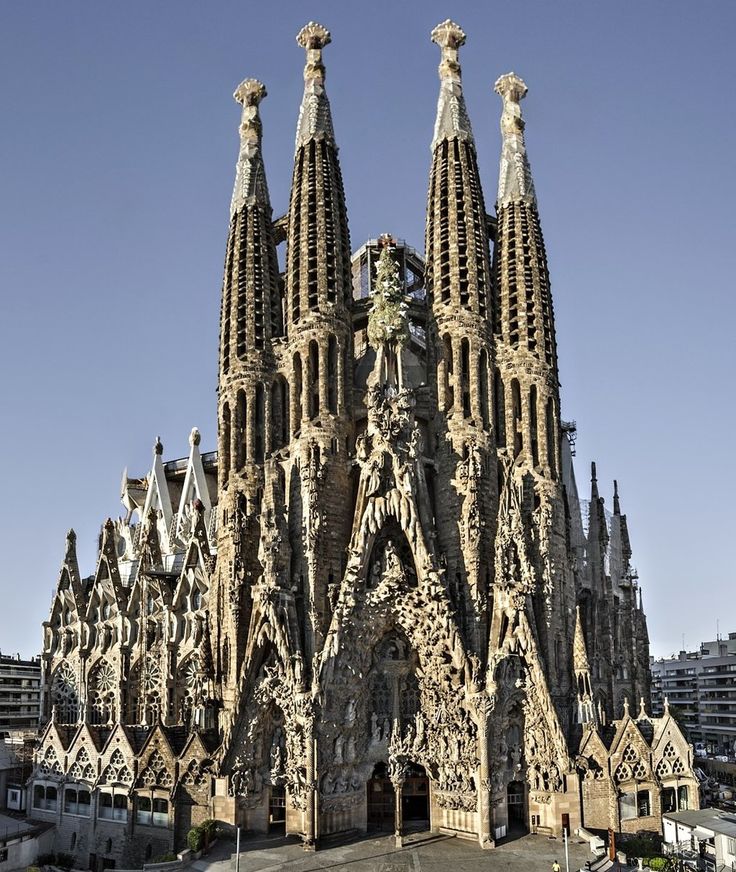 So I decided to play tourist. I was speaking at a conference in Girona, but I couldn’t pass the chance to finally experience Barcelona. Two days isn’t long, and having a speech to prep, I did only the bare minimum research. When visiting La Sagrada Familia, I knew two key facts: 1) it’s still under construction and 2) Antoni Gaudí designed it as his masterpiece.
So I decided to play tourist. I was speaking at a conference in Girona, but I couldn’t pass the chance to finally experience Barcelona. Two days isn’t long, and having a speech to prep, I did only the bare minimum research. When visiting La Sagrada Familia, I knew two key facts: 1) it’s still under construction and 2) Antoni Gaudí designed it as his masterpiece.  Unlike any church I had seen before, the curious shapes, curves, and figures lining the façade became gradually clearer as I approached.
Unlike any church I had seen before, the curious shapes, curves, and figures lining the façade became gradually clearer as I approached.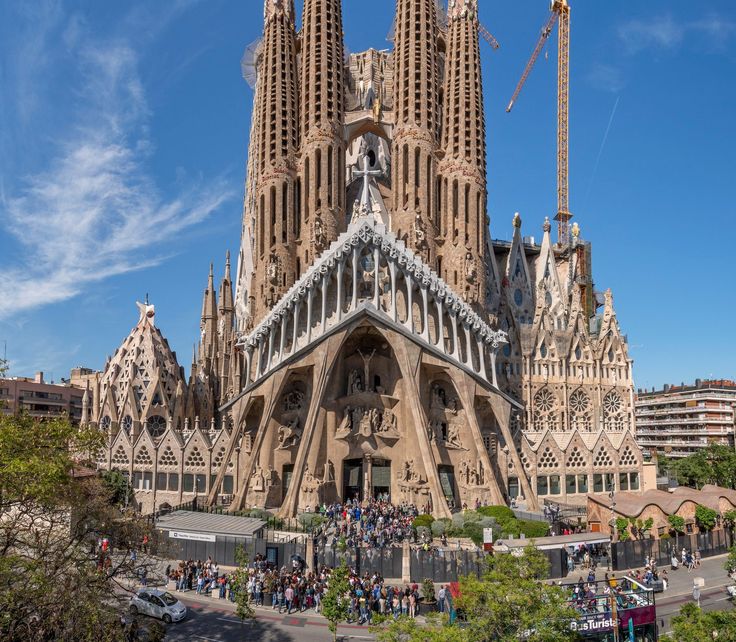
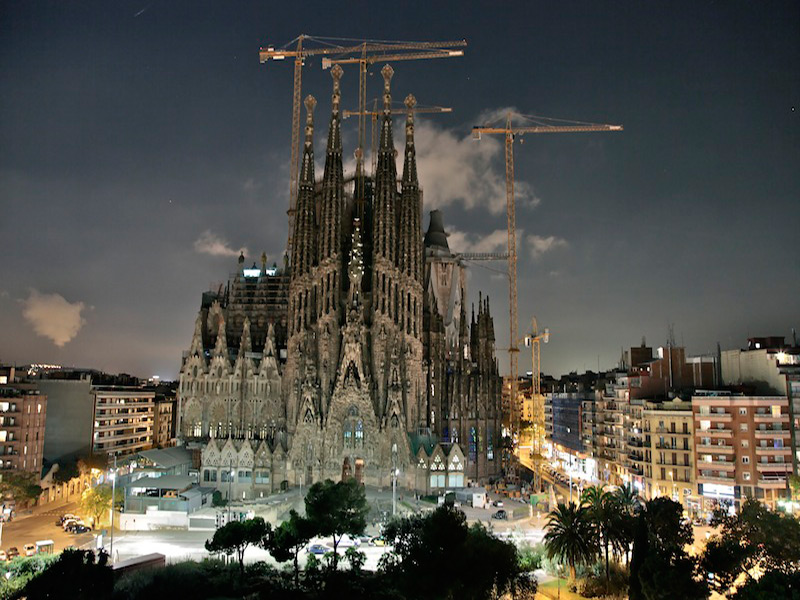 It is located on the western side of the church and faces the mountain of Montjuïc.
It is located on the western side of the church and faces the mountain of Montjuïc. 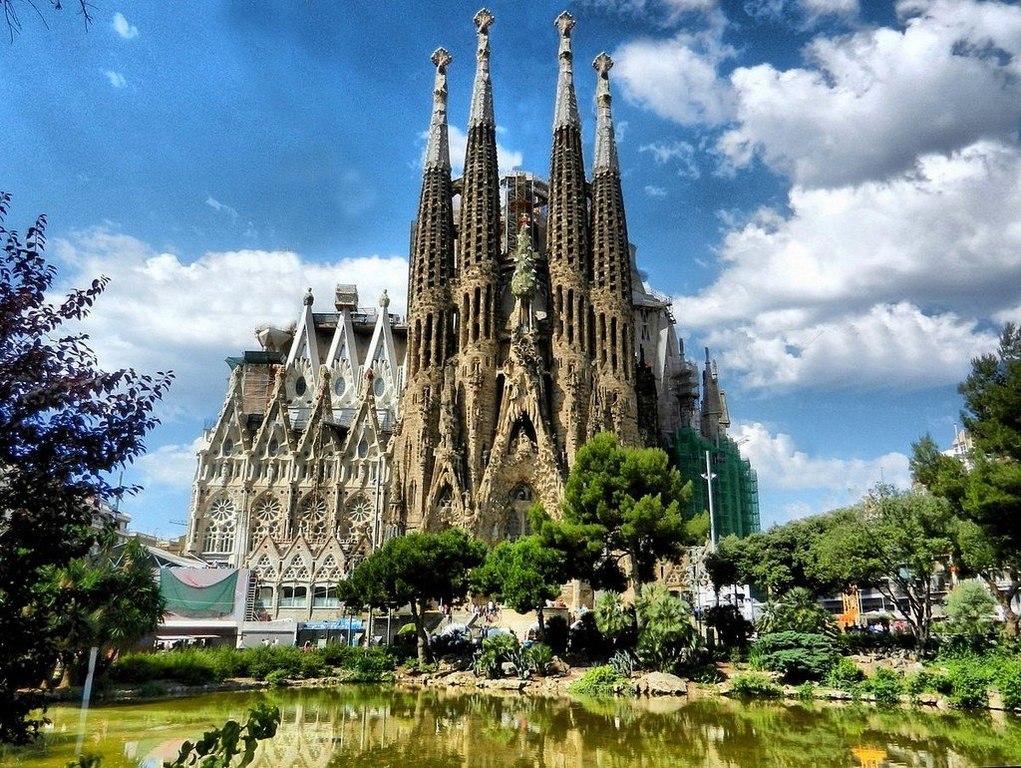 Instead, I craned my neck and gawked to the descriptions on my audio guide. Each footfall inside the church brought into view new twisting, tree-like columns branching out as they climbed upward. Each heartbeat allowed a glimmer of sunlight to dapple through into the interior, as if to bath me in a orchard warm breeze.
Instead, I craned my neck and gawked to the descriptions on my audio guide. Each footfall inside the church brought into view new twisting, tree-like columns branching out as they climbed upward. Each heartbeat allowed a glimmer of sunlight to dapple through into the interior, as if to bath me in a orchard warm breeze.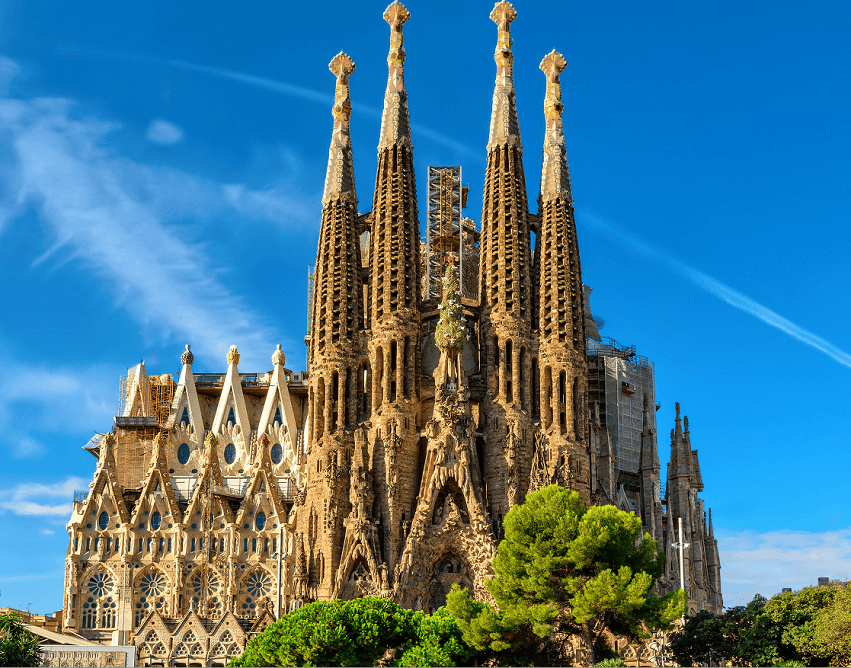 (I revisited the church years later, in 2017 and in 2019, and the architects had made startling progress on the windows and interiors, as well as several of the towers!).
(I revisited the church years later, in 2017 and in 2019, and the architects had made startling progress on the windows and interiors, as well as several of the towers!). (current prices)
(current prices)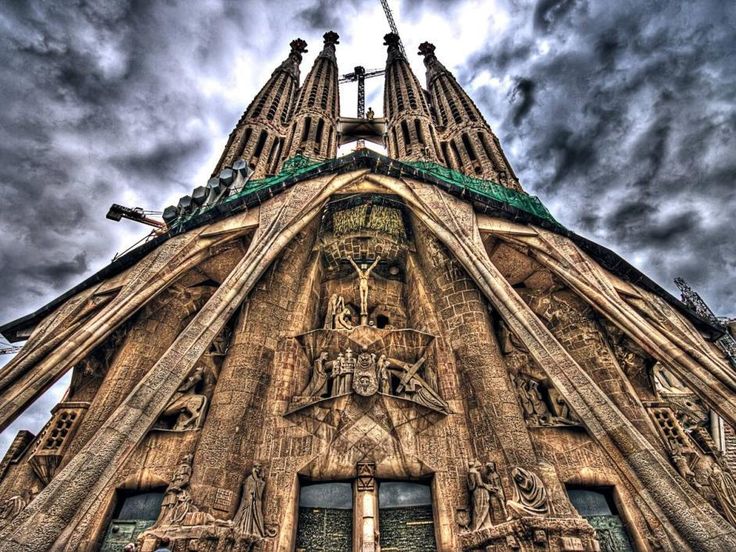 I was there for over an hour listening to the audioguide and wandering; it was relatively uncrowded at the end of the day. My photos also came out better by not visiting at high-noon. I visited in the morning on subsequent trips (around 9am) and it was also lovely. If you plan a late afternoon visit, you can then have a pre-dinner drink at Ayre Hotel Rosellon, which has stunning views of La Sagrada from its large rooftop terrace.
I was there for over an hour listening to the audioguide and wandering; it was relatively uncrowded at the end of the day. My photos also came out better by not visiting at high-noon. I visited in the morning on subsequent trips (around 9am) and it was also lovely. If you plan a late afternoon visit, you can then have a pre-dinner drink at Ayre Hotel Rosellon, which has stunning views of La Sagrada from its large rooftop terrace.  Ceramica Forma
Ceramica Forma 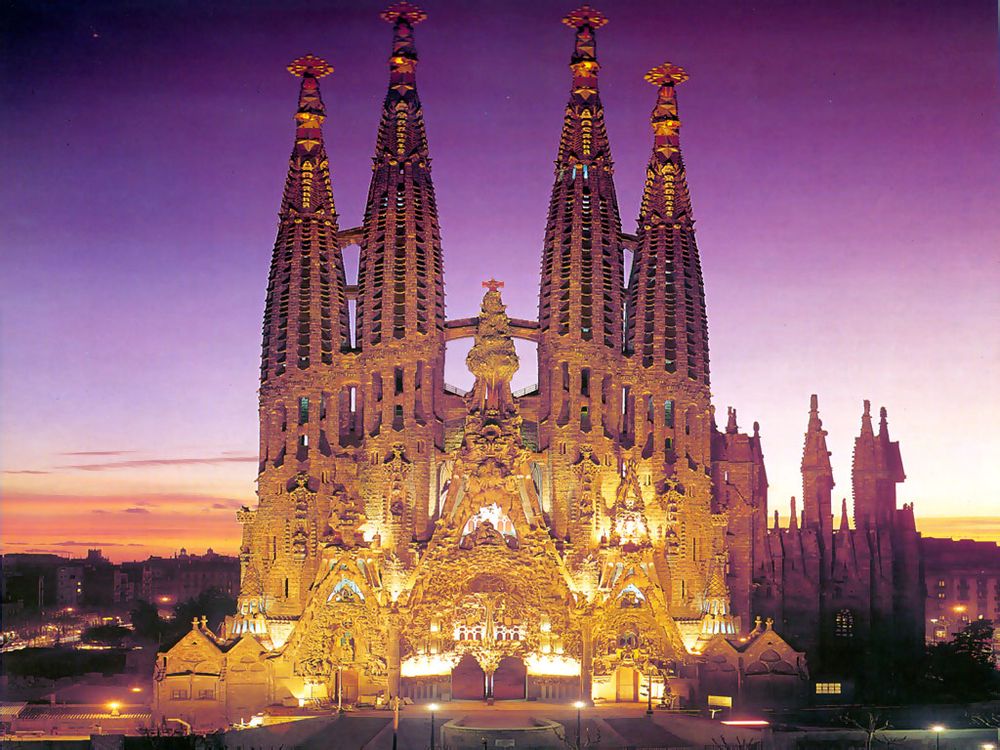 Mr. Bike Barcelona
Mr. Bike Barcelona 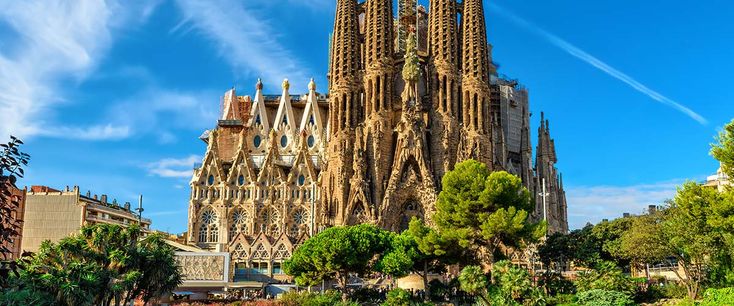 com/y6q2t88p
com/y6q2t88p The Gaudí Bundle includes skip-the-line access to both attractions as well as many other exclusive features.
The Gaudí Bundle includes skip-the-line access to both attractions as well as many other exclusive features. 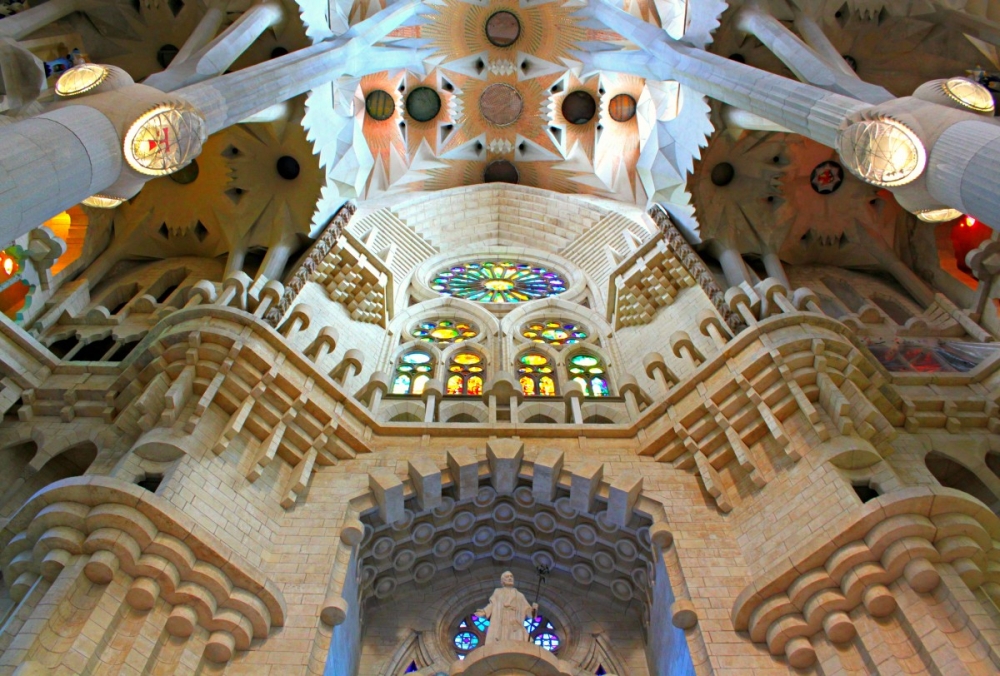 The Gaudí Bundle includes skip-the-line access to both attractions as well as many other exclusive features.
The Gaudí Bundle includes skip-the-line access to both attractions as well as many other exclusive features. 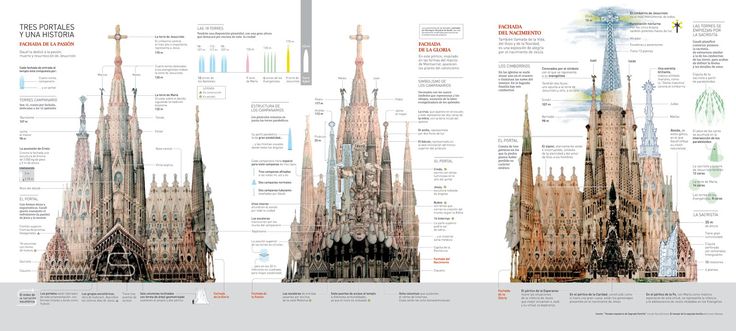
 00
00 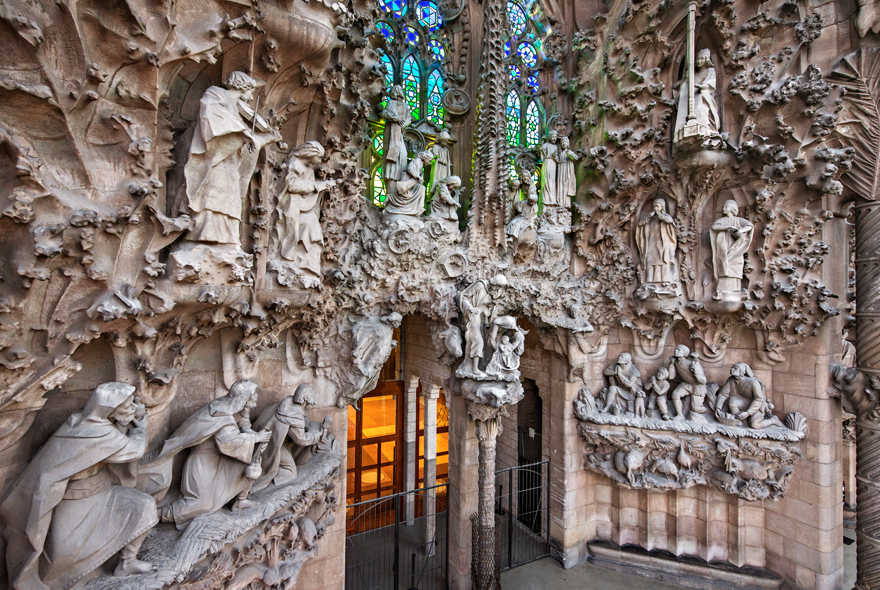 Some things are worth putting together.
Some things are worth putting together. 
 ..
..
 Over time, the “architect from God” left work on all other projects and completely focused on the construction of the temple, which he was engaged in until his death at 1926 year.
Over time, the “architect from God” left work on all other projects and completely focused on the construction of the temple, which he was engaged in until his death at 1926 year. 